bike sharing
description: system enabling communal bicycles to be shared, often in an urban setting
157 results

Building the Cycling City: The Dutch Blueprint for Urban Vitality
by
Melissa Bruntlett
and
Chris Bruntlett
Published 27 Aug 2018
The city was, in fact, home to the country’s first underground bike-parking facility, built in 1938. Demand has since skyrocketed, and officials are currently building a number of large and ample fietsenstallingen (“bike parking lots”) in and around the city center. In 2001, Utrecht was the natural choice to serve as the pilot city for OV-Fiets, the national bike-rental scheme: a convenient service that has expanded exponentially to strengthen the powerful bike–train combination. Over a period of 30 years, officials in Utrecht have gone from believing the bike would become extinct to beginning to cater to cyclists, but Wagenbuur insists that it wasn’t until the early nineties that cycling found its rightful place near the top of the transportation hierarchy.
…
For her, it means taking the CROW design principles of cohesion, directness, safety, attractiveness, and comfort, and continuing to apply them through the door and onto the platform. While it is still early in the pilot project process, BiTiBi’s partners in Liverpool, Milan, Barcelona, and Ghent have seen some impressive results. For example, establishing secure bike-parking and rental schemes has resulted in fewer car trips, as 15–20 percent of bike-parking users who have stopped driving to the station, while 5 percent of rental-bike users left their cars at home. These pilot projects also managed to induce new cycling trips, with 40–50 percent of bike-parking users new to cycling, as were 70 percent of rental-bike users.
…
These funds should go a long way to increase the system’s speed, frequency, and size, which—when complemented with better biking facilities—will make public transit a more convenient choice for far more residents. A citywide bike-sharing scheme is another strategy that the City recently implemented to provide residents, employees, and visitors with a first- and last-mile solution, although its restricted service area limits it to three major activity centers and the surrounding neighborhoods. Launched in June 2016, Relay Bike Share began with just 100 bicycles at 10 docking stations, but recently underwent a fivefold expansion, reaching into historically underserved areas. “With their second phase, their goal is to have bike-share at every transit station in Atlanta,” Maines discloses.
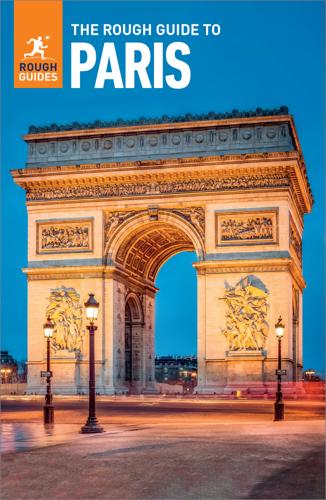
The Rough Guide to Paris
by
Rough Guides
Published 1 May 2023
Take just as much care as you would crossing at any other point. Car rental If you’re intending to rent a car for a short time in Paris, your cheapest option is the city’s pioneering electric car rental scheme, Autolib’ (http://autolib.eu), which operates on a similar model to the successful bike rental scheme Vélib’. Around four thousand electric cars are currently available to rent from around a thousand stands (Seven hundred in central Paris itself) dotted all over the greater Paris region. Cars can be picked up at one station and deposited at another. Users need to buy a subscription card first, either online, from one of the subscription kiosks around central Paris, or in the Autolib’ showroom at 5 rue Edouard VII, 9e (MOpéra).
…
By bike Paris is becoming ever more cycle-friendly: it has over 1000km of cycle lanes, including lanes along the Champs-Élysées and the major east–west artery, rue de Rivoli. You can pick up a free map of the routes, Paris à Vélo, from the tourist office or bike-rental outlets, or download it from http://paris.fr/velo. Renting a bike is very easy in Paris thanks to the city’s pioneering Vélib’ bike-rental scheme (http://velib.metropole.fr). These municipal bikes are available to anyone over 14 and can be picked up from any one of the docking stations and deposited at any other. It’s best to check on the website for the latest information on fees and different subscription options. Many bike tour operators also rent bikes, which may work out cheaper if you want a whole day of cycling.
…
Prepare and then eat your pâtisserie with a cup of tea or coffee while listening to stories from French food history, or start your cooking class with a market visit before making – then eating – a three-course meal. Wine and cheese pairing lunches also available. Cycling The French are mad about cycling, and Parisian cyclists are benefiting hugely from the city’s commitment to reducing pollution on the streets. The Vélib’ bike-rental scheme (see page 48) goes from strength to strength and there are lots of dedicated cycle paths. In addition, the Paris Respire scheme (see page 48) bans cars from certain roads on Sundays and public holidays year-round, which brings out the cyclists and rollerbladers in force. If you would rather ride in a greener environment, you may prefer the Bois de Boulogne or the Bois de Vincennes, both of which have extensive bike tracks.

Dublin Like a Local
by
Dk Eyewitness
There are many outfitters to go with, but for something different, book a Music Under the Bridges tour with City Kayaking and enjoy a gig from the comfort of your vessel. g Sporty Adventures g Contents Google Map CYCLE THE DOCKLANDS Map 5; start at DublinBikes, Guild Street; ///back.flank.fuels For those who don’t own a bike, Dublin’s rental schemes are a saviour. Leisurely weekend cyclists avoid the centre in favour of a ride through the Docklands to Ringsend, where hip cafés provide a stop-off excuse from which to watch locals racing row boats on the Liffey. » Don’t leave without cycling through Ringsend Park. It’s an oft-overlooked oasis of green with a real neighbourhood, family vibe.
…
On wheels Dublin is getting better when it comes to cycling, with over 193 km (120 miles) of lanes that take you from one side to the other in just 30 minutes. Hitting the centre on two wheels can be a little daunting, as drivers aren’t the friendliest around cyclists, so stick to the city’s bike lanes, be very cautious around buses, never go through a red light (you’ll be fined) and always wear a helmet. Many Dubliners rely on the 24-hour bike-share scheme Dublinbikes. There are 115 docking stations throughout the city, and you’ll find a map on the main website. It’s a cinch to join up, and a bargain once you have, at €3.50 for one day. You can also buy a three-day subscription for €5 (the first half hour is always free), but only a few terminals enable you to purchase this ticket.

Devil Take the Hindmost: A History of Financial Speculation
by
Edward Chancellor
Published 31 May 2000
By bike The station has the usual paid bike-rental facilities (daily 8am–6.45pm; rentabike.ch), but you can also take advantage of the efficient PubliBike (publibike.ch) bike sharing system (city bikes and e-bikes for adults only) which is available 24/7 in many locations across the city. Short-term or daily use is offered as well as a yearly membership. There’s also the Züri-Rollt scheme (stadt-zuerich.ch/aoz/de/index/shop/veloverleih.html), a free bike-rental scheme to help unemployed people get back to work. There are pick-up points around the city: the main one is between the train station, and the Landesmuseum, just off Museumstrasse.
…
If so check online, where you might find bikes available at a quieter station in the suburbs. Zürich, Neuchâtel, Geneva and a few other cities also offer free bike rental, invariably from depots beside or opposite the train station. All you do is pay a small deposit and leave some ID. Switzerland also has the efficient PubliBike (publibike.ch) bike sharing system (city bikes and e-bikes for adults only) which is available 24/7 in many locations across the nation, including Bern, Lausanne, Sion, Fribourg, Lugano and Zürich. You can use the bikes on a short-term usage or pay by the day. A yearly membership is also offered, too. In-line skating The Switzerland Mobility network also include full details of in-line skating (essentially roller skating on skates with a single set of wheels – also known as rollerblading; schweizmobil.ch/en/skatingland.html), another massively popular pursuit.
…
Line M1 runs from Flon west to the university and Renens. By taxi For a taxi, call Taxiphone 084 481 08 10 (taxiphone.ch). By boat Rowing boats, pedalos and motorboats are available to rent from opposite the Hôtel d’Angleterre on the Ouchy waterfront. By bike Bikes can be rented at the station or there is also a bike sharing scheme called PubliBike with many stations across Lausanne including Avenue de la Gare 43b (payment via PubliBike App or Swiss Pass; publibike.ch) – but even the locals have to get off and wheel them up and down the city’s hills. Where bikes score is if you fancy a day out of the city, perhaps cycling through the vineyards either side of Lausanne.

The Rough Guide to Switzerland (Travel Guide eBook)
by
Rough Guides
Published 24 May 2022
By bike The station has the usual paid bike-rental facilities (daily 8am–6.45pm; rentabike.ch), but you can also take advantage of the efficient PubliBike (publibike.ch) bike sharing system (city bikes and e-bikes for adults only) which is available 24/7 in many locations across the city. Short-term or daily use is offered as well as a yearly membership. There’s also the Züri-Rollt scheme (stadt-zuerich.ch/aoz/de/index/shop/veloverleih.html), a free bike-rental scheme to help unemployed people get back to work. There are pick-up points around the city: the main one is between the train station, and the Landesmuseum, just off Museumstrasse.
…
If so check online, where you might find bikes available at a quieter station in the suburbs. Zürich, Neuchâtel, Geneva and a few other cities also offer free bike rental, invariably from depots beside or opposite the train station. All you do is pay a small deposit and leave some ID. Switzerland also has the efficient PubliBike (publibike.ch) bike sharing system (city bikes and e-bikes for adults only) which is available 24/7 in many locations across the nation, including Bern, Lausanne, Sion, Fribourg, Lugano and Zürich. You can use the bikes on a short-term usage or pay by the day. A yearly membership is also offered, too. In-line skating The Switzerland Mobility network also include full details of in-line skating (essentially roller skating on skates with a single set of wheels – also known as rollerblading; schweizmobil.ch/en/skatingland.html), another massively popular pursuit.
…
Line M1 runs from Flon west to the university and Renens. By taxi For a taxi, call Taxiphone 084 481 08 10 (taxiphone.ch). By boat Rowing boats, pedalos and motorboats are available to rent from opposite the Hôtel d’Angleterre on the Ouchy waterfront. By bike Bikes can be rented at the station or there is also a bike sharing scheme called PubliBike with many stations across Lausanne including Avenue de la Gare 43b (payment via PubliBike App or Swiss Pass; publibike.ch) – but even the locals have to get off and wheel them up and down the city’s hills. Where bikes score is if you fancy a day out of the city, perhaps cycling through the vineyards either side of Lausanne.
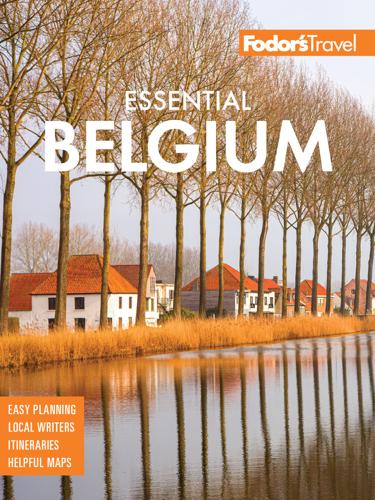
Fodor's Essential Belgium
by
Fodor's Travel Guides
Published 23 Aug 2022
DISCOUNTS AND DEALS To make the most of Ghent’s sights, get hold of a CityCard Gent, which gives free entrance to many of the city’s sights and museums and can be used both on transport and to hire a bike. Valid for either 48 (€38) or 72 (€44) hours, cards are available from the tourist office and participating venues. GETTING HERE AND AROUND BICYCLE Cycling is the best way to get around Ghent. The city-bike rental scheme is easy to use, with several pick-up locations, including the train station and city center. Rental starts from €12 for a day, but it’s free with a CityCard. Bike lanes are everywhere but be careful of the tram lines, as it’s easy to get your wheels stuck. CONTACTS De Fietsambassade. EVoskenslaan 27, Ghent P09/266–7700 wfietsambassade.gent.be.
…
Alternatively, a local bus system connects the airport to Charleroi Sud railway station, which has rail connections to Brussels taking one hour (€9.70). CONTACTS Flibco. P070/211–210 wwww.flibco.com/en. BICYCLES AND E-SCOOTERS Like many cities, Brussels and its suburbs have been invaded by scooter and bike-share schemes; just download the appropriate app to unlock the ride. The city center is quite small, and it’s a quick and easy way to get around. Lime and Dott are the two most widespread e-scooter operators, costing €1 to unlock and then a further €0.17 and €0.22 per minute, respectively. The city bike scheme is Villo (www.villo.be), for which a €1.65 day ticket gives you the first 30 minutes of each ride for free.

France (Lonely Planet, 8th Edition)
by
Nicola Williams
Published 14 Oct 2010
Green-themed boxes in most chapters provide destination-specific pointers for travelling responsibly and a top-pick listing of green activities is on opposite. * * * TOP 10 GREEN PICKS Go slow, go green and buzz sustainable with our pick of environmentally sweet travel experiences; see destination chapters for more ideas on taking your foot off the accelerator. Try the self-service bike-rental schemes in Paris, Lyon, Marseille, Montpellier, Rouen, Caen, Dijon, Amiens, Toulouse and Orléans Build a castle using 13th-century technologies at the Chantier Médiéval de Guédelon Behave like a Breton: cycle past otherworldly megaliths Click here, hike on the Island of Terror or bask on Île de Batz Revel in ravishing gardens: Monet’s inspiration in Giverny, subterranean Jardin des Boves in Arras, Menton’s Mediterranean paradises Click here, Monaco’s Jardin Exotique and those at Villa Grecque Kérylos in Beaulieu-sur-Mer and Villa Rothschild in St-Jean Cap-Ferrat Experience France’s first organic village Click here Paddle along emerald-green waterways at the Maison Flore in France’s ‘Green Venice’ Follow the footsteps of pilgrims from Le Puy-en-Velay to St-Jean Pied de Port; or do it by donkey like Robert Louis Stevenson in the Parc National des Cévennes Bliss out in mud at a Biarritz spa Click here Celebrate traditional mountain life during the eco-festival, Les Phonies Bergères Retrace dinosaur steps at the Réserve Géologique in Digne-les-Bains A DIFFERENT PERSPECTIVE Forget the Louvre or the local musée des beaux arts (fine-arts museum).
…
The local public transport company, STAN ( 03 83 30 08 08; www.reseau-stan.com, in French; office 3 rue du Docteur Schmitt; 7am-7.30pm Mon-Sat), with offices next to the Nacy Gare tram stop, has its main transfer points at Nancy République and Point Central. One/10 tickets cost €1.20/8.70. In this section, tram stops 200m or less from sights, hotels etc are mentioned right after the street address and indicated with a tram icon . Vélostan (www.velostan.com, in French; per half-day/day/week €3/5/10) is not in Central Asia – it’s STAN’s bike-rental scheme, with rental sites inside the train station ( 03 83 32 50 85; 7.30am-7.30pm Mon-Fri, 9am-6pm weekends & holidays) and, near the Musée de l’École de Nancy, in Espace Thermal ( 03 83 90 20 96; 43bis rue du Sergent Blandan; 10am-1pm & 3-6pm Mon-Fri, 9am-6pm Sat). A taxi ( 03 83 37 65 37) is just a telephone call away.
…
By taxi, the 30-minute trip between the airport and the city centre costs around €40/55 during the day/between 7pm and 7am. BICYCLE Pick up a pair of red-and-silver wheels at one of 200-odd bike stations dotted around the city and drop them off at another with Lyon’s hugely successful vélo’v ( 08 00 08 35 68; www.velov.grandlyon.com, in French) bike-rental scheme. The first 30 minutes are free and the first/subsequent hours cost €1/2 with a carte courte durée (a short-duration card, costing €1 and valid for seven days) and €0.50/1 if you buy a carte longue durée (long-duration card, costing €5 and valid for one year). Buy either card with a credit card from machines installed at bike stations: central stations are located in front of the town hall on bd de la Croix Rousse, 4e (Map; metro Croix Rousse); beside the opera house (1er; Map; metro Hôtel de Ville); and opposite Cathédrale St-Jean on place St-Jean (5e; Map; metro Vieux Lyon).

Lonely Planet Switzerland
by
Lonely Planet
Available at all major train stations, SBB Rent a Bike (%041 925 11 70; www.rentabike.ch; half/full day from Sfr27/35) has city/mountain/e-bikes/tandem bikes for Sfr35/43/54/80 per day. For Sfr8 more, you can pick up your bike at one station and drop it off at another. Bikes can be reserved online. A one-day bike pass for SBB trains costs Sfr20. If you're sticking around awhile, it's worth registering for public bike-sharing scheme PubliBike (www.publibike.ch/en), with almost 100 'pick-up and return' stations dotted around Switzerland and a low yearly membership fee. You can also purchase a QuickBike option (24 hours). Use the website to order and check sales and station locations. Resources AVeloland (www.veloland.ch) Info on cycling in Switzerland – from national routes to bike rental, events and family tours.
…
Single tickets covering the entire 30-minute journey (adult/child Sfr7/3.70) can be purchased at machines or on board. Bicycle & Scooter Borrow a free bike from Bern Rollt ( GOOGLE MAP ; %031 318 93 50; www.bernrollt.ch; Milchgässli; first 4hr free, per additional hour Sfr1; h8am-9.30pm), adjacent to the train station. You’ll need ID and Sfr20 as a deposit. Bern is also rolling out the PubliBike bike-sharing scheme. Pick up a 'QuickBike' pass for 24 hours from the offices of Bern Tourismus. Bus, Tram & Funicular Bern Mobil ( GOOGLE MAP ; www.bernmobil.ch; tickets 30min/1hr/day Sfr2.60/4.60/13) operates an excellent bus and tram network. Tickets are available from machines at all stops. Local hotel guests receive a Bern Ticket, offering free use of public transport throughout the city.
…
Wheels can be reserved online or by phone and – for a Sfr10 surcharge – can be collected at one station and returned to another. In addition to regular adult and child bikes, most train stations have e-bikes and tandems, trailer bikes for kids unable to pedal alone, and trailers to tow little kids in. Rates include helmets. If you're sticking around awhile, it's worth registering for public bike-sharing scheme PubliBike, with almost 100 'pick-up and return' stations dotted around Switzerland and a low yearly membership fee. You can also purchase a 'DayBike' card from most tourist-information centres located near the stations. Use the website to order and check sales and station locations. From May to October, the ecofriendly initiative Schweiz Rollt offers free bike hire in Bern, Geneva, Zürich and the cantons of Valais and Neuchâtel.

Streetfight: Handbook for an Urban Revolution
by
Janette Sadik-Khan
Published 8 Mar 2016
New York’s Citi Bike system used batteries and solar power, allowing stations to be placed on city streets in minutes without an electrical hookup that would have turned every station installation into a potential construction zone. The bike-share team hoists one of the first into action. NYC DOT—Alex Engel The station at Fulton and Grand wasn’t controversial. We had the bike-share company start installation of bike-share stations in Brooklyn, not on Manhattan’s more provocative real estate, staving off confrontation for at least a few weeks while also giving installation crews time to hone their skills before they attempted Manhattan. Instead of a single bike lane on a single street or corridor, bike share promised a minefield with 330 potential flash points. If a bike-share station was on the sidewalk, neighbors would protest that it impeded walking.
…
This practicality has been at the heart of bike share’s rapid growth across Europe, Asia, and in the Americas during the 2000s, reaching 712 cities and more than 806,000 bikes by mid-2014. The principle of bike share is based on an accessibility that car share can’t reach: ubiquity. Hundreds of bike-share stations located every couple of blocks throughout the city, either on the street or in parks, plazas, or other public spaces, can be checked out and returned to any dock for a nominal fee. Virtually immune to traffic and resilient to parking problems, bike share greatly expands a person’s reach in the city.
…
We were nervous as we approached launch date and hadn’t sealed the deal with the eventual sponsor, which was supposed to be secured by the bike-share operator, Alta, a Portland-based company that ran bike-share systems in Washington, D.C., Boston, and elsewhere. We were running out of time before the planned summer 2012 launch of the system, and New Yorkers wanted to know whose name would be on the bikes. Frustrated by the bike-share operator’s lack of progress, I intervened in that process personally, developing pitch presentations for likely sponsors such as Citibank, Apple, Puma, and MasterCard. The selection went to Citi, which put up $41 million for the naming rights for the bike-share system for five years, and augmented by $6.5 million from MasterCard, which agreed to be the payment sponsor and have its logo attached to station kiosks.

Bikenomics: How Bicycling Can Save the Economy (Bicycle)
by
Elly Blue
Published 29 Nov 2014
Overnight, the city became a place to ride a bicycle; 250,000 Parisians are now members of the system, making over a hundred thousand daily trips on the bikes. Bike share started small in North America in 2008, with a tiny but successful program in one area of Washington, D.C. that was a precursor to today’s CaBi system. In 2009, Montreal launched a large program that is largely credited with that city’s rise to one of the best cycling cities on the continent, if not the world. In 2010, Denver and Minneapolis opened their bike share kiosks for business. After that, bike share fever hit, and it became hard to count the cities jumping on board. The effect of a new bike share system launch is instant and transformative.
…
Maybe it’s there for you on the way back, or maybe you find another bike close by. Where it is installed, bike share reduces the already low price of admission for cycling and breaks down many barriers for would-be cyclists. Using a shared bike isn’t free, but it’s far less of a commitment than buying a bicycle. Riding a bike share bike might be more work, physically, than riding one of your own, but you need less mental and logistical preparation if you are totally new to it. A purchased bike doesn’t come with a map, lights, or instruction manual, while bike share comes with all three. And the results are manifest—when these programs launch, the streets fill with bikes.
…
As of 2013, over 500 cities around the world boasted wildly successful bike share programs. The only systems that have not done well are in Australia—where helmet use is mandatory and strictly enforced. DC’s bike share system was built by leveraging federal funding, but its fee structure is working. Now it has the dubious distinction of being the only transit system in the country to break even, with all operating costs coming from user fees. This news is hopeful and in many ways positive. But it shows the fatal flaw of free market perspectives on transportation economics. After Denver’s bike share program launched in 2010, initial research found that 90% of its members were Caucasian.

The Mesh: Why the Future of Business Is Sharing
by
Lisa Gansky
Published 14 Oct 2010
The experience was very different from renting with Hertz, or one of the other big car rental companies, where you’re only allowed to pick a category of car—small, medium, or large—like a Slurpee. While in Vancouver, I also tried out the local bike-sharing service. The city is one of the best places in the world to ride a bike. For bike sharing, a credit card in a slot usually unlocks a bike. You ride your bike around and return it to the same rack, or to another one elsewhere. (Barcelona even has a phone app now that tells you which of the four hundred return stations is closest.) In Vancouver, the bike-sharing locations are concentrated near the park and near public transportation. The paths are impressive, and you can take the bicycle on the ferry.
…
The virtuous circle of trust enables you, as the business owner, to rapidly and frequently interact with customers and prospects, and their friends and families. You learn more about what services or products they want and how to deliver them. Bike sharing, for example, has become one of the fastest growing forms of transportation, especially in Europe. But in the initial offerings, problems emerged. A common one is that customers often want to pick the bike up in one location and return it to another, which presents a logistical challenge to the service. In Paris, which has one of the most advanced bike-sharing programs, users often left the bike at the bottom of a hill, so they wouldn’t have to pedal up. Solutions include having people pay a premium for dropping the bike in a different location or adding a small motor that helps them power the bike up a hill.
…
Traditional retailers generally prefer products with a short life span, so the customer will buy a new one. Third, Mesh businesses often purchase core products directly from the manufacturer, and lots of them. A bike-sharing company will typically buy many bikes. That creates the possibility for rich flows of information about customers between the bike manufacturer and the bike-sharing business. The result is well-built bikes that last, and with the features customers want. Aggregated information about the customer can also flow the other way, back to the customers themselves. Tripkick, for instance, accumulates consumer experiences about hotels to help users choose the perfect hotel room.

On Bicycles: A 200-Year History of Cycling in New York City
by
Evan Friss
Published 6 May 2019
“Citi Bike System Data,” https://www.Citi Bikenyc.com/system-data; Alex Goldmark, “The Three (and a Half) Citi Bike Usage Patterns,” WNYC, July 28, 2013, http://www.wnyc.org/story/307846-chart-three-and-half-citi-bike-usage-patterns/; Joe Jansen, “What Factors Influence Citi Bike Usage,” December 30, 2013, https://www.joejansen.co/blog/2013/12/29/what-factors-influence-citi-bike-usage; Sarah Kaufman, “Citi Bike and Gender,” New York University Rudin Center for Transportation, accessed October 31, 2017, https://wagner.nyu.edu/rudincenter/2014/05/citi-bike-and-gender. See also, “Is Bike Share the Bloomer of the 21st Century?” velojoy, June 19, 2014, https://velojoy.com/2014/06/19/bike-share-and-gender-data/; Michael Guerriero, “Interactive: A Month of Citi Bike,” New Yorker, July 26, 2013, http://projects.newyorker.com/story/citi-bike.html; Todd W. Schneider, “A Tale of Twenty-Two million Citi Bike Rides: Analyzing the NYC Bike Share System,” January 13, 2016, http://toddwschneider.com/posts/a-tale-of-twenty-two-million-citi-bikes-analyzing-the-nyc-bike-share-system/; Sara Robinson, “Analyzing NYC Biking Data with Google BigQuery,” Google Cloud Platform, December 7, 2016, https://cloud.google.com/blog/big-data/2016/12/analyzing-nyc-biking-data-with-google-bigquery.
…
Sadik-Khan and Solomonow, Streetfight, 184–85; Alex Davies, “3 Charts that Explain the Massive Success of NYC’s Bike Share Program,” Business Insider, March 7, 2014, http://www.businessinsider.com/3-charts-explain-nyc-bike-share-success-2014-3; New York City Department of Transportation, Press Release #01-064, November 23, 2010, http://www.nyc.gov/html/dot/html/pr2010/pr10_060.shtml. 53. Oldenziel, Emanuel, de la Bruhèze, and Veraart, eds., Cycling Cities, 182–85, 187–88, 191; Susan A. Shaheen, Stacey Guzman, and Hua Zhang, “Bikesharing across the Globe,” in City Cycling, ed. John Pucher and Ralph Buehler (Cambridge, MA: MIT Press, 2012), 183–210. 54. “Bike Share Program May Mean More Accident Suits Against the City, Liu Warns,” New York Times, June 23, 2012; “Bicycles?
…
New York Post, April 19, 2013; John Del Signore, “West Village Residents File Lawsuit to Stop Citi Bike,” Gothamist, April 30, 2013, http://gothamist.com/2013/04/30/west_village_nimbys_file_futile_law.php; Mary Johnson, “Residents Say Bike-Share Site Near UN Creates Safety Risk,” dnainfo, June 18, 2012, https://www.dnainfo.com/new-york/20120618/midtown-east/residents-say-bike-share-site-near-un-creates-safety-risk/; “Bike Sharing? Sure. The Racks? No Way,” New York Times, May 14, 2014. 55. Wall Street Journal, “Opinion: Death by Bicycle,” video, 4:59, May 31, 2013, https://www.wsj.com/video/opinion-death-by-bicycle/C6D8BBCE-B405-4D3C-A381-4CA50BDD8D4D.html; The Daily Show with Jon Stewart, “Full Pedal Racket—Citi Bike,” video, 5:34, June 6, 2013, http://www.cc.com/video-playlists/kw3fj0/the-opposition-with-jordan-klepper-welcome-to-the-opposition-w—jordan-klepper/2432gv. 56.

Ghost Road: Beyond the Driverless Car
by
Anthony M. Townsend
Published 15 Jun 2020
While Chin’s tricycle confirmed my hunch about the potential for putting self-driving tech into bikes, it was the link to bike sharing that intrigued me. Bike-share is a dead-simple idea that has revolutionized how we ride in cities. Today, millions of shared bikes serve a thousand cities worldwide. They provide 24-7 local transport that’s faster than walking, is more pleasant than transit, and doesn’t emit a trace of greenhouse gas in the process. And as clever as Google’s pranksters were when they poked fun at the idea of a self-driving cycle, they overlooked how useful the capability for riderless operation could be in making bike-share systems work better. As it turns out, the bike-sharing revolution began in Amsterdam, the setting for Google’s spoof, way back when Stanford’s scientists were still cooking up their first self-driving robots.
…
Despite several attempts it never secured long-term support from Amsterdam’s city government. After the white bikes, bike sharing vanished until a new generation of activists in Copenhagen revived the idea in the 1990s and succeeded in getting buy-in from authorities. Then, Paris’s Vélib system opened for business in 2007, immediately becoming the photogenic ambassador for the idea’s viral global spread. (Ironically, because Amsterdam is already so overrun with privately owned bikes, city authorities have stubbornly resisted bike-share.) What changed between the 1960s and today to make bike-share a sudden success? Smartphones were one key missing ingredient.
…
In a similar fashion, low-power mobile computing is also crucial to bike-share’s light-footprint infrastructure, which allows solar-powered, wirelessly linked stations to be slipped into the underused interstices of cities with minimal cost and fuss. “Docks,” as they’re called, can be installed in spaces no one else wants—along curbs, in corners of plazas, and outside the entrances of transit stations. New York City’s Citi Bike docks, for instance, are delivered by flatbed truck and switched on without laying any wires, cables, or pipes. They aren’t even bolted to the street surface. As lean and mean as today’s bike-share systems are, it wasn’t long before we ditched the docks, bringing us back to the original 1960s setup.
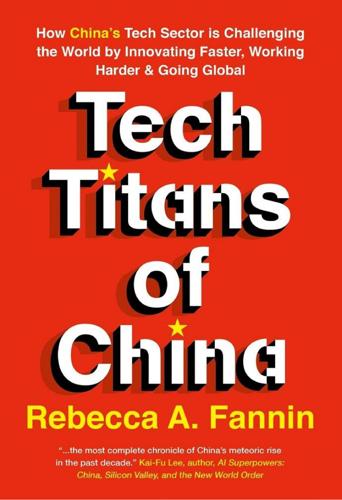
Tech Titans of China: How China's Tech Sector Is Challenging the World by Innovating Faster, Working Harder, and Going Global
by
Rebecca Fannin
Published 2 Sep 2019
Flooded with venture money and backing from Alibaba and Tencent, startups quickly overexpanded in China and overseas, chasing the opportunities with heavy subsidies for riders in a fiercely competitive and opportune, but ultimately money-losing, market. Several bike-sharing startups flopped and went out of business. The bike-sharing era has gone from bunches of colorful, shiny bikes parading city streets and sidewalks to rusted-out frames ditched along the road. Fads come and go quickly in China. Then again, my neighborhood south of San Francisco had lime-colored bike-sharing rentals for about one year. But then, the well-funded startup that was providing them for rent, Lime-Bike (renamed Lime), suddenly collected all the bikes one weekend and since has tried unsuccessfully to get the city to switch to scooters, which could be a more profitable exercise for the young business.
…
. $120 million gaming 2014 Alibaba Investments in China Tech Startups Cainiao Lead Co-inv. $1.4 billion smart logistics 2018 Ele.me Acq. $9.5 billion food delivery 2018 Ele.me / Koubei Merger 2018 Koubei Acq. $1 billion local commerce 2017 Xiaohongshu Lead Co-inv. $300 million social e-commerce 2018 Ofo Inv. $866 million bike sharing 2018 SenseTime Inv. $600 million facial recognition 2018 Ofo Inv. $700 million bike sharing 2017 Youku Tudou Acq. $4 billion video sharing 2016 Weibo Inv. $720 million micro-blogging 2016 AutoNavi Acq. $1.5 billion digital mapping 2014 * Note–Inv. is investment; Co-inv. is co-investment; Acq. is acquisition; Lead Inv. is lead investment; Lead Co-inv. is lead co-investment; Und. is undisclosed Sources: Silicon Dragon research, S&P Global Intelligence, annual reports, news releases In the United States, Alibaba has had a mixed record of M&A deals.
…
Several Silicon Valley firms still dismiss venture investing in China as too risky, and many in the clubby Sand Hill Road community prefer a comfort zone within a close radius of the Bay Area, fearing the unknown and language and cultural barriers. Experienced China-side venture investors have sometimes struck out. Matrix Partners China, GSR Ventures, and ZhenFund—as well as Alibaba—got caught in China’s bike-sharing craze and meltdown after injecting $2.2 billion into Chinese bike-sharing startup Ofo, which has crashed after so much hype, a victim of overexpansion, competition, and a money-losing business model. Another China deal that cost its investors dearly was failed blogging platform Bokee, funded with $10 million from SoftBank, Bessemer Venture Partners, and Granite Global Ventures (now GGV) a decade ago.
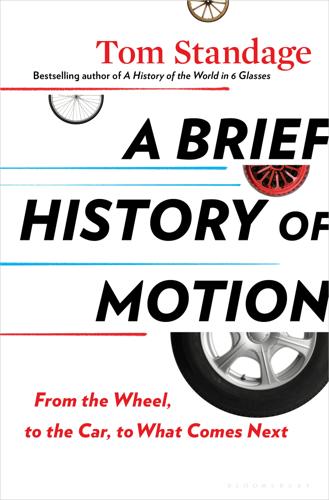
A Brief History of Motion: From the Wheel, to the Car, to What Comes Next
by
Tom Standage
Published 16 Aug 2021
Vélib’ inspired similar programs around the world: globally, the number of cities with bike-sharing systems went from around seventy when it launched to more than seven hundred in 2013. Since then, smartphones have boosted the prospects of bike-sharing even further, in two ways. Smartphone apps mean there is no need to sign up for a smart card to use bike sharing. And incorporating a smartphone with satellite-positioning capability into each bicycle means its position can be tracked at all times. That opened the way to “dockless” bike-sharing, a model popularized by two Chinese start-ups, Ofo and Mobike. (Mobike was cofounded by Wang Xiaofeng, who was the general manager of Uber’s Shanghai office at the time.)
…
ON YOUR BIKE (AND SCOOTER) Just as the smartphone has rebooted the old idea of the jitney, it has also put a new spin on another mode of transport: the bicycle. In recent years it has boosted the popularity of bike sharing—the short-term rental of bicycles for short trips in urban areas—by resolving many of the problems that had prevented bike sharing from working well. The first bike-sharing program, launched in Amsterdam in 1965, was called Witte Fietsen, which is Dutch for “white bikes.” Luud Schimmelpennink, a designer and political activist, collected a few dozen bicycles, painted them white, and left them around the city, unlocked, so that anyone could use them and then leave them for the next rider.
…
But authorities in many cities have confiscated bikes that are improperly parked and imposed restrictions on the operators of dockless programs. As with the early days of ride hailing in private cars, dockless bike sharing has gone from a Wild West free-for-all, in which rival start-ups compete to sign up customers, to a steadily more regulated environment. The latest twist on bike sharing is the option to rent electric bikes, which use a motor to assist the rider and make longer journeys less strenuous. The dockless bike-sharing model, combined with improvements in batteries and electric propulsion, has also led to a flowering of start-ups offering electric scooters, or e-scooters, for short trips.
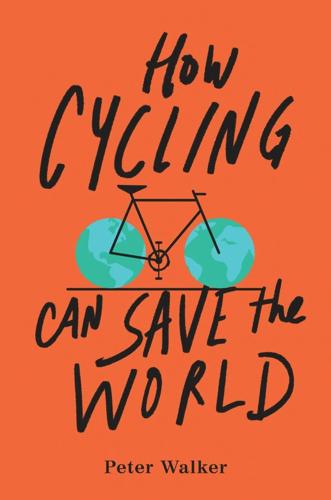
How Cycling Can Save the World
by
Peter Walker
Published 3 Apr 2017
But for many people it’s simply too much bother. This is one of the many accidental effects of helmet compulsion. Even in a youthful, vibrant, and otherwise innovative city like Melbourne, a bike-share program is a nonstarter. A small if significant opportunity for creating a human-friendly city is lost. Clover Moore, the lord mayor of Sydney for more than a decade, says she would also love to create a bike-share system there but feels unable to, given the long-standing helmet compulsion law. This comes from the government of the surrounding state, New South Wales, over which she has no control. “I’d like to do it, but with the helmet law it’s not viable,” Moore says.
…
This is, of course, particularly the case for shorter distance travel, including trips that link up people to other forms of transport. Dr. John Zacharias, a Beijing-based academic and urban planner who has lived in China for decades, believes cycling could make a return in the country in part through bike-share schemes, allowing people to connect to urban rail stations. “I have this feeling it’s going to take off—bike sharing with metro systems,” he says. “Just now the walking distances don’t allow the metro systems to penetrate very far into residential districts. A bicycle-sharing system extends that by about three times.”11 Anand Babu, meanwhile, is imagining bikes having a key role to connect with a more high-tech transport system—high-speed driverless cars.
…
The head of the building team, who’d been very skeptical about the process, called me and said, ‘Where have all those cyclists come from?’ That’s when I knew for sure it was going to work. They came from all over the city.”1 They continued to come. Within a couple of years of the lanes opening, along with other initiatives including a public bike-share system, the number of cycle trips in Seville multiplied elevenfold. This is, admittedly, from a tiny 0.5 percent starting point for trips made by bike.2 The current level, just over 6 percent, is impressive, but nowhere near the standards of an equivalent Dutch or Danish city. Seville’s green-tarmacked bike network, now expanded to seventy-five miles, has its compromises.

Copenhagenize: The Definitive Guide to Global Bicycle Urbanism
by
Mikael Colville-Andersen
Published 28 Mar 2018
It involved pilot projects in Belgium, Catalonia, Italy, and the United Kingdom that improved parking facilities for bikes and also tested bike-share programs available at the stations. I was in charge of getting the logo made and producing posters and materials for the project. It was important to avoid the typical messaging about saving polar bears by riding your bike and to focus instead on faster, easier, and cooler as keywords. A poster campaign from one of the project’s partners, Merseyside Rail, highlighted the ease of use and convenience of their Bike & Go bike-share. In Denmark, Danish State Railways (DSB) has been transporting passengers with bikes almost since the bicycle was invented.
…
If a location allows for it, why not design a wind and/or rain shelter, combined with a footrest and railing, for those immobile moments? A bicycle counter gathering valuable data and boosting civic pride. The Copenhagenize Current design for cycle tracks combined with stormwater runoff. Design and concept: The author & Steve Montebello BIKE-SHARE There was bike-share activism in the Netherlands in the 1960s, but really, it all started as an initiative by Mayor Michel Crépeau in La Rochelle, France, in the mid-seventies. The City bought some bikes, painted them yellow, and made them available for people to borrow. I used them in La Rochelle while on holiday there back in the nineties.
…
You put in a coin, as with a shopping cart, and got your coin back when you docked the bike. What happened after that was quite extraordinary. There are now well over 1,000 cities around the world with bike-share systems in place. It has been a veritable game-changer in cities—a strong visual message that bikes are back and are being taken seriously but are also providing vital first- and last-mile transport. Bike-share programs should be normal inventory in a city, along with infrastructure on which to ride the bikes safely. SPONGE CITIES There are challenges far greater than reestablishing the bicycle as transport in our cities.

What's Mine Is Yours: How Collaborative Consumption Is Changing the Way We Live
by
Rachel Botsman
and
Roo Rogers
Published 2 Jan 2010
The Clothing Exchange is able to reach this point more quickly by hosting specific swaps for different clusters of clothing sizes or tastes—for example, teenagers, pregnant moms, and people over sixty-five—and an Excess Baggage Exchange just for shoes, accessories, and handbags. A similar dynamic is at work with the bike-sharing schemes growing in popularity around the world, such as SmartBike in D.C., B-cycle in Hawaii, and OYBike in London. One of the most recent bike-sharing schemes, launched in May 2009, is Montreal’s BIXI (coined from “bike,” plus “taxi”). On taking office, Mayor Delanoë set clear goals to reduce the city’s traffic and carbon emissions and to make the city more livable. He decided he could not just build more cycling paths (Montreal in fact already has a network of more than twenty miles of bike paths); he had to make enough bikes available (and make them cheap enough) so that cycling would become the convenient and attractive choice for people to get around the city.
…
Thomas Friedman, “The Inflection Is Near?” New York Times (March 2009), www.nytimes.com/2009/03/08/opinion/08friedman.html. 1. Statistics on online networks taken from “A Day on the Internet,” www.onlineeducation.net/internet. 2. Abha Bhattarai, “Bike-Sharing: Cycling to a City Near You,” Fast Company (June 26, 2009), www.fastcompany.com/blog/abha-bhattarai/abha-bhattarai/bike-sharing-cycling-city-near-you. 3. Statistics on Zilok taken from Reuters release, “Rent Your Way Out of the Credit Crunch Online” (December 5, 2008), http://www.reuters.com/article/idUSTRE4B44DE20081205. 4. Statistics on bartering taken from William Lee Adams, “Bartering: Have Hotel, Need Haircut,” Time (November 2, 2009), http://www.time.com/time/magazine/article/0,9171,1931665,00.html. 5.
…
More and more friends were selling stuff on craigslist and eBay; swapping books, DVDs, and games on sites such as Swaptree and OurSwaps; and giving unwanted items away on Freecycle and ReUseIt. On a trip to Paris, we saw cyclists pedaling around on sleek-looking bikes with the word “Vélib’” (Paris’s bike-sharing scheme) on their crossbars. A friend in London told us about her new favorite Channel 4 TV program called Landshare. And we kept hearing about the number of people joining Community Supported Agriculture (CSA) programs or local co-ops. We saw stats and stories about online cooperation and the growth in virtual communities.

If Mayors Ruled the World: Dysfunctional Nations, Rising Cities
by
Benjamin R. Barber
Published 5 Nov 2013
Novel mechanisms of cooperation and common decision making are allowing cities to address, in common, issues of weapons, trade, climate change, cultural exchange, crime, drugs, transportation, public health, immigration, and technology. They need not always be formal: Rey Colón, a Chicago alderman, “first saw how well [bike-share] innovations work on a trip to Seville, Spain.”10 Mayor Rahm Emanuel subsequently made a campaign promise to lay out one hundred miles of “green” protected bike lanes on major Chicago thoroughfares and is currently making good on the promise. New York City’s bike-share program opened in mid-2013. Sharing green ideas among cities and cooperating on slowing climate change in city networks like the C40 with bike-share and pedestrian mall programs are not quite the same thing as ruling the world, but they do indicate that cities are far ahead of states in confronting the daunting challenges of interdependence, if only through voluntary and informal cooperation.
…
New York City, an urban sustainability leader, was only the most recent of more than 300 cities worldwide that have introduced bike-share programs (including more than 30 cities in France, 30 in Germany, a dozen in the United States, and at least four in China including Shanghai and Beijing), with cities like Bogotá mandating weekend bikes-only traffic on major thoroughfares—so-called ciclovias. Bike-share programs are often associated with other civic issues and movements, which broadens their membership and increases their civic power. Portland, Oregon, was one of the first cities to have one, back in 1965, reflecting its status as a global green leader. In Tucson, Arizona, the bike-share campaign came out of a movement focused on the homeless and reflecting antiwar sentiment; it was launched under the rubric “bikes not bombs.”
…
To begin, such an assembly would represent a modest first step toward formalizing the myriad networks of cities already actively cooperating across borders around issues as mundane an express bus lanes, bike-share programs, and web-based information collection, and as momentous as climate change, nuclear security, and intelligence gathering. It turns out that in cities it is often the mundane issues that affect the momentous ones—bike-shares and express bus lanes are a way to address climate change and emissions, information sharing can be a path to collective security—which is precisely why cities can often achieve the momentous while pursuing the mundane.

The Rough Guide to Norway
by
Phil Lee
Published 25 Nov 2013
BY BIKE Renting a bicycle is a pleasant way to get around Oslo, particularly as the city has a reasonable range of cycle tracks and many roads have cycle lanes – and, furthermore, central Oslo is not engulfed by traffic thanks to its network of motorway tunnels. Bike rental There is a municipal bike rental scheme (Easter to Nov; oslobysykkel.no) in which bikes are released like supermarket trolleys from racks all over the city. Visitors can join the scheme (and receive the appropriate smartcard) at the tourist office by paying 90kr for a 24hr cycling pass plus a substantial refundable deposit.
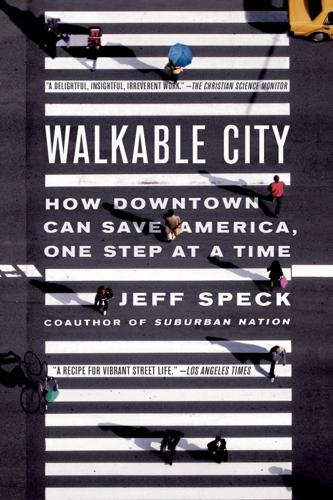
Walkable City: How Downtown Can Save America, One Step at a Time
by
Jeff Speck
Published 13 Nov 2012
Clearly, they are best limited to residential areas where, indeed, they contribute to property values, as the Bike Realtor will tell you. Finally, investment in a different kind of cycling infrastructure, pioneered in Europe, has begun to take root in American soil: urban bike share. After some small and mostly failed attempts in prior decades, this concept is finally catching on, thanks largely to new technologies that remove some earlier inconveniences. The best-known bike share is the twenty-thousand-bike Vélib system in France, which is considered a resounding success despite the fact that more than 80 percent of its bikes have been damaged, dumped in the Seine, or shipped off to Africa.46 The French program is actually dwarfed by one in Hangzhou, China, where bike stations are located only 330 feet apart, and where not one of the system’s 60,600 bikes has yet to be stolen.47 Recently, Washington, D.C., pioneered large-scale bike sharing in the United States, and our bright red Capital Bikeshare cycles have become a fixture of urban life in the District.
…
Steven Erlanger and Maïa de la Baume, “French Ideal of Bicycle-Sharing Meets Reality.” 47. Wikipedia, “Bicycle Sharing System.” 48. Clarence Eckerson, Jr., “The Phenomenal Success of Capital Bikeshare.” 49. Christy Goodman, “Expanded Bike-Sharing Program to Link D.C., Arlington.” 50. “Capital Bikeshare Expansion Planned in the New Year,” D.C. DOT, December 23, 2010. 51. Wendy Koch, “Cities Roll Out Bike-Sharing Programs.” 52. David Byrne, Bicycle Diaries, 278. 53. Lord. STEP 7: SHAPE THE SPACES 1. Thomas J. Campanella, Republic of Shade, 135. 2. Jan Gehl, Cities for People, 4. 3. Ibid., 120, 139, 34. 4. Ibid., 50. 5.
…
The best-known bike share is the twenty-thousand-bike Vélib system in France, which is considered a resounding success despite the fact that more than 80 percent of its bikes have been damaged, dumped in the Seine, or shipped off to Africa.46 The French program is actually dwarfed by one in Hangzhou, China, where bike stations are located only 330 feet apart, and where not one of the system’s 60,600 bikes has yet to be stolen.47 Recently, Washington, D.C., pioneered large-scale bike sharing in the United States, and our bright red Capital Bikeshare cycles have become a fixture of urban life in the District. Here’s how it works: you check your smartphone for the location of a bike docking station near you, and make sure that there are bikes available. The city currently has 1,100 bikes distributed among 114 stations.

The Zero Marginal Cost Society: The Internet of Things, the Collaborative Commons, and the Eclipse of Capitalism
by
Jeremy Rifkin
Published 31 Mar 2014
According to a study done in 2011, once people car share they tend to change their other mobility behavior, increasing bicycling, walking, and the use of public transportation.6 Bike sharing, in particular, has taken off over the past five years, thanks in part to technological advances like smart cards, touchscreen kiosks for easy check in and deployment, and GPS tracking on the bicycle that allows the rider to integrate bike sharing with car sharing and public transit. The newest innovation, solar-powered electric bicycles, has generated rave reviews from a younger generation. As of 2012, there were 19 bike-sharing programs in North America with over 215,000 users.7 Globally, there are over 100 bike-sharing operations with 139,300 bicycles in service.8 In the United States and Canada, 58 percent of the new IT-based public bike-sharing operations are run by nonprofit organizations, 21 percent are privately owned, and 16 percent are publicly owned and contractor operated.
…
As of 2012, there were 19 bike-sharing programs in North America with over 215,000 users.7 Globally, there are over 100 bike-sharing operations with 139,300 bicycles in service.8 In the United States and Canada, 58 percent of the new IT-based public bike-sharing operations are run by nonprofit organizations, 21 percent are privately owned, and 16 percent are publicly owned and contractor operated. The nonprofit operations are the heavy hitters, accounting for 82 percent of the membership and 66 percent of the bicycles used.9 Bike-sharing memberships can be taken out on an annual, monthly, or daily basis, or even be paid for on a trip-by-trip basis. Riders gain access to bikes by swiping membership cards or credit cards, or by checking in via their smartphones. Bike sharing has become very popular in congested metropolitan areas where car traffic is often at a standstill during peak rush hours.
…
Bike sharing has become very popular in congested metropolitan areas where car traffic is often at a standstill during peak rush hours. In surveys conducted by Vélib’ bike sharing in Paris and Capital Bikeshare in Washington, D.C., the overwhelming majority of bike sharers said that traveling by bike was faster and more convenient. Bike sharing also saves money that would have gone into operating a car.10 Car sharing also saves households money. In the United States, the average car costs hundreds of dollars a month to own and operate and eats up 20 percent of household income, making it the second-most-expensive cost after housing.

The Nation City: Why Mayors Are Now Running the World
by
Rahm Emanuel
Published 25 Feb 2020
BEAM has already been an unqualified success, accounting for more than half of the state’s record $31 billion in exports on 2017. Inspiration for ideas comes from many places. Pete Buttigieg brought dockless bike-sharing to the city of South Bend—making it the first city in the world to have the service at scale—in a roundabout manner. He’d first seen the idea of docked bike-sharing while on a trip to Copenhagen. “But I didn’t think we could afford it because the docking stations were so expensive,” he says. Then one day Miro Weinberger, the mayor of Burlington, Vermont, called him. “He told me that he had seen a dockless bike-sharing setup, but he thought that his city, at 40,000 people or so, was too small to utilize it,” says Buttigieg.
…
He initiated some programs that were eventually replicated nationally—the listing of calorie counts in New York City restaurants was later copied by the state of California and then enacted as a law for major restaurant chains in the United States. He was also an inveterate adopter and adapter of the best ideas of others, such as instituting smoking bans (copying California), establishing a bike-sharing program (something the city of Copenhagen had popularized in the mid-1990s), and banning trans fats (originally done by Denmark in 2003). Again, because of his prominent position, his adoption of these initiatives—and his demonstration that they could be done in cities—was transformational. He was a Democrat, and then a Republican, and then an Independent, and then a Democrat again.
…
He is the cochair of the Energy Independence and Climate Protection Task Force of the U.S. Conference of Mayors. President Obama appointed him to something called the Task Force on Climate Preparedness and Resilience. He’s had a standing executive order since 2005 for his government to purchase hybrid and biofuel vehicles. He started a bike-sharing program in his city. Under his watch, hundreds of acres of parkland and green spaces have been created within the city limits. He is a big proponent of diversity and told his local newspaper, “When I study the history of our cities, I see that the most important advances take place when people of diverse backgrounds meet.”

AI Superpowers: China, Silicon Valley, and the New World Order
by
Kai-Fu Lee
Published 14 Sep 2018
Each dimension of that universe—WeChat activity, O2O services, ride-hailing, mobile payments, and bike-sharing—adds a new layer to a data-scape that is unprecedented in its granular mapping of real-world consumption and transportation habits. China’s O2O explosion gave its companies tremendous data on the offline lives of their users: the what, where, and when of their meals, massages, and day-to-day activities. Digital payments cracked open the black box of real-world consumer purchases, giving these companies a precise, real-time data map of consumer behavior. Peer-to-peer transactions added a new layer of social data atop those economic transactions. The country’s bike-sharing revolution has carpeted its cities in IoT transportation devices that color in the texture of urban life.
…
iResearch estimated in 2017: “China’s Third-Party Mobile Payments Report,” iResearch, June 28, 2017, http://www.iresearchchina.com/content/details8_34116.html. surpassed $17 trillion: Analysis 易观, “中国第三方支付移动支付市场季度监测报告2017年第4季度,” http://www.analysis.cn/analysis/trade/detail/1001257/. for $2.7 billion: Cate Cadell, “China's Meituan Dianping Acquires Bike-Sharing Firm Mobike for $2.7 Billion,” Reuters, April 3, 2018, https://www.reuters.com/article/us-mobike-m-a-meituan/chinas-meituan-dianping-acquires-bike-sharing-firm-mobike-for-2-7-billion-idUSKCN1HB0DU. three hundred to one: Laffont and Senft, “East Meets West 2017 Keynote.” 4. A TALE OF TWO COUNTRIES “put AAAI on Christmas day”: Sarah Zhang, “China’s Artificial Intelligence Boom,” Atlantic, February 16, 2017, https://www.theatlantic.com/technology/archive/2017/02/china-artificial-intelligence/516615/. 23.2 percent to 42.8: Dr.
…
Once those pieces were in place, Chinese startups set off an explosion of indigenous innovation. They pioneered online-to-offline services that stitched the internet deep into the fabric of the Chinese economy. They turned Chinese cities into the first cashless environments since the days of the barter economy. And they revolutionized urban transportation with intelligent bike-sharing applications that created the world’s largest internet-of-things network. Adding fuel to this fire was an unprecedented wave of government support for innovation. Guo’s mission to build the Avenue of the Entrepreneurs was just the first trickle of what in 2014 turned into a tidal wave of official policies pushing technology entrepreneurship.

Straphanger
by
Taras Grescoe
Published 8 Sep 2011
Washington, D.C., Minneapolis, Boston, and Chicago have their own, much smaller, versions of Vélib’, and at last count there were 120 bike-share programs worldwide, ranging from the sixty Green Bikes on Chicago’s St. Xavier University campus to the 5,000 bikes in the Chinese city of Guang’zhou. So many Copenhageners already own their own bicycles that City Bikes are mostly used by tourists and business travelers, but systems like Paris’s Vélib’ have transformed a significant number of Parisians into enthusiastic cyclists. For cycle advocates, bike-share systems function like Trojan horses in car-besieged cities. At minimum expense, they introduce people to an alternative to driving.
…
Real systemic change came in 2001, with the election of Mayor Bertrand Delanoë, a socialist who declared open war on the “the hegemony of the automobile.” To the shock of drivers, he shut down Pompidou’s riverbank highway during the summer, and covered the asphalt with sand, making the Right Bank of the Seine into a beach—complete with, this being France, topless sunbathers. In 2007, Delanoë introduced Vélib’, the world’s largest bike-sharing program, which allows anyone with a credit card, and now a métro pass, to borrow a sturdy gray bicycle from any one of 1,450 stands around the city. Under Delanoë’s mayoralty, driving in Paris has gotten a lot harder, as reserved busways have removed lanes from Rue de Rivoli and other major thoroughfares.
…
Greater Copenhagen has grown following this plan, with each finger bone serving as a transit corridor of S-train lines, thoroughfares, and bike lanes, separated by parks and other green spaces. Copenhagen’s greatest contribution to solving the last-mile problem is probably Bycyklen, or City Bikes, the world’s first large-scale bike-share program, founded in 1995. The free loaner bikes work on the model of a cart in a supermarket parking lot: the bike is freed with a 20-krone coin, a deposit you get back when you return your ride to one of over a hundred stands in the central city. Its most notorious predecessor was the White Bicycle plan, launched in the mid-’60s when an anarchist group scattered several hundred free bicycles around Amsterdam.
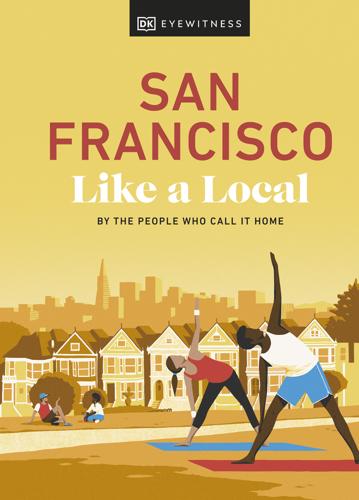
San Francisco Like a Local: By the People Who Call It Home
by
Dk Eyewitness
Published 5 Apr 2023
Cyclists should generally follow all the rules of the road, such as obeying traffic signals, signaling when turning, and giving way to pedestrians. California law requires cyclists to use reflectors and a front white light when riding. If using headphones, keep one ear free. And always wear a helmet. No arguments. The City of San Francisco doesn’t have a comprehensive bike-share program, but you can rent bikes and ebikes from Bay Wheels by Lyft docking stations in the east of the city. A ride costs $3 and a one-day pass costs $10. www.lyft.com By public transportation The city has a range of public transportation options run by the San Francisco Municipal Transportation Agency (SFMTA): the Muni Metro light-rail, vintage F-line electric street trams, BART trains, and, of course, those iconic cable cars.
…
Simply download the free what3words app, type a what3words address into the search bar, and you’ll know exactly where to go. TRANSIT Your local transit advice San Francisco mightn’t have a cohesive public transportation system, but it does have a cohesive public transportation app. Transit predicts all bus and train arrivals, and calculates time and cost comparisons between Lyft’s rideshares and bike shares (provided there are Bay Wheels docks in your area). g Contents San Francisco NEIGHBORHOODS San Francisco is a patchwork of mini-neighborhoods, each with its own distinct look and personality. Here we look at some of our favorites. Bernal Heights Liberals have long been attracted to this hilltop ’hood, which was a hotbed of activism in the 1980s.
…
It’s free to take part, just meet at the store at 7pm to join the 2.5-mile (4-km) jog to Bay and Hyde streets, where you wait for the next car. » Don’t leave without running back to the store afterward (assuming you’ve stillgot some energy) for the post-race raffle. Outdoors | Alfresco Fitness Part workout, part social, the Midnight Mystery Ride is the ultimate secret club for eager cyclists. The ride wheels into the night on the third Saturday of every month. First, bag a bike through the Bay Wheels bike-sharing program (or book one via the Lyft ride-sharing app) then join the Facebook group, where the starting location is revealed on the day of the ride. Then, follow the leader on a mystery tour through SF’s streets, with a few pit stops for beers on the way. g Alfresco Fitness g Contents Google Map ZUMBA IN THE PARK Map 5; 198 John F.
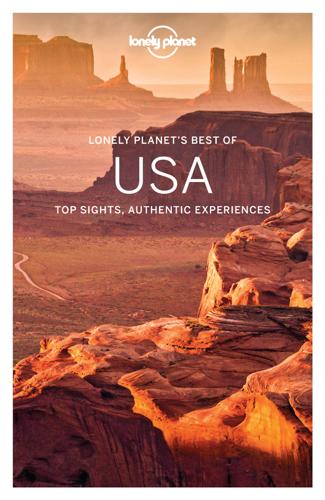
Lonely Planet's Best of USA
by
Lonely Planet
Cities, once deeply married to the automobile (Houston, we’re looking at you), have great expanded public transport options, with new light rail lines, express bus lines and dedicated bus lanes. Bike-sharing programs have also exploded across the country, with more than 50 cities offering easy rental (usually by the day and week) for residents and visitors. The benefits – fewer cars on the streets, a bit of exercise for commuters, less carbon in the atmosphere – are obvious, though critics worry about injuries (no bike-sharing programs provide helmets), as well as the long-term financial viability of these often expensive programs. History Demagogues, visionaries and immigrants all contribute to the American story.
…
All three airports are also served by express buses ($16) and shuttle vans ($23); such companies include the New York Airport Service Express Bus, which leaves every 20 or so minutes for Port Authority, Penn Station (NYC) and Grand Central Station; and Super Shuttle Manhattan (www.supershuttle.com), which picks you (and others) up anywhere, on demand, with a reservation. BICYCLE Citi Bike (www.citibikenyc.com; 24hr/7 days $11/27) is NYC’s bike-sharing program. PUBLIC TRANSPORTATION The Metropolitan Transport Authority (MTA; %718-330-1234; www.mta.info) runs both the subway and bus systems (per ride $2.75). To board, you must purchase a MetroCard, available at subway windows and self-serve machines, which accept change, dollars or credit/debit cards; purchasing many rides at once works out cheaper per trip.
…
TRAIN The MBTA Commuter Rail (%800-392-6100, 617-222-3200; www.mbta.com) runs to destinations in the greater Boston area, departing from North Station or South Station as appropriate. The Amtrak (%800-872-7245; www.amtrak.com; South Station) terminal is at South Station. 8 GETTING AROUND TO/FROM THE AIRPORT Logan International Airport is just a few miles from downtown Boston: take the blue-line subway or the silver-line bus. BICYCLE Boston’s bike-share program is the Hubway (www.thehubway.com; 24/72hr membership $6/12, 30/60/90 minutes free/$2/4; h24hr), with 60 Hubway stations around town. For leisurely riding or long trips, rent a bike from Urban AdvenTours. SUBWAY The MBTA (%617-222-3200; www.mbta.com; per ride $2.10-2.65; h5:30am-12:30am Sun-Thu, to 2am Fri & Sat) operates the ‘T.’
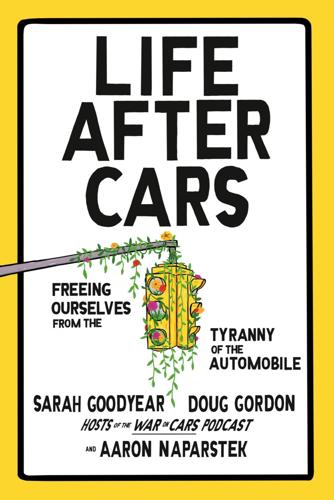
Life After Cars: Freeing Ourselves From the Tyranny of the Automobile
by
Sarah Goodyear
,
Doug Gordon
and
Aaron Naparstek
Published 21 Oct 2025
GO TO NOTE REFERENCE IN TEXT “The dominant paradigm of our streets”: Meredith Glaser, interview with Doug Gordon, June 18, 2024, Ghent. GO TO NOTE REFERENCE IN TEXT “If you’re an international star”: Velo Team, “Olympic Gold Medalist and NBA Star Devin Booker Rides Lime Bike Share in Paris,” Velo, August 13, 2024, velo.outsideonline.com/olympics/olympic-gold-medalist-and-nba-star-devin-booker-rides-lime-bike-share-in-paris. GO TO NOTE REFERENCE IN TEXT A recent study found that in central Paris: Rosie Frost, “Cycling Is Now More Popular Than Driving in the Centre of Paris, Study Finds,” Euronews, April 12, 2024, euronews.com/green/2024/04/12/cycling-is-now-more-popular-than-driving-in-the-centre-of-paris-study-finds.
…
You need to be able to be whisked away from all that commotion in privacy and style,” Velo magazine reported. “That’s why…NBA player Devin Booker chose to leave a restaurant on a bicycle—wait, seriously?” Yes, seriously. Booker was just one of thousands upon thousands of people in town for the Olympics who took advantage of the city’s abundant bike-share offerings, which had been beefed up in advance of the games. And like those other visitors to the City of Light, Booker got to experience firsthand what has become one of the easiest and most convenient ways to get around Paris: on two wheels. Under the leadership of Mayor Anne Hidalgo, a member of the Socialist Party who took office in 2014, this city of 2.16 million has created hundreds of kilometers of new bike lanes and huge new car-free green spaces along the River Seine, with a strong emphasis on improving public health and quality of life.
…
Sarah was there to see what Bauters and his allies in Emeryville have been working to create as part of the city’s Active Transportation Plan, adopted in 2023—a well-connected bike infrastructure network that links the entire small city, expands and improves green space, and improves pedestrian and bike access to public transit. She unlocked a bike from the Bay Wheels bike-share dock on the sidewalk and gave Miss Reyna a pet on the head. “You ready to go?” Bauters asked. And then they were off to ride Emeryville’s bike network, with the mayor proudly narrating every turn, bridge, and park along the way. Bauters became mayor of Emeryville in 2021. The city of thirteen thousand, wedged between Berkeley and Oakland in California’s Bay Area, has long been a regional afterthought, a kind of infrastructural trash can for the wealthier communities that surround it.

Paved Paradise: How Parking Explains the World
by
Henry Grabar
Published 8 May 2023
The Brooklyn borough president, Marty Markowitz, rewrote the lyrics to “My Favorite Things” and sang “My Favorite Lanes” at a council hearing in protest. (His favorite lanes were not bike lanes.) A wave of prospectors came upon the curb with new visions of what should happen there: bus lanes, bike-share stations, food trucks, car-share parking, parklets, loading zones for freight, pickup and drop-off areas. Then there was Citi Bike, the bike-share system whose stations required swapping hundreds of car parking spots for thousands of bike parking spots. Dorothy Rabinowitz, a member of The Wall Street Journal editorial board, argued the failed community revolt to halt the Citi Bike stations showed that “the bike lobby is an all-powerful enterprise.”
…
“If, instead of parking a car, I erected a Bedouin tent at the curb, fed the meter, and arranged inside the tent a living-room furniture suite, I’d be hauled off before my sweet tea had time to cool.” That was in 2018. As it turned out, the bike-share stations were just breaking the surface of what might be possible. * * * Despite the controversy, Janette Sadik-Khan’s projects did not put much of a dent in the city’s supply of three million curb parking spaces. But the bike-share stations did exemplify, on an enormous scale, a new way of thinking about the curb that went beyond the old parking meter. Not surprisingly, one company interested in thinking about curb uses besides parking was Uber—the ride-hail giant whose cars now made up a significant share of traffic in central business districts, often stopping for minutes at a time to pick up or drop off passengers, but rarely parking.
…
If an eighty-foot bus stop served 100 straphangers in four hours, 6.25 people were served per hour per twenty feet of curb. In reality, bus stops serve far more people than that—in San Francisco, a bus stop served about 160 times more people per foot of curb per hour than on-street parking. Between bus stops and car storage on the productivity index were a variety of other uses: bike-share stations, food trucks, car-share parking, parklets, loading zones for freight, pickup and drop-off zones (hence Uber’s interest in the question). Human utility was a squishy metric, but you could weigh curb access in cold, hard cash, too. What made New York’s ice cream truck sting Operation Meltdown anomalous was the method of ticket avoidance—but not the number of tickets the drivers received.
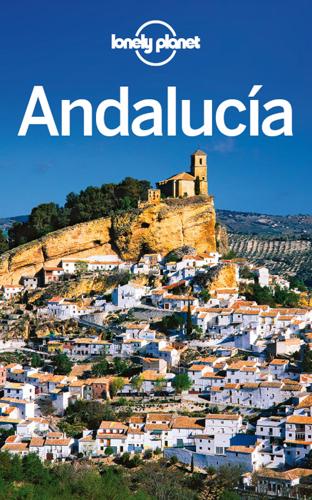
Lonely Planet Andalucia: Chapter From Spain Travel Guide
by
Lonely Planet
Published 31 May 2012
Held in the September of even-numbered years. CYCLING SEVILLE Offsetting decades of driving chaos, the inauguration of Seville’s Sevici ( 902 01 10 32; www.sevici.es; 7am-9pm) bike-sharing scheme in April 2007 was something of a godsend, even for avowed car-users. Sevici was the second bike-sharing initiative in Spain (there are now nine), opening a couple of weeks after Barcelona’s Bicing program. Despite subsequent bike-sharing projects – Paris’ Vélib was launched in June 2007 – it remains the fifth-largest scheme of its kind in Europe with 2500 bikes. Grab a two-wheeled machine from any one of 250 docking stations and you’ll quickly discover that cycling rather suits this flat, balmy metropolis that was seemingly designed with visceral experiences in mind.
…
Two more leading lights are the Vía Verde del Aceite in Jaén province and the Vía Verde Subbética in Córdoba province, which join up at the spectacular Guadajoz viaduct to form an unbroken 111km path. Cycling In a country that has amassed ten Tour de France wins since 1991, pro cycling is a serious business, but there’s a decent infrastructure for amateurs as well. Andalucía has widespread bike hire opportunities, prescribed bike trails, and a growing number of urban bike-sharing schemes (Click here). Pockets of the cycling fraternity have even embraced that heretical American invention, mountain biking. Off-road bikes are well suited to the region’s rugged terrain. Hot-spots include the El Chorro region, Parque Natural Sierras de Cazorla, Segura y Las Villas, and Las Alpujarras.
…
Best Places to Eat »Vinería San Telmo (Click here) »Los Coloniales (Click here) »Bar-Restaurante Eslava (Click here) »Restaurante Egaña Oriza (Click here) Best Places to Stay »Hotel Casa 1800 (Click here) »Hotel Amadeus (Click here) »Hotel San Gil (Click here) »Hotel Sacristía de Santa Ana (Click here) Getting Around Seville offers a multitude of ways to get around, though walking still has to be the best option, especially in the centre. The Sevici bike-sharing scheme has made cycling easy and bike lanes are now almost as ubiquitous as pavements. The tram has recently been extended to the station of San Bernardo but its routes are still limited. Buses are more useful than the metro to link the main tourist sights. The recent ‘greening’ of the city has made driving increasingly difficult as whole roads in the city centre are now permanently closed to traffic; park on the periphery.
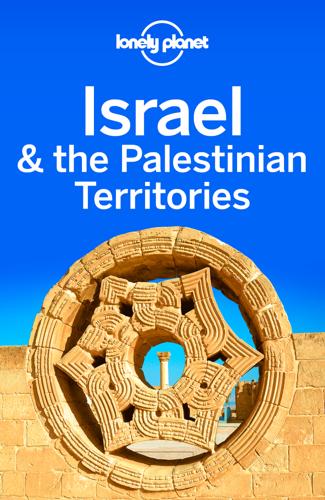
Israel & the Palestinian Territories Travel Guide
by
Lonely Planet
The city now has about 120km of dedicated bike paths running along many of the major thoroughfares, through Park HaYarkon and along the coastline from just north of Sde Dov airport southward, via Jaffa, to the suburb of Bat Yam. A free map of the bike-path network can be picked up at tourist information offices. In 2011, the municipality introduced Tel-O-Fun (%6070; www.tel-o-fun.co.il), a citywide bike-rental scheme similar to Paris’ Vélib’. Intended for commuters, it lets riders pick up and drop off the green bicycles at over 75 docking stations. A daily access card costs 17NIS (23NIS between 2pm Friday and 7pm Saturday) and a weekly card costs 70NIS. The first 30 minutes of usage are free; after that – to encourage quick turnover – there are fees that get progressive higher, starting at NIS5 per 30 minutes and quickly rising to 20NIS, 40NIS, 80NIS and then 100NIS an hour.

What's Yours Is Mine: Against the Sharing Economy
by
Tom Slee
Published 18 Nov 2015
If you don’t have the skills yourself, you could call on TaskRabbit to provide a helper; if you need an office space to work, try PivotDesk; if you need to raise funds, go to CrowdTilt; if you need your house cleaned, go to Homejoy’s web site; if you need a place to park your car, try ParkAtMyHouse; if you want to rent a bike or surfboard, reach out to Spinlister. There are Sharing Economy organizations sprouting up for all kinds of activities. Getting around is the most prevalent offering, represented by ridesharing companies (Lyft, Sidecar), car sharing (RelayRides), bike sharing (Spinlister, Divvy), and more. Sharing meals and sharing household goods are popular, and personal services such as house cleaning (Homejoy, Proprly) and errands (TaskRabbit, PiggyBee) all have a presence too. Almost all of these organizations have started in the last few years. Peers partners come from around the world.
…
The taxi service is just one part of a larger traffic management problem that cities continually struggle with, and municipal governance allows it to be balanced with other parts of the urban transit landscape such as bus services and subway services, and to fit in with other management techniques such as congestion charging. The sheer number of cities around the world also means that transit innovations can be and are imitated from city to city, such as the municipal car-sharing and bike-sharing programs that have blossomed in cities around the world over the last decade. From balancing consumer and driver interests, to providing predictable pricing, to ensuring individual cars are safe and that the system as a whole fits into the puzzle that is urban traffic, there is more to transit than a simple market exchange.
…
The Sharing Economy’s complete neglect of the history of collaborative and co-operative movements is one of the reasons it has been so easy for business to co-opt. People who support the ideas behind sharing can do better working with cities than allying with venture capitalists. Cities have been innovative in many non-commercial sharing initiatives. In transit there are the car-sharing and widely-imitated bike-sharing initiatives of Paris; there are new ideas around public transit; new initiatives around green taxi services. One of the benefits of city-level initiatives is that citizens can take the best from other places and lobby for adoption in their home town, so that cities can learn from each other. Evgeny Morozov calls the idea that technology provides a fix for complex social problems “solutionism,” and it is unfortunately endemic among those who promote the Sharing Economy.24 What is called for is a little modesty on the part of those who identify with new technologies.

The End of Traffic and the Future of Transport: Second Edition
by
David Levinson
and
Kevin Krizek
Published 17 Aug 2015
David's garage has 1 light truck and 3 bikes. 202 Figure 8.3 Source: McCarthy, Niall "Bikesharing Takes Off" Statista http://www.statista.com/chart/1148/bike-sharing-takes-off/ . 203 Which isn't surprising, by definition socialists don't respect property. 204 Few people will of course take a bikeshare bike from Minneapolis to Chicago, but Minneapolitans should automatically be able to use the Chicago system (and vice versa). And like the electric inter-urban users of yore (one could take an electric inter-urban (trolley) from Elkhart Lake Wisconsin to Oneonta, New York, it was said), one should be able to bike share between major places, even if transferring bikes periodically. 205 Figures 4.3 and 4.4 from Nice Ride Five-Year Assessment and Strategic Plan https://www.niceridemn.org/_asset/dvhz30/Nice-Ride-Five-Year-Assessment-060415.pdf 206 The television show Portlandia satirizes this in the skit "Is the Chicken Local?"
…
A related aim is broadening the subscriptions globally, so that memberships can be used on any system in the world.204 Nice Ride, the largest bikesharing system in Minnesota, has shown continuous growth from 2010 through 2015, as shown in Figure 8.4.205 This is complemented by a significant increase in those years in bicycle-dedicated infrastructure, including separated bike-lanes. More bike traffic is expected to have a safety-in-numbers property that crash rates per bicyclist will decline with an increase in the number of bicycles. Bikesharing can function as an extender of transit service, as people take transit, transfer to a bike-share to reach a final destination (or for recreation), and to return to the transit stop. This requires a station at the destination end, or the destination to be short duration. Future bikesharing need not be be station-based (with GPS and smart-phone apps), just as Car2Go allows cars to be parked on any city street in many markets.
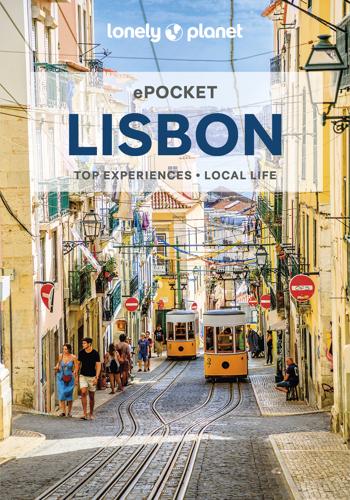
Lonely Planet Pocket Lisbon
by
Sandra Henriques
and
Joana Taborda
Published 15 Apr 2023
m Metro To reach the airport, Oriente and Marquês de Pombal. Runs 6.30am to 1am. Single tickets €1.50. U Tram To travel through the old quarters. Single tickets €3. J Bus Your best bet for reaching neighbourhoods further out. Single tickets €2. H Cycling Gira (www.gira-bicicletasdelisboa.pt) is the city’s bike-sharing scheme, with 48 stations around the city (more coming soon). Gare do Oriente | ARCHITECT: SANTIAGO CALATRAVA NIDO HUEBL/SHUTTERSTOCK © Lisbon Neighbourhoods Bairro Alto & Chiado Baixa & Rossio Mouraria, Alfama & Graça Belém Parque das Nações Marquês de Pombal, Rato & Saldanha Estrela, Lapa & Alcântara 1Top Experience Travel Back in Time at the Convento do Carmo Admire Praça do Comércio Unearth History at the Núcleo Arqueológico da Rua dos Correeiros Take a Scenic Ride on Tram 28 Explore Castelo de São Jorge Tour Museu Nacional do Azulejo Wander through 16th-century Mosteiro dos Jerónimos Muse Over Contemporary Art at the Museu Coleção Berardo Marvel at Marine Life at the Oceanário Immerse Yourself in Art at Museu Calouste Gulbenkian Discover Art & Relics at Museu Nacional de Arte Antiga Bairro Alto & Chiado Two neighbourhoods, two very different personalities.
…
Bicycle ATraffic, trams, hills and cobbles make cycling a challenging prospect. There are pleasant rides along a bike lane beside the Rio Tejo, however. AA handy place to rent bikes is Bike Iberia (www.bikeiberia.com), a short stroll from Cais do Sodré. AFor shorter trips, you can use Gira (www.gira-bicicletasdelisboa.pt), the city’s bike-sharing scheme with 48 stations around the city (and more on the way). Taxi & Ride-Share ATaxis in Lisbon are plentiful. Try the ranks at Rossio and Praça dos Restauradores, near stations and ferry terminals. AThe fare on the meter should read €3.25 (daytime minimum fare). AYou will be charged extra for luggage and 20% more for journeys from 9pm to 6am.
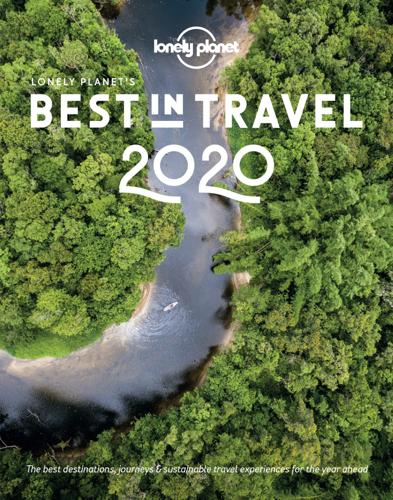
Lonely Planet's Best in Travel 2020
by
Lonely Planet
Published 21 Oct 2019
Elsewhere, cultural touchpoints include the Denver Art Museum, the Clyfford Still Museum and the Boettcher Concert Hall, and make Denver the place to experience the greats, while up-and-coming creative haven River North Art District (aka RiNo) features fledgling artists, microbreweries and humming restaurants. Plus, two new hotels, the Ramble and the Source, have just opened in the heart of RiNo, making this neighborhood a perfect home base for exploring. With a well-established bike share, plus 137km of paved trails and an extensive public transport system, the city is easier to get around without a car than ever before. UNMISSABLE EXPERIENCES • Admire the art and architecture of the Denver Art Museum, which houses one of the country’s largest collections of Native American art
…
• By Karyn Noble BEST SUSTAINABLE TRIPS FOR FAMILIES If your family loves to travel but you all worry about the environmental, social and economic effect of doing so, then it’s time to take a more sustainable approach to your trips. We’ve identified ten destinations where you can minimise the impact of your family’s travels. 1 AUSTRIA Explore the kid-friendly Austrian capital of Vienna, which offers more organic farmland than any other city and has both ‘Green Taxis’ and plenty of bike-share stations for getting around. Find a small-scale farmstay for accommodation, then keep the family’s legs moving by cycling, hiking and swimming in Weissensee. Make time for a visit to Werfenweng: a car-free, playground-rich lakeside town with green vehicles for visitors. Vienna has a large number of playgrounds, some fantastic museums for children and the splendid Schloss Schönbrunn where kids can dress up

Lonely Planet Lonely Planet's Best in Travel 2022
by
Lonely Planet
Published 26 Oct 2021
Elsewhere, cultural touchpoints include the Denver Art Museum, the Clyfford Still Museum and the Boettcher Concert Hall, and make Denver the place to experience the greats, while up-and-coming creative haven River North Art District (aka RiNo) features fledgling artists, microbreweries and humming restaurants. Plus, two new hotels, the Ramble and the Source, have just opened in the heart of RiNo, making this neighborhood a perfect home base for exploring. With a well-established bike share, plus 137km of paved trails and an extensive public transport system, the city is easier to get around without a car than ever before. UNMISSABLE EXPERIENCES • Admire the art and architecture of the Denver Art Museum, which houses one of the country’s largest collections of Native American art
…
• By Karyn Noble BEST SUSTAINABLE TRIPS FOR FAMILIES If your family loves to travel but you all worry about the environmental, social and economic effect of doing so, then it’s time to take a more sustainable approach to your trips. We’ve identified ten destinations where you can minimise the impact of your family’s travels. 1 AUSTRIA Explore the kid-friendly Austrian capital of Vienna, which offers more organic farmland than any other city and has both ‘Green Taxis’ and plenty of bike-share stations for getting around. Find a small-scale farmstay for accommodation, then keep the family’s legs moving by cycling, hiking and swimming in Weissensee. Make time for a visit to Werfenweng: a car-free, playground-rich lakeside town with green vehicles for visitors. Vienna has a large number of playgrounds, some fantastic museums for children and the splendid Schloss Schönbrunn where kids can dress up

Lonely Planet Pocket Seoul
by
Lonely Planet
TAWATCHAIPRAKOBKIT/GETTY IMAGES © Hiking With several hills and mountains within its boundaries, and even more nearby, Seoul is a fantastic place for hiking. Trails are well marked and vary from relatively easy strolls of a few hours to a 10-day, 157km hike around the city. Cycling Seoul’s bike-sharing scheme can be used by visitors. The green-and-white bikes and their matching docking stations can be found at over 150 locations across the city. To use the bikes, first purchase a voucher at www.bikeseoul.com to obtain an unlock code, which is then keyed in on the bike itself (select the ‘Foreign Tourist’ option).
…
Car & Motorcycle Driving is on the right, but we recommend first-time visitors to Seoul give driving a miss. Traffic jams, impatient road users and the lack of street names, directional signs and parking are not a recipe for an enjoyable holiday, particularly when the city’s public transport is one of the world’s best. Bicycle Seoul Bike is a bike-sharing scheme with green-and-white bikes and docking stations at over 150 locations. The website (www.bikeseoul.com) has a live map of all docking stations and available bikes. Buy a voucher online to get a code, which you key in on the bike (select ‘Foreign Tourist’). The bikes cost ₩1000 per hour for up to two hours, and ₩1000 every half-hour after that.

Lisbon Like a Local
by
DK
We won’t blame you for getting distracted by a great view or pretty azulejos but stay sharp and keep an eye out for tram rails. Lastly, wear the right shoes – there’s no place for heels or slick soles on the city’s steep and slippery calçadas (tiled pavements). On wheels Thanks to a flurry of competing bike-sharing schemes and ongoing investment in new cycle lanes (60 km/ 37 miles and counting), Lisbon is getting better when it comes to cycling. Gira is the original and top bike-sharing scheme, with hundreds of docking stations around town. Renting one of their 1,400 bikes will set you back €2 per day, with an additional charge per 45-minute ride. Simply download the app to get started. But what about the hills?

Vancouver Like a Local
by
Jacqueline Salomé
On wheels Depending on who you speak to, the locals either love or hate the city’s cycle infrastructure. Cyclists are huge fans of the endless bikeways and dedicated cycle paths that run alongside most of the city’s main roads. But many streets have been narrowed and, in some cases, roads have been closed to accommodate this, much to the chagrin of local drivers. Mobi Bike, Vancouver’s bike share scheme, has stations dotted throughout the city (you can pay per ride or it’s $15 for unlimited rides in a 24-hour period), so you can pedal along scenic cycleways until your heart’s content. Be sure to follow the rules of the road, such as obeying traffic signals, signaling when turning, and giving way to pedestrians – stick to the side of the path clearly marked for bikes rather than feet.
…
It’s dotted with inviting swimming holes, which buzz on sunny weekends with lively groups of friends enjoying a refreshing (read: chilly) dip. g OUTDOORS g Contents Scenic Cycles Biking in Vancouver isn’t just a way to get around, it’s a way of life. The city’s passion for cycling is reflected in its weaving bike lanes, lush gravel trails, hip rental shops, and bike shares. g OUTDOORS g Contents Scenic Cycles ARBUTUS GREENWAY SPIRIT TRAIL STANLEY PARK SEAWALL FISHERMAN’S TRAIL ADANAC BIKE PATH VANCOUVER TO STEVESTON g Scenic Cycles g Contents Google Map ARBUTUS GREENWAY Map 3; Start at 6th Avenue at Fir Street, Kitsilano; ///siesta.slab.boat You really can’t go wrong with this super-safe and super-scenic bike trail, which acts as the city’s main north–south thoroughfare for two-wheelers.
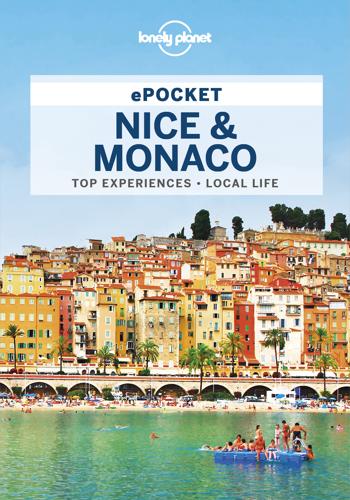
Lonely Planet Pocket Nice and Monaco 3 3rd Ed
by
Lonely Planet
Published 15 Apr 2024
Getting Around Nice’s excellent public transport system, operated by Lignes d’Azur (%08 10 06 10 06; www.lignesdazur.com), includes a modern, dependable fleet of trams and buses, with the tram line 2 giving easy access to the port and airport. L Tram The tram is generally your best bet for journeys between the train station, the airport, the port and the city centre. J Bus Buses are more useful for destinations along the beachfront and in outlying areas like Cimiez. H Bicycle The city’s bike-share program Vélo Bleu (%04 93 72 06 06; www.velobleu.org) offers a low-cost way to explore Nice. Nice & Monaco Neighbourhoods Vieux Nice New Town & Promenade des Anglais Cimiez, Libération & Vernier Le Port-Garibaldi Monaco 1Top Experiences Browse at Cours Saleya Markets Climb the Staircases to Colline du Château Stroll Along Promenade des Anglais Time Travel at Musée Masséna Admire Artistic Genius at Musée Matisse Daydream at Musée National Marc Chagall Discover Nice’s Artists at MAMAC Tour the Magnificent Casino de Monte Carlo Dive Into the Musée Océanographique de Monaco Vieux Nice Tucked into a tidy pedestrian-friendly triangle between a leafy green promontory and the sparkling blue Med, Nice’s oldest neighbourhood is an aesthetic delight.
…
Bus stops throughout the city have clear signs indicating which buses stop there. Tickets can be purchased at machines on the platform or on board the bus. All tickets (including day and week passes) must be validated at the beginning of each ride by inserting them into the machines provided on board. Bicycle Nice’s bike-share program Vélo Bleu (%04 93 72 06 06; www.velobleu.org) offers a low-cost option for exploring the city. Pick up and return bikes at more than 100 stations around the city. One-day/weeklong subscriptions cost €1.50/5, plus usage: free for the first 30 minutes, €1 the next 30, then €2 per hour thereafter.
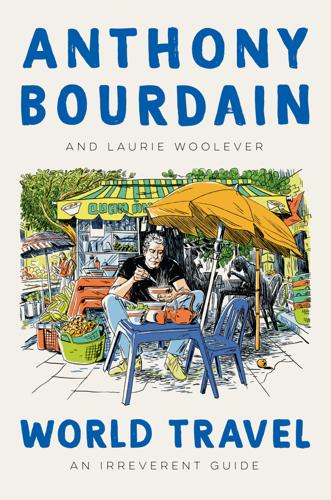
World Travel: An Irreverent Guide
by
Anthony Bourdain
and
Laurie Woolever
Published 19 Apr 2021
There’s also a SkyBus shuttle that runs frequently between the airport and the city, which is A$19/US$13 one way or A$36/US$25 round trip (www.skybus.com.au). Once in the city, you can avail yourself of Melbourne’s extensive public transportation system, composed of trains, buses, and trams, all under the umbrella of Public Transport Victoria (www.ptv.vic.gov.au). The city also has a bike-share program, and taxis can be hailed on the street or engaged from dozens of ranks around the city. MARKETING AND CHOWING DOWN IN MELBOURNE * * * “Queen Vic Market is a sprawling, busy indoor area where it seems everyone comes for their vegetables, fish, dairy, and meat, avocados, monkfish, excellent slabs of meat—for not too much money.”
…
Almost every plan we had to film during the fête had to be abandoned. A meal was arranged, our last time together, the destination on the other side of Lyon. I couldn’t reach it. There were no taxis, because no vehicles were allowed on the streets. There was a two-hour wait to get into the metro. The city has a bike-sharing system, but had no available bikes. I walked a mile, finally found one bike, rode as fast as possible, and arrived, late, in a sweat. It was my last moment in Lyon with Tony, and somehow it seemed apposite, in a city that we all believed we could convey the spirit of, only to keep discovering that it was more complex, more mystical, just outright bigger in every way than any one of us could have known beforehand.
…
Buy tickets and consult maps in the stations; the Régie autonome des transports parisiens (RATP), which operates the Metro, has created a fantastic free smartphone app with maps, schedules, service alerts and more—in English!—so you really have no excuse. Taxis are widely available in Paris, lined up at one of 128 taxi stands around the city, or, increasingly, with drivers willing to be hailed if they’re fifty meters or more from a stand. For city cyclists, there’s also the Vélib’, a self-service bike share system (www.velib-metrople.fr). CAFÉ CULTURE * * * Whether or not you have some time to kill before checking in to your hotel, find a nearby café in which to acclimate yourself. “Ah, Paris, city of light, city of love, city of . . . breakfast? Yes, please. The most important thing to do the instant you arrive in Paris is stop.
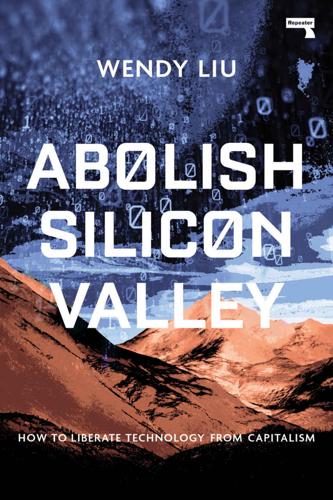
Abolish Silicon Valley: How to Liberate Technology From Capitalism
by
Wendy Liu
Published 22 Mar 2020
Join Union” by Miranda Leitsinger for KQED News, published March 13, 2019, at https://www.kqed.org/news/11732763/the-brewers-who-make-iconic-anchor-steam-beer-in-s-f-join-union. 23 See https://onezero.medium.com/an-open-letter-to-uber-we-need-to-do-right-by-our-drivers-81453fad41e1. 24 See “Uber Lays Off 400 as Profitability Doubts Linger After I.P.O.” by Kate Conger for the New York Times, published July 29, 2019, at https://www.nytimes.com/2019/07/29/technology/uber-job-cuts.html. 25 See “Uber lays off 435 people across engineering and product teams” by Megan Rose Dickey for TechCrunch, published September 10, 2019, at https://techcrunch.com/2019/09/10/uber-lays-off-435-people-across-engineering-and-product-teams/. 26 See “Lyft Buys the Biggest Bike-Sharing Company in the US” by Sean O’Kane for The Verge, published July 2, 2018, at https://www.theverge.com/2018/7/2/17526892/lyft-buys-motivate-bike-sharing-expansion. 27 See “Uber Looked at Buying Bike-Sharing Firm Motivate before Lyft — But Walked Away Over Contract and Union Issues” by Sara Salinas for CNBC, published July 3, 2018, at https://www.cnbc.com/2018/07/03/uber-looked-at-motivate-before-lyft-contract-union-issues.html.

The Rough Guide to Wales
by
Rough Guides
Published 14 Oct 2024
All are available from the main office on Sloper Rd (Mon–Fri 9am–5pm), at Paypoint outlets throughout the city, or on board buses themselves. By taxi There are ranks at Central station, Queen Street station, Duke St by the castle and St Mary’s St; try Capital Cabs (029 2077 7777) or Dragon Taxis (029 2033 3333). By bike Pedal Power offers an excellent bike-rental scheme with outlets at Cardiff Caravan Park (March–Oct Mon–Sat 10am–4pm; Nov–Feb Tues–Sat 10am–4pm; £20/4hr, £24/day; http://cardiffpedalpower.org) and at a kiosk just beyond the Norwegian Church in Cardiff Bay; April–Oct only. Cardiff tours and trips In the absence of an kind of hop-on, hop-off bus tours, you can exert a little more energy with Fogo’s Free Tours, who offer two-hour guided walks at 11am every Tues, Thurs, Sat & Sun from the John Batchelor statue on The Hayes; booking is required (http://cardiffwalkingfogosfreetours.com).

Smart Cities: Big Data, Civic Hackers, and the Quest for a New Utopia
by
Anthony M. Townsend
Published 29 Sep 2013
But cities have become highly adept at sharing and copying new innovations on their own, as evidenced in an accelerating diffusion of good ideas. Bus rapid transit, a scheme for improving the capacity of bus lines with dedicated lanes and other clever tweaks, has taken forty years to spread from its birthplace in Curitiba, Brazil, in 1974 to over 120 cities all over the world.32 Public bike sharing, which surged onto the global stage with the launch of Paris’s Vélib system in 2007, has reached a similar footprint in just a few years. Today, there is a bustling trade not just in case studies and best practices of smart-city innovations but actual working technology: code, computer models, data, and hardware designs.
…
Soon, it may take its place alongside the handful of international cognates—vaguely evocative terms like “sustainability” and “globalization”—that no one bothers to translate because there’s no consensus about what they actually mean. When people talk about smart cities, they often cast a wide net that pulls in every new public-service innovation from bike sharing to pop-up parks. The broad view is important, since cities must be viewed holistically. Simply installing some new technology, no matter how elegant or powerful, cannot solve a city’s problems in isolation. But there really is something going on here—information technology is clearly going to be a big part of the solution.
…
Pradas beckons me outside to a rack of public bicycles just outside and taps a card to unlock my ride. I offer some euros, but he shrugs and smiles. “It’s OK, it’s my daughter’s card.” A stunningly simple innovation for a world of face recognition and predictive modeling, the citizen card is a key that unlocks Zaragoza both online and in the real world. The same card that unlocks a bike share will get you on the Wi-Fi, check out your books at the library, and pay for the bus ride home. Shops and cafés offer cardholders discounts, which has made the program wildly successful—over 20 percent of the city’s 750,000 residents signed up in the first year. As Sarasa explains, “This is all about engagement. . . .”
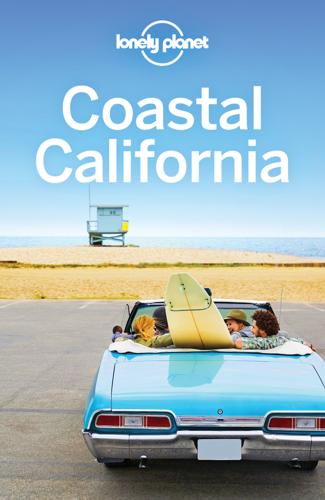
Coastal California Travel Guide
by
Lonely Planet
Bicycles are also allowed on Metro Rail trains at all times. LA has a number of bike-sharing programs. The following are especially useful for visitors: Metro Bike Share (https://bikeshare.metro.net) Has more than 60 self-serve bike kiosks in the Downtown area, including Chinatown, Little Tokyo and the Arts District. Pay using your debit or credit card ($3.50 per 30 minutes) or TAP card, though you will first need to register it on the Metro Bike Share website. The smartphone app offers real-time bike and rack availability. Breeze Bike Share (www.santamonicabikeshare.com; per hour $7, monthly/annually $25/99) Runs self-serve kiosks all over Santa Monica, Venice and Marina del Rey.
…
BART The fastest link between downtown and the Mission District also offers transit to SF airport (SFO; $8.95), Oakland ($3.45) and Berkeley ($4). Four of the system's five lines pass through SF before terminating at Daly City or SFO. Within SF, one-way fares start at $1.95. Bicycle Contact the San Francisco Bicycle Coalition for maps, information and legal matters regarding bicyclists. Bike sharing is new in SF: racks for Bay Area Bike Share (%855-480-2453; www.bayareabikeshare.com; 30-day membership $30) are located east of Van Ness Ave, and in the SoMa area; however, bikes come without helmets, and biking downtown without proper protection can be particularly dangerous. Bicycles can be taken on BART, but not aboard crowded trains, and never in the first car, nor in the first three cars during weekday rush hours; folded bikes are allowed in all cars at all times.
…
Better World Club (%866-238-1137; www.betterworldclub.com) Annual membership in the bicycle club (from $40) gets you two 24-hour emergency roadside-assistance calls and transport within a 30-mile radius. California Bicycle Coalition (http://calbike.org) Links to cycling route maps, events, safety tips, laws, bike-sharing programs and community nonprofit bicycle shops. Road Rules ACycling is allowed on all roads and highways – even along freeways if there’s no suitable alternative, such as a smaller parallel frontage road; all mandatory exits are marked. ASome cities have designated bicycle lanes, but make sure you have your wits about you in traffic.

The Fourth Revolution: The Global Race to Reinvent the State
by
John Micklethwait
and
Adrian Wooldridge
Published 14 May 2014
Around the world local governments are reasserting themselves, upending national politics, and scrambling old ideological divisions in the process. Local governments have some of the most vivid figures, such as Rahm Emanuel in Chicago and Ron Huldai in Tel Aviv. They also have some of the great ideological cross-dressers: In London Boris Johnson, a conservative, embraced what he called “an entirely communist scheme” of bike sharing while his predecessor, “Red” Ken Livingstone, introduced the entirely free-market scheme of road pricing. Local politicians are increasingly leaping over national politicians in the public mind. People not only trust them far more but are often more interested in what they have to say as well.
…
The same is true of states: Jerry Brown has been particularly active in forging relations between California and local Chinese authorities. Ideas are also leaping from one local government to another without going through the medium of national governments: Over three hundred cities have introduced bike-sharing programs, for example. The old world, where the most important global relations were between national governments or capital cities, is being replaced by a much more networked world in which successful mayors and governors weave ever-more-complicated webs of relationships with one another. A LITTLE EXPERIMENTATION The final curse of the old state that we hope the Fourth Revolution will dispel is in a sense the sum of the others: immobilisme.
…
AARP, 124 absolutism, 32, 43 academies, 212, 214 Adams, John, 249, 250, 251, 254, 261, 269–70 Adonis, Andrew, 131 affirmative action, 79, 88 Africa, Chinese businesses in, 152 African National Congress, 254 agriculture: in emerging world, 238 subsidies for, 185, 237–38 Agriculture Department, U.S., 108, 237–39 airports, privatization of, 235 Ai Weiwei, 34 Alton Locke (Kingsley), 58 American Federation of State, County and Municipal Employees, 114 American Medical Association, 204 American Revolution, 6–7, 44, 45, 46, 264 Amtrak, 235 Anderson, Chris, 191 Antholis, Bill, 218 Arab League, 253 Arab Spring, 144 Aravind Eye Care System, 203, 204 Archer Daniels Midland, 238 Argentina, economy of, 120 Army, U.S., 182 Arnold, Matthew, 58 Asia: aging population of, 165 economic crisis of 1997 in, 142–43 pensions in, 141–42 in sixteenth and seventeenth centuries, 34–36 Asquith, Herbert, 61 Australia: civil service in, 215 overlapping areas of government responsibility in, 108 “Austrian school,” 83 automobile industry, 189, 190, 191 Bagehot, Walter, 128 Balázs, Étienne, 40 Balcerowicz, Leszek, 96 ballot initiatives, 127 Bangalore, India, 201, 218 Bank of England, 43 Barboza, David, 162 Bartlett, Bruce, 121 Baruch, Bernard, 233 “basic minimum,” 87 Baumol, William, 19, 110, 178–79, 187, 222 Baumol’s disease, 19, 109–11, 174, 178–79, 183, 222 Becker, George, 84 Beijing, 34–35 Belgium, 228 Bell, Daniel, 157 Bentham, Jeremy, 49, 57, 85 Berggruen, Nicolas, 124, 129, 131, 159 Berlin, Isaiah, 48, 226, 228 Berlin Wall, 253 Berlusconi, Silvio, 12, 128, 196, 227 Bertelsmann Foundation, 143 Best Party, 261 Bevan, Aneurin, 75 Beveridge, William, 74, 75, 78, 90, 97, 245 Beveridge Report, 74 bike sharing, 216–17, 219 Bildt, Carl, 175 Bill of Rights, English (1689), 43 Bill of Rights, U.S., 226, 250 Bismarck, Otto von, 6, 7, 60, 174–75 Blair, Tony, 96, 194, 262 on small government, 95, 211–14 Bleak House (Dickens), 50 Bloom, Nick, 191 Bloomberg, Michael, 196–97, 217 Bloomberg Businessweek, 129–30 Boao Forum for Asia, 153 Bodin, Jean, 29 Boer War (1899–1902), 61 Böhlmark, Anders, 176 Bolsa Família, 206 Booth, Charles, 66 Boston, Mass., 210 Boston Consulting Group, 172 Boston Tea Party, 240 Bourbon Restoration (1814), 46 Bo Xilai, 154, 218 Brandeis, Louis, 263 Brazil, 13, 18, 96, 153 entitlement reform in, 17, 206 breakaway nations, 260 Bright, John, 56 British Airways, 94 British Gas, 94 British Medical Association, 114 British Rail, 213 British Telecom, 94, 234 Brown, George, 134 Brown, Gordon, 99, 130, 215 Brown, Jerry, 10, 91, 106, 119, 125, 219 fiscal reforms of, 118, 129–30 Brown, Pat, 105–6, 124–25 Buchanan, James, 84, 262 Bureau of Corporations, 72 Bureau of Land Management, 236 Bush, George H.W., 95 Bush, George W., 10, 98, 164, 177, 198, 255, 262 business sector: globalization and, 191, 193 innovation in, 194 productivity in, 18–19 reinvention of, 189–92 technology and, 191 Butler, R.A., 75 California, 105–32 ballot initiatives in, 127 Baumol’s disease and, 109–11 constitution of, 107 deficit in, 118–19 education in, 111 as exemplar of Western state failures, 106–7 fiscal reform in, 129–30 old and well-off as primary beneficiaries of public spending in, 122–23 outdated governmental system of, 107–8 pensions in, 113, 115, 119–20, 130 political polarization in, 124–25 population of, 108 prison system in, 112–13 proliferation of regulation in, 116 Proposition 13 in, 91, 92, 107 public contempt for government in, 106, 112 public-sector unions in, 112–15, 120 special interest groups in, 112–15 taxes in, 116, 129 unfunded liabilities in, 119, 129, 130 California Board of Barbering and Cosmetology, 116 California Correctional Peace Officers Association (CCPOA), 112–13 California Environmental Quality Act (1970), 117 California Public Policy Center, 119 California Teachers Association, 113 Cameron, David, 130–31, 158, 199, 215 Canada, 199 Capio, 171–72 capitalism, 50–54 democracy’s presumed link to, 261–62 inequality and, 262–63 state, see state capitalism as supposedly self-correcting, 70 Capitalism and Freedom (Friedman), 86 Cardoso, Fernando Henrique, 96 Carlino, Gerald, 218 Carlyle, Thomas, 44, 57 Carney, Mark, 215 Carswell, Douglas, 260 Carter, Jimmy, 198 Carville, James, 97 Castiglione, Baldassare, 33 Catholics, 38 Cato Institute, 238 Cavendish, William, 31, 40 Cavendish family, 31, 47 Cawley, James, 204 CCTV cameras, 182, 226 Center on Budget and Policy Priorities, 124 Central Party School, 150, 156 Central Provident Fund, 140 Centre for Policy Studies, 92 centrism, 95, 98 Chamberlain, Joseph, 66 Charles I, King of England, 31 Charles II, King of England, 32, 38, 42 Charlie and the Chocolate Factory (Dahl), 228 charter schools, 212, 214, 215 Chartists, 51, 58 checks and balances system, 226, 250, 255–56, 265 Chidambaram, Palaniappan, 96 Child, Josiah, 39 Childs, Marquis, 169 China, Imperial, 37 bureaucracy of, 37, 40–41 innovation disdained by, 41 in seventeenth century, 34–36 trade with West rejected by, 41 China, People’s Republic of: aging population of, 164, 183 Asian-state model in, 136–37, 145, 149, 152, 156 Communist ideology in, 63, 145 corruption in, 4, 18, 148, 149, 186 Cultural Revolution in, 156 economy of, 3, 146, 163 education in, 147, 148–49, 164 efficiency of government in, 146, 153, 159 elitism in, 161–62 governmental changeover in, 159 health care in, 164 health insurance in, 141, 156 India contrasted with, 146, 153 lack of public confidence in, 13 leadership training in, 105 local government in, 160–61, 217–18 long-term outlook of, 159 mandarin tradition of, 138, 156, 157 meritocracy in, 156–63, 164, 254 pensions in, 156, 183 Singapore as model for, 145 slowing of economic growth in, 164 social-service NGOs in, 158 state capitalism in, 64, 149–56, 234 state-owned enterprises (SOEs) in, 150–52, 154–55 urban population increase in, 149 U.S. contrasted with, 147, 153 Western democracy seen as inefficient by, 145 China Executive Leadership Academy in Pudong (CELAP), 1–5, 18, 145, 153, 156 China Mobile, 151 China Youth Daily, 148 Chongqing, China, 218 Christensen, Clayton, 203 chronic diseases, 183, 200, 204 Internet and, 209 Chua, Amy, 143 Churchill, Winston, 68, 75, 247 cities: population growth in, 149, 218 working relationships between, 218–19 Citizens United decision, 240 Civil War, English, 6, 31, 38, 43 Clark, Joseph, 77 class struggle, 62–63 Clinton, Bill, 10, 95, 96–97, 98, 142, 217 Clinton, Hillary, 162 Coase, Ronald, 84, 229 Cobbett, William, 49 Cobden, Richard, 56 Code for America, 216 Coggan, Philip, 263 Cohen, Jared, 210–11 Cohen, Leonard, 185 cold war, 76, 252 Colloquies on Society (Southey), 224–25 commerce, nation-state and, 33 Committee on Social Thought, 83 Common Sense (Paine), 44 Communist Party, Chinese, 63, 145, 153 elitism in, 161–62 as meritocracy, 156–57 Organization Department of, 151 Communists, communism, 7, 8, 63–64, 71, 77, 134, 137, 145, 225 successes of, 90–91, 252 compassion, 61 “compassionate conservatism,” 98 competitive advantage, 189 Condorcet, Nicolas de, 222 Confederation of Medical Associations in Asia and Oceania, 204 Congo, 22 Congress, U.S., 16, 100, 228 approval ratings of, 11 dysfunction in, 256 lobbies and, 238–40, 257 Congressional Budget Office, 15, 242 Congress Party, India, 162 Conservative Party, British (Tories), 11, 69, 75 conservatives, conservatism, 10 “compassionate,” 98 see also Right Constitution, U.S., 108, 109, 256 Fourteenth Amendment of, 120 Constitution of Liberty, The (Hayek), 92 consumer choice, 191 consumption taxes, 123–24 Corn Laws, 50, 238, 240 corruption, 185–86 crime, Western state and, 181–82 Crimean War, 65 Croly, Herbert, 71 Cromwell, Oliver, 32 Cromwell, Thomas, 6, 37 crony capitalism, 72, 112, 155, 234, 237–38, 246, 269 Cultural Revolution, 156 Czech Republic, 252 Darwin, Charles, 59 Das, Gurcharan, 13 Davies, Mervyn, 215 decentralization, 216–19 defense, spending on, 16 Defense Department, U.S., 20 deficits, deficit spending, 14, 100, 118–22, 177, 231–32, 241 unfunded liabilities and, 119, 232 democracy: in Asian-state model, 17 big government as threat to, 251, 264–69 as central tenet of Western state, 5, 8, 16–17, 22–23, 136, 141, 221 Founding Fathers and, 226, 250, 265 Fourth Revolution and, 249–70 globalization and, 262 imperfections of, 17, 127–28, 141, 143–44, 145, 226–27, 247–48, 251, 269 income inequality and, 263 in India, 136, 146 individual freedom as threatened by, 226, 250–51 nation-states and, 259, 262 presumed link to capitalism of, 261–62 as presumed universal aspiration, 261–62 as rooted in culture, 262 scarcity and, 247–48 self-interest and, 250, 260 short-term vs. long-term benefits in, 260–61, 264 special-interest groups and, 16–17, 111–15, 247, 251 strengths of, 263 twentieth-century triumph of, 252 twenty-first-century failures of, 252–61 uneven history of, 249–50 welfare state as threat to, 22, 142 Democracy in America (Tocqueville), 252 Democracy in Europe (Siedentop), 251 Democratic Party, U.S., 97, 240 spending curb approved by, 12 spending cuts opposed in, 100, 255 Democratic Review, 55 Deng Xiaoping, 142 Singapore as inspiration to, 145 Denmark, 22, 210 disability insurance in, 244 “flexicurity” system in, 173, 176 innovation in, 220 1980s financial crisis in, 176 reinvention of welfare state in, 173–74 Depression, Great, 69–70, 85 Detroit, Mich., 218–19 bankruptcy of, 14, 119 Detter, Dag, 236 Dicey, A.V., 57 Dickens, Charles, 50, 57–58 Dirksen, Everett, 192–93 disability-insurance reform, 244 Discovery Group, 211 discretionary spending, 195 diversity, 214–16 DNA databases, 182 Dodd-Frank Act (2010), 117, 239 Doncaster Prison, 214 Downey, Alan, 177 Drucker, Peter, 198 Dubai, 144, 217 Dukakis, Michael, 95 Dundase family, 49–50 East India Company, 36, 40, 47, 48, 50, 56, 150, 240 Eastman Kodak, 190–91 École Nationale d’Administration, 194 economic-freedom index, 174 Economist, 86, 97 Edison, Thomas, 179 education, 7, 9, 16, 48, 58, 197 charter schools in, 212, 214, 215 in China, 147, 148–49, 164 cost/outcome disparities in, 194–95 declining quality of, 111 diverse models for, 214–15 government domination of, 10 international rankings of, 19, 148, 206–7 preschool, 123 reform of, 58–59, 212 in Sweden, 171, 176–77 technology and, 179–80 voucher systems for, 171, 176–77, 220 in welfare state, 68, 69 Education Act (British, 1944), 75 Egypt, 155 failure of democracy in, 253, 262 Mubarak regime overthrown in, 144, 253 Eisenhower, Dwight, 77 elections, U.S., cost of, 257 electrocardiogram (ECG) machines, 205 elitism, 135, 136, 138–39 in Chinese Communist Party, 161–62 in U.S., 162 welfare state and, 77–78 Emanuel, Rahm, 216 emerging world: agriculture in, 238 as failing to grasp technological change, 18 innovation in, 17 lack of public confidence in, 13 local government in, 217 need for reform in, 14 urban population shift in, 218 “End of History, The” (Fukuyama), 262 Energetically Autonomous Tactical Robot (EATR), 182 Enlightenment, 42 entitlement reform, 95, 217, 234, 241–46 beneficiaries’ responsibilities and, 245 conditionality in, 17, 206, 244 disability insurance and, 244 globalization and, 245 information revolution and, 245 in Latin America, 17, 206, 244 means testing and, 243, 245 transparency and, 244–45 entitlements, 9, 10, 15, 16, 79, 100, 127, 141, 222, 228 aging population and, 124, 183–84, 232, 241–42 middle class and, 11, 17 pensions as, 79, 184, 243 as unfunded liabilities, 245–46, 264, 265 universal benefits in, 124, 141, 243–44 equality: capitalism and, 262–63 liberal state and, 69 of opportunity vs. result, 79, 228 sexual, 169 welfare state and, 68–69, 74, 79, 222 Western state and, 221 Equality (Tawney), 69 Erdogan, Recep Tayyip, 13, 254 Estonia, 121, 210 Euclid, 31, 33 eugenics, 67–68, 78, 169 euro, 99, 100, 258 euro crisis, 12, 100, 126, 130, 258–59 Europe: age of conquest in, 36–37, 39 compulsory sterilization in, 78 contest for secular supremacy in, 38–39 democracy’s failures in, 258–59 dysfunctional political systems in, 126 economic crisis in, 126 Enlightenment in, 42 government bloat in, 98–99 mercantilist policies in, 40 national consolidation in, 38–39 old-age dependency ratio in, 14–15 postwar era in, 78 public spending in, 99–100 revolutions of 1848 in, 54 technocratic bent in, 76–77, 259 transnational cooperation in, 76 wars of religion in, 34, 38 welfare state in, 75 European Atomic Energy Community, 76 European Central Bank, 258–59 European Coal and Steel Community, 76 European Commission, 254 European Economic Community, 76 European parliament, 258 European Union, 13, 16, 17, 76, 99, 108, 109, 258–59, 260 Extraordinary Black Book, The (Wade), 49 Exxon, 154 Fabians, 8, 21, 67, 72, 73, 96, 134, 169, 220 Facebook, 190–91 Falklands War, 94 Farrell, Diana, 132 fascism, 8, 71, 77, 252 Fatal Conceit: Errors of Socialism, The (Hayek), 134 Federal Communications Commission, 73 Federalist Papers, 5, 265 Federal Register, 117 Ferdinand II, King of Aragon, 37 filibusters, 256 financial crisis of 2007–8, 100, 164, 263 financial-services industry, 239 Finer, Samuel, 27, 276 Finland, 210 innovation in, 220 1990s financial crisis in, 176 fiscal crisis, as incentive for change, 198 Fisher, Antony, 81–82, 90, 92, 280 “flexicurity,” 173, 176 Ford, Henry, 189, 191, 201 fossil fuels, government subsidies for, 239 Foster, William, 58 Founding Fathers, 108 democracy and, 226, 250, 265 liberal state and, 44–45, 222 Fourteenth Amendment, 120 Fourth Revolution, 5 Asian-state competition as impetus for, 17, 163–64, 247 decentralization and, 216–19 democratic reform and, 249–70 diversity and, 214–16 entitlement reform and, see entitlement reform failure of current model as impetus for, 14–17 freedom and, 247, 248, 268, 270 government efficiency in, 233 ideological foundation of, 21, 28, 221–23, 232 information revolution and, 245, 246–47 infrastructure and, 232 innovation and, 219–20 monetary and fiscal reform in, 266–67 pluralism in, 211–14 as postbureaucratic, 211 pragmatism and, 18–19, 232–33 privatization and, 234–37 security and, 232 small government as principle of, 232, 264–69 subsidy-cutting and, 237–41 technology and, 18, 19–20, 233, 266–67 France, 43, 78 deficit spending in, 14 expanded bureaucracy in, 60 government bloat in, 12 pension age in, 16 public spending in, 75, 99–100 ruling elite of, 194 state capitalism in, 235 Francis I, King of France, 37 Fraser Institute, 174 fraternity, welfare state and, 74, 79 Frederick the Great, King of Prussia, 38 freedom: balance between security and, 230–31 as central tenet of Western state, 8, 23, 46, 68–69, 222, 256 core elements of, 223–24 democracy as threat to, 226, 250–51 diminished concept of, 225–27, 228–29 Fourth Revolution and, 247, 248, 268, 270 Hobbes and, 33 as ideological basis of liberal state, 69, 223–26 Mill and, 47–48, 55, 222, 224, 228, 250, 256, 268 necessary constraints on, 223 welfare state as threat to, 22, 74, 222, 265 see also rights Freedom House, 143, 252 free markets, 49, 59, 142 Friedman as evangelist for, 84, 86 Thatcher and, 93 free trade, 50, 54, 57 Mill’s espousal of, 55 French Revolution, 6, 44, 45–46, 249 Friedman, Milton, 81–87, 89, 93, 106, 128, 171, 280 background of, 82 big government as target of, 82, 84–85, 88 as free-market evangelist, 84, 86 Nobel Prize of, 82, 86, 91 Reagan and, 86 “Road to Hell” lecture of, 84 single currency opposed by, 99 Thatcher-Reagan revolution and, 8, 28, 97, 100 Friedman, Thomas, 163 Friedrich, Carl, 265 Fukuyama, Francis, 142, 143, 256, 262 Future of Freedom, The (Zakaria), 143 G20 countries, 15 Galbraith, John Kenneth, 85, 86 Galtieri, Leopoldo, 94 Galton, Francis, 68 Gardels, Nathan, 124 Gaskell, Elizabeth, 57 Gates, Bill, 97 Gazprom, 152, 153, 154 Geely, 150 General Electric (GE), 205, 243 General Motors (GM), 189, 190, 191, 233 General Theory of Employment, Interest and Money, The (Keynes), 70 Geometry (Euclid), 31 George III, King of England, 11, 41 Germany, Federal Republic of (West Germany), 75, 78, 232, 265 Germany, Imperial, 6, 60–61 Germany, Nazi, 71, 232 Germany, unified, 12, 22, 173, 186, 212 gerrymandering, 13, 106, 113, 125, 256–57, 264, 267 see also rotten boroughs Gillray, James, 227 Gladstone, William, 7 economizing by, 51–52, 224 small government as principle of, 51–52, 60 tax policy of, 51 globalization, 10, 191, 193 democracy and, 262 entitlement reform and, 245 government and, 10, 96, 200–207 health care and, 200–201 national determination and, 259–60, 262 Glorious Revolution (1688), 43 GOATs (Government of All the Talents), 215 Godolphin, Sidney, 31 Golden Dawn party, 259 Goldman Sachs, 120 Goldwater, Barry, 80, 86 Google, 189–90, 191, 233 Gore, Al, 95, 131, 198 government: anti-innovation bias of, 194–95, 212, 219 bloat in, 9–11, 18–19, 89–90, 98, 177, 222–23, 227, 229–30, 231, 233 centralization bias of, 192–93, 212, 216 challenges to reform in, 196–98 coercive power of, 198 efficiency of, 18–21, 37, 89, 187, 198–99, 213, 233, 247, 255 entrenched workforce of, 193–94 globalization and, 200–207 in-house bias of, 192, 212 local, 216–19, 267 public contempt for, 106, 112, 227–28, 230, 233, 251, 261 sunset clauses and, 118, 246, 266 technology and, 200, 207–11 uniformity bias of, 193–94, 212, 214 volunteerism and, 216 Government Accountability Office, 235 Grace Commission, 198 Gray, Vincent, 210 Great Britain: asylum seekers in, 54 as capitalist state, 50–54 commercial empire of, 39–40 deficit of, 177 education reform in, 58–59, 79, 212, 214–15 falling crime rate in, 181 fiscal reform in, 130–31 government bloat in, 89–90 health-care spending in, 90 landed artistocracy of, 48, 49 liberal revolution in, 46 low public confidence in, 11 national pride in, 61–62 patronage vs. meritocracy in, 50, 52–53, 222 postwar era in, 78 power of Anglican Church in, 48 public spending in, 9, 75 wars of, 6 “winter of discontent” in, 93 Great Depression, 69–70, 85 Great Exhibition of 1851, 54 Great Society, 77, 192 Great Western Railway, 65 Greece, 16 economy of, 120, 259 public-sector employees in, 115 public spending in, 99 Green, T.H., 61 Green River Formation, 236 Grenville family, 49–50 Grillo, Beppe, 12, 227 gross domestic product (GDP), unreliability of, 121 Grote, George, 54 Guangdong, China, 217 Gunpowder Plot (1605), 31 Hagel, Chuck, 256 Hall, Joseph, 35 Halsey, A.H., 88 Hamilton, Alexander, 5, 150 Hamilton, James, 120 happiness, right to, 48, 49 Hard Times (Dickens), 58 Havel, Václav, 252 Hayek, Friedrich, 10, 83, 85–86, 92, 93, 134, 170 Health and Social Security Department, British, 89 health care, 7, 9, 90, 98, 213 aging population and, 15, 183, 242 in China, 164 cost of, 110, 121, 205, 242–43 cost/outcome disparities in, 195 globalization and, 200–201 government domination of, 10 in India, 17, 18, 200–206 labor productivity in, 200 mass production in, 201–3 Obamacare and, 20, 98, 117, 199, 208, 217 role of doctors in, 203–5, 243 single-payer systems in, 205, 233, 243 special interest groups and, 200 in Sweden, 171–73 technology and, 183, 208–9 healthcare.gov, 199 health insurance, 141 health registries, 172, 183, 209 Heath, Edward, 92–93 Hegel, G.W.F., 45, 60–61 71 Helsinki, 220 Heritage Foundation, 92 Hewlett, Bill, 105 Higgins, David, 215 Hilton, Steve, 132 History of the Peloponnesian War (Thucydides), 250 Hitler, Adolf, 71 Hobbes, Thomas, 6, 8, 9, 21, 27–28, 29, 40, 44, 63, 135–36, 181, 219, 268 background of, 30–31 as controversial thinker, 31–32 on human nature, 29–30, 44–45 individual liberty and, 33 as materialist, 33 as royalist, 6, 18, 31–32 social contract and, 32, 34, 42, 222 Hogarth, William, 227 Hollande, François, 12, 16, 153, 184, 194 Holocaust, 78 Homestead Act (U.S., 1862), 62 House of Cards (TV show), 227 House of Commons, 127 House of Representatives, U.S., 97, 127 Howard, Philip, 118, 132, 195 Hu Jintao, 2 Huldai, Ron, 216 Hume, David, 43 Hungary, 254 Huntington, Samuel, 41–42 Hurun Report, 161 Iceland, 261 India, 8, 35, 36 China contrasted with, 146, 153 democracy in, 136, 146 economic stagnation in, 147 education in, 147 health care in, 17, 18, 200–206 infant mortality rate in, 201 lack of public confidence in, 13 local government in, 217–18 nepotism in, 162–63 Thatcherite reform in, 96 as weak state, 37 Indonesia, 142–43 health insurance in, 141 industry, landed aristocracy as opponent of, 48 Industry and Trade (Marshall), 233 information, access to, 210–11, 214 information revolution, 245, 246–47 information technology (IT), 18, 19–20 infrastructure: Fourth Revolution and, 232 spending on, 122, 232 innovation, 219–20 in business sector, 194 government bias against, 194–95, 212, 219 nation-state and, 37, 39 Institute for Energy Research, 236 Institute of Economic Affairs, 82, 92 Institute of Medicine, 204 Institute of Racial Biology, 78 interest groups, 16–17, 90, 111–15 Interior Department, U.S., 236 International Monetary Fund (IMF), 15, 76, 90 Asian financial crisis and, 142–43 Internet, 191, 260 health care and, 208–9 self-help and, 209 Iran, China and, 152 Iraq, 253 Iraq War, 143, 253 Ireland, 38 public spending in, 99–100 Isabella I, Queen of Castile, 37 Islamic world: antiscientific attitudes in, 41 in sixteenth and seventeenth centuries, 35 Istanbul, 35 Italy, 196, 259 pension reform in, 130 politicians’ pay and benefits in, 115 public spending in, 99–100 voter apathy in, 12 It’s Even Worse Than It Looks (Mann and Ornstein), 125–26, 227 Jackson, Andrew, 55 Jacques, Martin, 163 Jagger, Mick, 90 James I, King of England, 31 James II, King of England, 43 Japan, 15, 17, 36 Jarvis, Howard, 91 Jay, Douglas, 77 Jiang Jiemin, 154 Jiang Zemin, 142 Johnson, Boris, 216–17 Johnson, Lyndon, 77, 80, 87 Joseph, Keith, 92, 93 Juncker, Jean-Claude, 128 Kamarck, Elaine, 131–32 Kangxi, Emperor of China, 40 Kansas, 130 Kant, Immanuel, 224 Kaplan, Robert, 144 Kapoor, Anish, 34 Kennedy, Joseph, 73 Kentucky Fried Chicken, 185 Kerry, John, 96 Keynes, John Maynard, 22, 69–70, 76, 97 pragmatism of, 70–71 Keynesianism, 71, 77, 83, 95 counterrevolution against, 82–84 Khan, Salman, 180 Khan Academy, 180 King, Martin Luther, Jr., 79 Kingsley, Charles, 58 Kirk, Russell, 85 Kissinger, Henry, 133, 136 Kleiner, Morris, 118 Knight, Frank, 84 Knowledge Is Power Program (KIPP), 215 Kocher, Robert, 200 Kotlikoff, Laurence J., 120 Kristol, Irving, 87 Kroc, Ray, 185 Labour Party, British, 68, 69, 70, 77, 93, 94–95, 114 laissez-faire economics, 56, 57, 61, 65–66, 70, 71 Laski, Harold, 68, 134 Latin America: economies of, 8 entitlement reform in, 17, 206, 244 Lazzarini, Sergio, 153 Lee Hsien Loong, 135, 138 Lee Kuan Yew, 4, 17, 53, 133–34, 137, 139–41, 143, 144, 145, 147, 156, 170, 183, 244 authoritarianism of, 137, 138 small-government ideology of, 140, 165 Left, 62, 73, 88, 183 government bloat and, 10–11, 98 government efficiency and, 20, 187, 213 and growth of big government, 10, 98, 131, 175, 185, 228, 230, 231 subsidy-cutting and, 234, 237–38 Lehman Brothers, 14 Lenovo, 150 Le Pen, Marine, 259 Le Roy, Louis, 276 Leviathan, 10 Leviathan (Hobbes), 29, 32, 33, 34, 42 Leviathan, Monumenta 2011 (Kapoor), 34 Liberal Party, British, 68, 70 liberals, liberalism: and debate over size of government, 48, 49, 232 freedom as core tenet of, 69, 223–26, 232 right to happiness as tenet of, 48, 49 role of state as seen by, 21–22, 222–23, 226, 232 see also Left; liberal state liberal state, 6–7, 8, 220, 221 capitalism and, 50–54 competition and, 247 education in, 7, 48, 58–59 equality and, 69 expanded role of government in, 56–62 Founding Fathers and, 44–45, 222 freedom as ideological basis of, 69, 223–26, 232, 268 industrial revolution and, 246–47 meritocracy as principle of, 50, 52–53 protection of rights as primary role of, 45 rights of citizens expanded by, 7, 9, 48, 49, 51 rise of, 27–28, 269 small government as principle of, 48, 49, 51–52, 61, 232 libertarian Right, 82 liberty, see freedom Libya, 253 LifeSpring Hospitals, 202–3 Lincoln, Abraham, 62, 92 Lindahl, Mikael, 176 Lindgren, Astrid, 170 Lisbon, Treaty of (2007), 258 Little Dorrit (Dickens), 50 Liu Xiaobo, 166 Livingston, Ken, 217 Lloyd George, David, 62 lobbies, Congress and, 238–40, 257 Locke, John, 42, 43, 45 social contract and, 42, 222 Logic of Collective Action, The (Olson), 111 London School of Economics, 67, 74 Louis XIV, King of France, 38 Lowe, Robert, 58–59 L.

The Rough Guide to France (Travel Guide eBook)
by
Rough Guides
Published 1 Aug 2019
Festivals and events On summer nights in July and Aug, the cathedral, the Gallo-Roman walls and various other sites around the old town and walls are illuminated in Le Mans’ son et lumière show, “La Nuit des Chimères” (nuitdeschimeres.com). The displays are free and last two hours, starting at dusk. Bike rental The city has a bike rental scheme with both traditional and electric bikes. There’s also SETRAM bike rental at the north side of the train station (49 av du Général-de-Gaulle; Mon–Fri 8.30–7pm Sat 10am–noon & 2–7pm; €3/1 day; 02 43 24 76 76, setram.fr). Markets There’s a daily market in the covered halls on place du Marché, plus a bric-a-brac market on Wed, Fri (when there’s also food) and Sun mornings on place du Jet-d’Eau, below the cathedral in the new town.
…
The line runs up the Var valley into the hinterland of Nice to Digne-les-Bains, and climbs through spectacular scenery as it goes. There are steam train excursions on Sundays from May to October. By taxi Central Taxi Riviera (04 93 13 78 78, taxis-nice.fr); Taxis Niçois Indépendents (04 93 88 25 82). By bike Nice has an on-street bicycle rental scheme, Vélo Bleu (04 93 72 06 06; www.velobleu.org), with 175 rental stations scattered throughout the city, and extending into Cagnes-sur-Mer and St Laurent du Var. You have to sign up online or call toll-free from the bike station (€1.50/day, €5/week), after which the first 30min is free; it costs €1 for the next 30min and €2/hr thereafter.
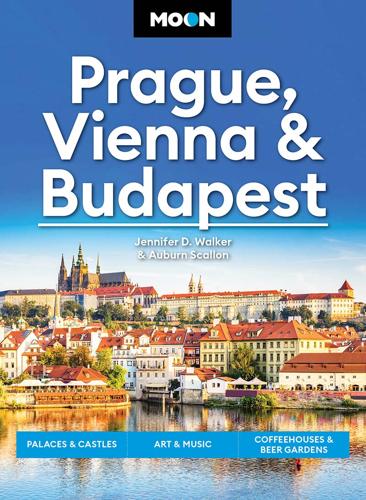
Moon Prague, Vienna & Budapest: Palaces & Castles, Art & Music, Coffeehouses & Beer Gardens
by
Jennifer D Walker
,
Auburn Scallon
and
Moon Travel Guides
Published 15 Oct 2024
Continue along the Hauptallee on the right-hand side until you see the Stadtwanderweg 9 sign, and continue following the Stadtwanderweg 9 signs along the route. CYCLING Vienna is a bike-friendly city with 1,300 km (800 mi) of cycle paths and a bike-sharing program known as Vienna Citybike. Bike-Sharing Citybikes www.citybikewien.at Vienna’s bike-sharing program can be used at over 120 stations around the city. Register online, or just use your credit card (Visa or MasterCard) at any of the Citybike terminals across the city. You pay a onetime fee of €1; then, the charges go up depending on how long you rent the bike.
…
Should you want to visit, the best way is to take the train from Melk to Pöchlarn Bahnhof (trains run three times an hour and take 5-7 minutes; €2.60) and then take the bus 788 to Artstetten Volksschule (Mon.-Fri. 8:37am, 11:37am, 3:37pm, 5:37pm, 25 minutes; €2.60; no buses on weekends) and walk 15 minutes. If you are driving, it takes 20 minutes from Melk and is worth the detour. Bike-Sharing Nextbike www.nextbike.at If you want to cycle down the Danube from Melk to Krems, the Nextbike bike rental station right next to the railway station is the place get a bike. There are also locations in Abt-Karl Straße, Sparkassengasse, and outside the Konditorei Mistlbacher. You will need to download the Nextbike app, register online, or call the hotline (tel. 02/742-229-901).
…
CYCLING For the best cycle-side views, head over to the 27-km (17-mi) bike trail running along the Danube to the picturesque town of Szentendre (click here). Margaret Island is also a good spot to take a bike—cars are banned from most of the island. You can pick up a MOL Bubi bike on the Buda or Pest side and ride to the island. There are numerous paved paths on the island you can use for cycling. Bike-Sharing and Rentals MOL Bubi https://molbubi.bkk.hu Budapest is popular with cyclists. Anywhere in the center, you may notice lime green MOL Bubi bike stations. You can operate the MOL Bubi system by simply using your smartphone. You’ll need to download and register in the MOL Bubi app. At a MOL Bubi station, scan the QR code with the app or enter the six-digit bike number on the back of the bike, which will unlock the bike (you can take it after the beep).

Lonely Planet Ireland
by
Lonely Planet
It should take about 25 minutes to get into the city centre by taxi and should cost around €25, including an initial charge of €3.60 (€4 between 10pm and 8am and on Sundays and bank holidays). Make sure the meter is switched on. DUBLIN BY BIKE One of the most popular ways to get around the city is with the blue bikes of Dublinbikes (www.dublinbikes.ie), a public bicycle-rental scheme with more than 100 stations spread across the city centre. Purchase a €10 smart card (as well as pay a credit-card deposit of €150) or a three-day card online or at any station before 'freeing' a bike for use, which is then free of charge for the first 30 minutes and €0.50 for each half-hour thereafter.
…
There are plenty of spots to lock your bike throughout the city, but be sure to do so thoroughly as bike theft can be a problem – and never leave your bike on the street overnight as even the toughest lock can be broken. Dublin City Cycling (www.cycledublin.ie) is an excellent online resource. Bikes are only allowed on suburban trains (not the DART), either stowed in the guard's van or in a special compartment at the opposite end of the train from the engine. Bike rental has become tougher due to the Dublinbikes scheme. Typical rental for a hybrid or touring bike is around €25 a day or €140 per week. Cycleways ( GOOGLE MAP ; www.cycleways.com; 185-187 Parnell St; h8.30am-6.30pm Mon-Wed & Fri, to 8pm Thu, 9.30am-6pm Sat; gall city centre) An excellent bike shop that rents out hybrids and touring bikes during the summer months (May to September). 2Wheels ( GOOGLE MAP ; www.2wheels.ie; 57 S William St; h10am-6pm Mon, Tue & Sat, to 8pm Wed, Thu & Fri, noon-6pm Sun; gall city centre) New bikes, all the gear you could possibly need and a decent repair service; but be sure to book an appointment as it is generally quite busy.
…
Car The most convenient way to explore Ireland's every nook and cranny. Cars can be hired in every major town and city; drive on the left. Bus An extensive network of public and private buses make them the most cost-effective way to get around; there's service to and from most inhabited areas. Bicycle Dublin operates a bike-share scheme with over 100 stations spread throughout the city. Train A limited (and expensive) network links Dublin to all major urban centres, including Belfast in Northern Ireland. For more information, see Survival Guide and Transport First Time Ireland Checklist AMake sure your passport is valid for at least six months past your arrival date AMake all necessary bookings (accommodation, events and travel) ACheck the airline baggage restrictions AInform your debit-/credit-card company AArrange appropriate travel insurance ACheck if your mobile phone is compatible What to Pack AGood walking shoes, as there's plenty of good walking to do ARaincoat – you will undoubtedly need it AUK/Ireland electrical adapter AFinely honed sense of humour AA hollow leg – all that beer has to go somewhere AIrish-themed Spotify playlist Top Tips for Your Trip AQuality rather than quantity should be your goal: instead of a hair-raising race to see everything, pick a handful of destinations and give yourself time to linger.
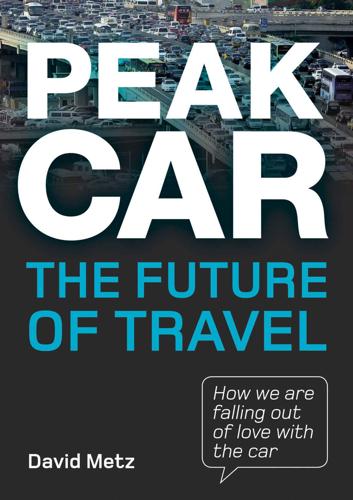
Peak Car: The Future of Travel
by
David Metz
Published 21 Jan 2014
Paying parking charges by mobile phone is common in developed cities and could be used in developing cities, given that nearly everyone who has a car also has a phone. Bicycles are the dominant mode of urban travel when incomes are low, but are subsequently replaced first by motorised two‑wheelers and then by cars. But cycling can be revived, by putting in place cycle lanes and low cost bike hire. Public cycle rental schemes are operating in more than 500 cities in 50 countries. The largest cycle hire scheme in the world is in the city of Hangzhou in south China. Cars will always be popular, but car sharing in its various forms is worth encouraging in preference to individual ownership, given that private cars are parked for 95 per cent of the time and that people who share cars drive substantially less those who own cars.

Lonely Planet Singapore
by
Lonely Planet
Published 14 May 2024
Taxi & Grab Many seasoned drivers retired during the pandemic, and surge-based pricing has been introduced, so taxis in Singapore aren’t quite as cheap as they were before. If you travel outside peak times, and never in a rainstorm, it’s still reasonably affordable to ride. Hailed taxis are metered, or you can lock in a price beforehand via taxi apps CDG Zig or Grab (Singapore’s Uber). Dr David Sing/shutterstock © Bike Sharing A number of bike-sharing companies operate in Singapore. They’re relatively easy to use: download the app, set up an account, scan the bike’s QR code and get pedalling. Most have GPS tracking to locate designated parking areas – failure to park correctly may incur a S$5 fee. Walk Neighbourhoods are best explored on foot.

Subscribed: Why the Subscription Model Will Be Your Company's Future - and What to Do About It
by
Tien Tzuo
and
Gabe Weisert
Published 4 Jun 2018
As Jamie Allison, director of connectivity and mobility for Ford, said at our Subscribed San Francisco conference, his company’s new mandate is to make that “bed to bed” journey as simple as possible, which explains Ford’s investments in Chariot commuter vans as well as the massive expansion of its bike-share program. So much of getting from A to B involves negotiating a mind-numbing series of transactions: fines, tolls, leases, tickets, repairs. What if you had one ID to handle all of those logistics? “We are seeing an evolution toward services rather than physical transactions,” Allison said at our conference.
…
And since it was targeting a young audience, it also put lots of resources into social media monitoring and marketing. SNCF knew from the start that its customer service platforms were going to be Twitter and Facebook. The result was thousands of young people seeing their families and loved ones more often. Trains, bike shares, subways, shuttles, and car services are all locked in horizontal competition, but smart partnerships and platforms will help commuters carry their identity across all these networks seamlessly and intuitively. The winners will be the services that don’t just manage routes, but solve for A to B.

The Great Reset: How the Post-Crash Economy Will Change the Way We Live and Work
by
Richard Florida
Published 22 Apr 2010
Data on commuting patterns here and above are from Kaid Benfield, “Which US Cities Have the Greenest Commuting Habits?” National Resources Defense Council, October 2, 2009, retrieved from http://switchboard.nrdc.org/ blogs/kbenfield/which_us_cities_have_the_green_1.html. 12. “2008 Bike Share Rankings,” The Wash Cycle, September 23, 2009, retrieved from www.thewashcycle.com/2009/09/2008-bike-share-rankings.html. 13. Susan Handy, James F. Sallis, Deanne Weber, Ed Maibach, and Marla Hollander, “Is Support for Traditionally Designed Communities Growing? Evidence from Two National Surveys,” Journal of the American Planning Association 74, no. 2 (2008): 209–221. 14.

The End of the Suburbs: Where the American Dream Is Moving
by
Leigh Gallagher
Published 26 Jun 2013
“They see architecture and culture and all sorts of people every day,” she says. “I feel like they’ll take life a little more in stride because things won’t shock them.” Daily also values the extra time she’s able to spend with them. To get to her job as a hospital administrator, she either walks twenty minutes or uses Boston’s bike share and gets there in half the time. “I’m able to pull off my job and still see my kids and still get to work out most days and do all the things that are important for me because I don’t have a commute,” she says. “It’s about how I want to spend my time.” The day after we spoke on the phone, Daily e-mailed me to say that our conversation had got her “brain spinning about how much I love our lifestyle.”
…
Hsieh wants as many of his employees—and those of the other start-ups—to live in the area as possible, and he knows that having good schools is critical, so his team is working on building an early-childhood school set to open later this year. He’s investing in bringing displays of artwork from the Burning Man festival to the area, and his team is developing bike-sharing and car-sharing programs. “The idea went from, ‘Let’s build a campus’ to ‘Let’s build a city,’” Hsieh says over shots of Fernet, the bitter digestif that has become the team’s signature drink, at his new neighborhood’s Cheers equivalent, the Downtown Cocktail Room. Hsieh has a vision to create his own version of the sidewalk “ballet” Jane Jacobs described, a place where people can live, work, and play without leaving their neighborhood.
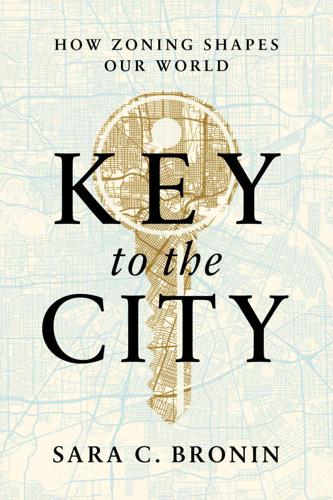
Key to the City: How Zoning Shapes Our World
by
Sara C. Bronin
Published 30 Sep 2024
The full list includes: 1. Walking, cycling, ridesharing, and transit promotion and education. 2. Parking cash-out programs or unbundled parking/market rate pricing. 3. Shared parking arrangements. 4. Enhanced bicycle parking and services (above the minimum required). 5. Support for car-share and bike-share services and facilities. 6. Carpooling or vanpooling programs or benefits. 7. Free or subsidized transit passes, transit-to-work shuttles, or enhanced transit facilities (such as bus shelters). 8. Guaranteed-ride-home programs. 9. Provision for alternative work schedules (i.e., flextime, compressed work week, staggered shifts, telecommuting). 10.
…
accessory dwelling units, 81–83 accessory structures, 44 accessory uses, 56, 113, 186 Ace of Cakes TV show, 29–30 Act 34 (VT), 139–41 “activation elements,” 26 active transportation, 101, 104 adult use, 53–68 amortization of, 67, 179 “childhood exposure” effects of, 78–80 in Detroit, 189 in Hartford, 188 overlay districts for, 188 red-light districts, 10–11, 68 See also nightlife affordability gap, 93 African American communities the African diaspora and, 2, 42 agricultural entrepreneurship and, 114, 116, 195 in Chicago, 39–45, 80, 151, 185 discrimination against, 17, 81, 92 in the diverse makeup of the postwar city, 55 food insecurity among, 195 in Georgetown, 168 Great Migration to the North, 39–40 in Hartford, 4–5, 116 homeownership gap and, 81 in Houston, 79–80 redlining, 92 in the Twin Cities, 81 unemployment among, 41, 185 agricultural use aquaculture, 115 bans against, 111, 114–15, 189 composting, 109, 112–16 food deserts, 110, 114–15 food production in cities, 109–20 “right-to-farm” laws, 118, 120 small-scale artisanal production, 29–38, 100, 116, 120, 170 urban farms, 112–15, 170 Airbnb, 88 airport, Austin’s new, 56, 186–87 Albany Avenue area of Hartford, 2–5, 110, 173 algal blooms, 117 “alley clearance” of the 1910s and 1920s, 168 American Community Survey, 180 Ames, IA, 88 Ames, Walter, 24, 25 amortization of adult uses, 67, 179 Amsterdam, 68 Anaheim, CA, 90–91 antibiotic-resistant bacteria, 117 aquaculture, 115 architecture, 152–65 from ancient Greece and Rome, 6, 172 Art Deco, 155 Beaux Arts architecture, 158 Florida Vernacular, 155 “form-based” zoning and, 152–57 Googie, 161 Gothic, 158 historic, 3, 9–10, 42, 99, 143, 158–62 incongruent or lackluster, 48, 50 intention and, 164–65 modernist, 91 “redemptive,” 46 utilitas, venustas, and firmitas (utility, delight, and firmness), 172 See also Wright, Frank Lloyd Archive House, Chicago, 42–43, 185 area median income, 76, 191, 194 Arizona McDowell Mountains, 128 Phoenix, 129–30, 134 Scottsdale, 129–32, 134, 201, 202 Sonoran Desert, 129, 201 Taliesin West, 128–30 Tucson, 11, 130, 131, 132, 134–35, 202 Art Deco architecture, 155 Article 89 (Boston’s urban farms), 112–15 Art Institute of Chicago, 43 Artists Collective, Hartford, CT, 2 Aspen, CO, 88 asphalt, 1, 2, 4, 98, 107, 129, 137, 141 Association of State Highway and Transportation Officials, 147 asthma, 4, 178 Atlanta, 104 Atlantic City, NJ, 161 Atlantic Crossing, FL, 156–57 Atlantic Plaza mall, Delray Beach, FL, 153 Austin, 54–59, 60, 62, 65, 67, 68, 133, 134 building a new airport in, 56, 186–87 building a new city hall, 133 city council, 187 downtown, 55, 57–59 Downtown Austin Alliance, 59 Driskill Hotel, 55, 57 rezoning in, 186 Sixth Street, 54–59, 80, 187 South by Southwest festival, 55–57, 68 automobiles, 3, 55, 91, 99–100, 107 car dealers, 198 carpooling, 101, 197 dependency on, 25, 183 self-driving autonomous vehicles, 108 the U.S. interstate highway system, 35, 57, 72, 75, 92 vehicle miles traveled, 93, 101 See also parking; streets and roads; suburbs aviation service zones, 186 Avon, a suburb of Hartford, 4–5 Baja California, 129 Baltimore, MD, 29–34, 37, 39, 188 adult nightlife in, 62–68 “Black Friday flood,” 63 “the Block,” 64 Charm City Cakes, 29–34, 183 city council, 37, 63 downtown, 30–31, 63–65 Great Fire of, 63 Inner Harbor, 63–64 Jones Falls, 30, 62–64 minimum parking mandates in, 184 mixed-use districts in, 31–34, 65 Remington neighborhood of, 30–34, 39, 63 rezoning in, 32–33, 184 White flight from, 47 barrier islands, 152, 157 Beaux Arts architecture, 158 “bedroom” communities, 28 bedrooms, number of, 19, 98, 106, 154, 170 beekeeping, 112–13, 115 Bender, Lisa, 81–82 Bermuda grass, 130 Bermuda shutters, 153, 156 Best, Denise, 1–4, 9, 110, 172–73 bicycling “bike score,” 33 bike-sharing services and facilities, 197 parking for, 101, 102–3, 197 road access and, 140, 141–42 Black Americans. See African American communities Black Cinema House, Chicago, 42–43, 185 “Black Friday flood” in Baltimore, 63 “Block, the” of Baltimore, 64 Bloomfield neighborhood of Pittsburgh, 86 Bobby’s Idle Hour, Nashville, 49, 50 Boston, 111–15 Article 89 (governing urban farms), 112–15 Boston Common, 111 exclusionary suburbs outside, 106 “GrowBoston” office, 114 Bowles Park, Hartford, 149–50 Bradley, Owen, 48 Bravo shopping plaza, Hartford, 2 Broadacre City, 126–30 Budweiser, 34 Buffalo, NY, 23, 99–104, 169–70 childhood poverty in, 197 City Hall, 99 downtown, 99–100, 102 “Green Code,” 100–102, 197 Guaranty Building, 99 mixed-use districts in, 102–4 original 1926 zoning code, 99 Builders Association of Metropolitan Pittsburgh v.

The Future Is Asian
by
Parag Khanna
Published 5 Feb 2019
Where cities have become too large and congested, such as Changsha, the government has attempted to motivate people to shift to second-tier cities to distribute the population better.50 Now, instead of just four cities representing nearly half the country’s middle class—as was the case with Beijing, Shanghai, Guangzhou, and Shenzhen in 2002—by 2020, inland China is expected to be home to 40 percent of the country’s middle class. Given the density of Asian cities, last-mile bike sharing and autonomous vehicles are other areas in which Asians are making strategic investments to navigate around the traditional path of universal vehicle ownership and crippling traffic congestion. Bike stations and dockless biking have been pioneered by companies such as Mobike and Ofo, which have spread from China across Asia and into Europe.
…
Baidu’s open-source approach to driverless-car software development, called Apollo, has lured Intel, Daimler, and Ford to contribute resources. Baidu might be on a collision course with Didi Chuxing—or perhaps it will simply buy it. US firms are now copying Chinese innovations. LimeBike in California is copying China’s dockless bike sharing as pioneered by Ofo and MoBike. DiDi has algorithms that predict which ride-sharing users will want a ride at certain times and locations and is designing driverless car interiors for shared augmented-reality experiences—programs that Uber and others will surely copy. Apple is conducting payments through the iMessage chat service, following what Tencent has done.
…
In addition to all the roads, railways, and ports China builds—which will remain in use even if China no longer actively needs them—China has become one of the world’s largest shipbuilders, reducing the cost for developing countries to reach global markets. It also installs electricity grids and fiber-optic Internet and launches satellites that help with everything from fishing-vessel navigation to bike sharing. These investments may facilitate Chinese trade, but that does not change the fact that they are also elevating entire economies into the twenty-first century. When China buys up global lithium supplies to make cheap batteries for electric cars and sells affordable solar panels worldwide, it brings revenue to Chinese companies but also contributes to reducing global greenhouse gas emissions.

Palaces for the People: How Social Infrastructure Can Help Fight Inequality, Polarization, and the Decline of Civic Life
by
Eric Klinenberg
Published 10 Sep 2018
New Orleans had 11 miles of bikeways when Katrina hit; today it has 115. Since the greenway opened, New Orleans has shot into the top American cities for bike commuters. It currently ranks fifth in the per capita population that cycles to work, and it promises to move further up the list once it launches its bike-share program. If political officials need evidence that social infrastructure can entice people out of their cars and into transit options that reduce our carbon footprint and curb global warming, New Orleans is a fine place to look. The Lafitte Greenway is a modest project, with an initial budget of $9 million, but it has already expanded to incorporate new playgrounds, dog runs, community gardens, and athletic fields that branch off the pathway.
…
You’ll Need a Good Community,” Wired, November 2016, https://www.wired.com/2016/10/klinenberg-transforming-communities-to-survive-climate-change/. goal of Living Breakwaters: Ibid. flood protection, adaptation, and climate security: City of New Orleans, Plan for the 21st Century: New Orleans 2030, 2010, https://www.nola.gov/city-planning/master-plan/. its bike-share program: See Shannon Sims, “Building a Social Scene Around a Bike Path,” CityLab, August 1, 2017, https://www.citylab.com/life/2017/08/lafitte-greenway-new-orleans/534735/, and Richard Florida, “Mapping America’s Bike Commuters,” CityLab, May 19, 2017, https://www.citylab.com/transportation/2017/05/mapping-americas-bike-commuters/526923/.

After the Gig: How the Sharing Economy Got Hijacked and How to Win It Back
by
Juliet Schor
,
William Attwood-Charles
and
Mehmet Cansoy
Published 15 Mar 2020
Mark loved all the new services available to him as a consumer. “[If] I need an executive assistant, I’ll go to TaskRabbit and hire someone to do five hours’ worth of work for me. If I need a car, I’ll go to Zipcar. If I need a bike, I use Zagster—rental bikes that are in the building—or Hubway [the municipal bike-sharing service].” Mark bought into the rhetoric about the shift from an “ownership” to an “access” economy. “So people all the time ask me why I don’t get a bike. . . . It’s not about whether I can afford a bike or want a bike. It’s about the fact that I’m able to share fifteen hundred bikes with thousands of other people.
…
This optimistic spin was partly attributable to the fact that participants on both sides of the market were young, highly educated, and relatively privileged.39 Courtney, an Airbnb host who worked at an environmental nonprofit, explained that although money was her motive, “first and foremost . . . I think also just in terms of how it aligns with my values. . . . I get all my books from the library, I value shared resources, I think the bike share programs are awesome. I just love all those kind of sharing, anticonsumerism, not-wasting-resources things.” Like Courtney, many of our interviewees were entranced with the idea of preventing waste and using resources more efficiently, which they saw as the route to less production and environmental impact.

Road to Nowhere: What Silicon Valley Gets Wrong About the Future of Transportation
by
Paris Marx
Published 4 Jul 2022
Given that they want to close themselves off, and certainly cannot imagine taking public transit, they project that desire onto much of the rest of society, under the assumption that few other people living in major cities will walk for a few minutes to reach their destinations. Yet that is simply not a reality of urban life. People who take transit walk to and from the bus or subway stop every single day, while other residents walk to and from the bike-share station. Many drivers have to park and walk some distance to where they are going. And there are also people who, either by choice or circumstance, complete many of their trips by walking alone. Walking is a normal part of living in a city, even for those who primarily rely on automobiles; but tech companies want to replace even this very rudimental form of mobility with app-based services.
…
,” Wired, January 15, 2019, Wired.com. 10 Alison Griswold, “Shared Scooters Don’t Last Long,” Quartz, March 1, 2019, Qz.com. 11 Sam Dean and Jon Schleuss, “Can Bird Build a Better Scooter Before It Runs Out of Cash?,” Los Angeles Times, May 5, 2019, Latimes.com. 12 Mark Sussman, “Five Graphs That Show How Dockless Bike-share and CaBi Work in DC,” Greater Greater Washington (blog), September 5, 2018, Ggwash.org. 13 Joseph Hollingsworth, Brenna Copeland, and Jeremiah X Johnson, “Are E-scooters Polluters? The Environmental Impacts of Shared Dockless Electric Scooters,” Environmental Research Letters 14, 2019. 14 Anne de Bortoli, “Environmental Performance of Shared Micro-mobility and Personal Alternatives Using Integrated Modal LCA,” Transportation Research Part D: Transport and Environment 93, April 2021. 15 Sussman, “Five Graphs That Show How Dockless Bikeshare and CaBi Work in DC.” 16 Julia Carrie Wong, “Delivery Robots: A Revolutionary Step or Sidewalk-clogging Nightmare?

One Less Car: Bicycling and the Politics of Automobility
by
Zack Furness
and
Zachary Mooradian Furness
Published 28 Mar 2010
The potentially practical applications of Schimmelpenninck’s bicycle plan and Constant’s “new Urbanism” paradigm were nonetheless ruthlessly attacked by the situationists, who saw the provo as an ineffectual youth uprising lacking a revolutionary program: “There is a modern revolution, and one of its bases could be the provos—but only without their leaders and ideology. if they want to change the world, they must get rid of these who are content to paint it white.”56 Despite the situationists’ scathing criticism— which they conveniently reserved for everyone except themselves—the provo effectively politicized the bicycle as a symbol of resistance against car culture, situating the White Bicycle plan within a radical critique of capitalism, public space, and environmental pollution. at a pragmatic level, the provo simultaneously pioneered the first public-use bicycle program in amsterdam, a model since replicated in European cities like Copenhagen (Denmark), Milan (italy), Helsinki (Finland), and rennes (France). in the United States, activists and bike enthusiasts similarly embraced the provo philosophy by constructing yellow bikes, pink bikes, checkered bikes, and green bikes out of salvaged materials, leaving them on the streets for anyone to use.57 While these programs have been largely unsuccessful due to bike theft and vandalism, their appearance in cities like portland, Minneapolis–St. paul (Minnesota), Boulder (Colorado), Olympia (Washington), austin (Texas), and princeton (new Jersey) inspired a new generation of cyclists and simultaneously introduced americans to the very idea of public bike-sharing programs that have the potential to become a vibrant part of the urban transportation schema in the United States.58 Ecotactiques and Anti-automobile Shows The provo demonstrated how bicycles could be symbolically and pragmatically incorporated into public protests as well as a sustained critique of car culture. in doing so, it pointed to the bicycle as a utopian mode of transportation, one ideally suited for a more egalitarian and ecologically sustainable society.
…
Our bike giveaway program will be directly servicing the economically disadvantaged classes.”13 in the attempt to create programs that genuinely involve people in the community, volunteers use whatever means at their disposal to make bicycling part of the solution to adults’ everyday transportation needs, as well as the needs of their children. For example, The BikeShare program in Toronto partners with several community centers to have bike-sharing hubs accessible in low-income areas; Bikeagain! provides services for the local immigrant population in nova Scotia; and the Working Bikes Cooperative in Chicago distributes bicycles to people in need and sells low-cost bicycles out of its storefront in the near West Side.14 robert Galdins, of the re-cycles Bicycle Co-op in Ottawa, explains his organization’s sliding scale for services and used bikes/parts: if it seems like someone is low income and can’t afford something, we will either sell it to them at a reduced price or give it to them for free.
…
J., 110 O’Toole, randal, 138, 270n130 Outing, a Journal of Recreation (magazine), 29 Outlaw bicycling subculture, 141; and bike recycling, 154; and Diy ethos, 158; and punk ethos, 142 Overton, Karen, 177, 191 packer, Jeremy, 23, 26 paris, France, automobility in, 59–60 pastorelli, robert, 112 patriot act, 8 payphone, Johnny, 155 peckham, David, 198; and the productive poor, 194 pEDal, 188, 191 pedal revolution, 177 pedals for progress (pfp), 187–188, 199 pedestrians, 39, 269n122; and accidents, 122– 124; versus bicycling, 123–124; and fatalities, 124, 127, 132, 137, 263n61, 268n117, 269n122; rights of, 49; safety of, 128 Pee-wee’s Big Adventure (film), 110 pein, Wayne, 75 peñalosa, Enrique, 211 penry, Josh, 288n2 performative critique, 83–84, 86, 94 perry, David, 63 petersen, Jen, 89, 145, 211 petty, ross, 15, 17, 22 phelan, Jacquie, 184–185, 260–261n36 philippines, 217 philpott, Julia, 191, 284n68 photography and bicycling, 41 photo-Tricycle, 41 pinch, Trevor, 226–227n2 pinder, David, 59, 107 pittsburgh, pennsylvania, 104, 121, 179; Mr. roboto project in, 178, 281n24 pivato, Stefano, 35–36 plan B, 173, 184 pope, Colonel albert, 18, 23, 229n26, 234n93; and mass production, 15 porsche, Ferdinand, 241n22 portland, Oregon, 58, 80, 104, 120, 123, 147, 167–168, 184, 270n130, 283n44; bicycle recycling in, 280n10; bicycle shows in, 279n119; bicycling as daily transportation in, 3 portland radical History Bike Tour, 184, 283n44 poverty: and bicycling, 189, 194, 200–201; and free market capitalism, 198, 200; micro-lending, 199–200; and modernity, 198; and social entrepreneurialism, 199; and tourism, 199 powell, nate, 271–272n25 pratt, Charles, 30 princeton, new Jersey, 58 print capitalism and modern nationalism, 7 provo, 12, 48, 59, 67, 76, 242n39, 243n43, 244n56; principles of, 55; and punk ethos, 143; White Bicycle plan of, 56–58, 78; and White Chicken plan, 243n46 prynn, David, 34 psychogeography, 85 public bike-sharing programs, 58, 244n57 public space, 253–254n64; and automobility, 83, 87, 104, 212–213; and collective right to the city, 212; and collective action, 94, 96; and collective shift to bicycles, 213; and driving, 136; and graffiti, 93–94; reclaiming of, 78–79 pucher, John, 4, 113, 211, 248–249n120 puma, urban cycling campaign of, 160–161 punk movement, 270–271n9; and bike messengers, 152; and Diy culture, 142–143, 147, 149–150; and politics, 144–145, 151; punk music and bicycling, 144–145, 147, 149, 152, 272n26; resistance identity of, 145; and the romanticizing of the van, 147–148.
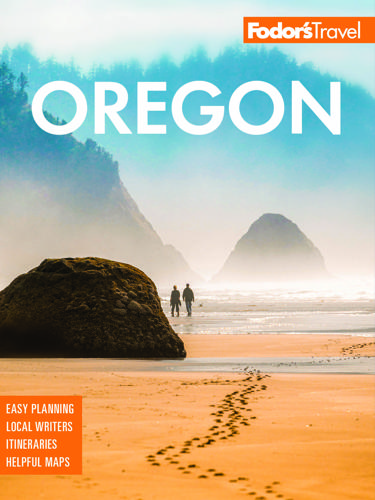
Fodor's Oregon
by
Fodor's Travel Guides
Published 13 Jun 2023
GO BREWERY-HOPPING IN NORTH PORTLAND There are several Portland neighborhoods where you can walk among three to five excellent craft breweries (the Pearl District and Central East Side leap to mind), but the North Mississippi Avenue area has some especially terrific beer venues and is pretty to walk through, too. BIKE THE BRIDGES AND RIVERFRONT Rent bikes or use the city’s bike-share program to venture out on two wheels up and down the riverfront promenades on both sides of the Willamette River, and also to pedal across some of the city’s distinctive bridges, such as the historic Hawthorne Bridge and the Tilikum Crossing Bridge. FEAST AT A FOOD CART POD Portland is home to numerous reasonably priced food cart pods.
…
Tender Loving Empire HOUSEWARES | The retail shop of the eponymous Portland record label founded by Jared and Brianne Mees carries not only music but also cool hand-printed cards, posters, and T-shirts, along with an artistic selection of handcrafted lifestyle goods, from pastel miniature vases and squiggle-shaped earrings to ceramic fox trinkets and illustrated prints. You’ll find additional locations on Hawthorne, in Nob Hill, at Bridgeport Village, and in the airport. E 412 S.W. 10th Ave., West End P 503/548–2925 w tenderlovingempire.com. a Activities BIKING BIKETOWN Portland BIKING | Portland’s bike-share program, in partnership with Lyft, is affordable and easy to use. There are more than 180 stations throughout the city, and some 1,500 bikes, each with a small basket (helmets are not provided, however, so consider bringing your own). Just choose a plan (single rides start at 20 cents per minute), sign up through the website or by downloading the app, find a bike and scan the QR code to unlock it, and you’re off.
…
Biking in Portland a Biking is a cultural phenomenon in Portland—likely the most beloved mode of transportation in the city. Besides the sheer numbers of cyclists you see on roads and pathways, you’ll find well-marked bike lanes and signs reminding motorists to yield to cyclists. There are hundreds of miles of bicycle boulevards, lanes, and off-street paths in Portland, and the city has a popular BIKETOWN Portland bike-share program. Accessible maps, specialized tours, parking capacity (including lockers and sheltered racks Downtown), and bicycle-only traffic signals at confusing intersections make biking in most neighborhoods easy. Cyclists can find the best routes by following green direction-and-distance signs that point the way around town, and the corresponding white dots on the street surface.

Lonely Planet Belgium & Luxembourg
by
Lonely Planet
Route 20 to Diksmuide (€3, 50 minutes) runs five times daily. Trains run to Brussels (€18.40, 1¾ hours), Poperinge (€2.80, eight minutes) and Kortrijk (€5.50, 30 minutes). Bikes can be hired from Hotel Ambrosia (%057 36 63 66; www.ambrosiahotel.be; D’Hondtstraat 54; bike per day €15; h7.30am-7.30pm) or sign up to use the Blue Bike sharing service. Ypres Salient Flanders’ WWI battlefields are famed for red poppies, both real and metaphorical. From 1914 the area suffered four years of senseless fighting during which hundreds of thousands of soldiers and whole towns disappeared into a muddy, bloody quagmire. The fighting was fiercest in the Ypres Salient, a bulge in the Western Front where the world first saw poison-gas attacks and where thousands of diggers valiantly tunnelled underground to dynamite enemy trenches.
…
At Mobiel (%056 24 99 10; www.mobiel.be; Pieter Tacklaan 57; bike rental from €12 per day; h10am-6pm Mon-Sat) you can hire a wide range of wheels – everything from city bikes and electric bikes to rickshaws (with or without driver) – or consider signing up for the Mobit (%09-278 72 56; www.mobit.eu; from €0.45 per 20 min) bike-sharing service. With Blue Bike also in town, you’re spoiled for choice. Oudenaarde POP 31,132 In the 16th and 17th centuries, Oudenaarde (Audenarde in French) was a wealthy rural town famed for its local weavers’ elaborate, detailed tapestries. Today, it’s brightly adorned cyclists that weave through the streets as the Tour of Flanders bike race finishes in the town.
…
Roosendaal–Amsterdam trains (€22.50, two hours) run twice hourly via Rotterdam, Delft, the Hague and Leiden. 8Getting Around Check www.slimnaarantwerpen.be for plenty of ideas, tips and contacts for getting around in Antwerp. BICYCLE Velo-Antwerpen (%03-206 50 30; www.velo-antwerpen.be; Kievitplein 7; day/week membership €4/10; h11am-5pm Mon-Thu, 9am-3pm Fri) is Antwerp’s extensive short-hop bike-share system: sign up online. For longer-term bike hire there’s Cyclant (%03-232 01 09; www.cyclant.com; Pelikaanstraat 3/1050; 4/12/24hr €9/12/15; h10am-6pm Sun, Mon, Wed & Thu, to 7pm Fri & Sat) on the outer west side of Antwerpen-Centraal. To cross the river there’s a lift (St-Jansvliet) down to the pedestrian/bicycle Sint-Annatunnel (map Google map) or, temporarily at least, a free cross-river ferry (Steenplein; h7.15am-6.45pm Mon-Fri, 10.15am-9.45pm Sat & Sun) from Steenplein.

Revolution Française: Emmanuel Macron and the Quest to Reinvent a Nation
by
Sophie Pedder
Published 20 Jun 2018
The former capital of Roman Gaul, in the Rhône valley of south-eastern France, Lyon is a thriving, cosmopolitan regional city that feels broadly at ease with change. Between 2008 and 2015, a period when unemployment rose across the country, the net number of jobs there increased by 5 per cent. The city enjoys fast trains and slow food, and introduced a bike-sharing scheme long before Paris or London. Perched at the sharp point of the confluence of the Rhône and the Saône rivers is a futuristic new plate-glass museum, the Musée des Confluences, designed to represent a ‘crystal cloud of knowledge’. Along the nearby quay, an experimental driverless bus conveys passengers to and fro.
…
Once, the motorist would travel along the routes nationales that passed through such small towns, Michelin guide in hand, stopping perhaps for a plat du jour on the way to somewhere else. Today, these are regions that the TGV, fibre-optics and 4G mobile connection passes by, where people sense that globalization and automation have dealt them a blow. It is a world in which Uber, bike-share schemes, organic cafés and co-working spaces are nowhere to be found, where mobile reception is poor, and the young, and better educated, have left. As jobs and confidence have drained away, so has faith in the mainstream parties. This is where the FN has now taken hold. Few places better capture this sense of abandon, and the political forces that can thrive on it, than Hénin-Beaumont, a red-brick town in the mining basin of northern France.

Why the Dutch Are Different: A Journey Into the Hidden Heart of the Netherlands: From Amsterdam to Zwarte Piet, the Acclaimed Guide to Travel in Holland
by
Ben Coates
Published 23 Sep 2015
The police continued to confiscate white bicycles whenever they found them and the movement eventually fizzled out, but its symbolism endured. Some thirty years later, activists in Oregon who heard about the White Bicycles were inspired to start their own bike-sharing scheme in Portland. Their scheme in turn provided the inspiration for public bike-sharing programmes in major cities around the world. Years later, the Dutch White Bicycles’ descendants could be borrowed from docking stations in London, Paris, Brussels and New York. Money for Nothing As a recent immigrant, to me one of the most striking consequences of the Dutch liberal approach was the generosity of the welfare and employment systems.

The Mini Rough Guide to Vienna (Travel Guide eBook)
by
Rough Guides
Published 1 Jun 2023
Active Pursuits The easiest way to get rid of excess strudel is by going for a walk or run in one of the city’s many parks. The largest of these is the Prater, but there are parks dotted all around the Ringstrasse that give you a chance to stretch your legs. Cycling is an enjoyable way of getting around Vienna – and of escaping traffic snarls. In 2022, WienMobil was launched as a bike sharing rental system with some 3,000 bikes available at over 200 stations around the clock. There is an app that supports the scheme and payment can be made using debit/credit card. Bicycles, mountain bikes and e-bikes can also be rented at a host of other outlets around the city. The Tourist Information Office website (www.wien.info/en/lifestyle-scene/sports/cycling) has comprehensive information about the WienMobil scheme, lists bicycle hire firms, cycling tours, and also provides regional maps of cycling routes.

Lonely Planet Washington, Oregon & the Pacific Northwest
by
Lonely Planet
Bus Cheaper, faster and more frequent than trains; tons of destinations served. Train Great views and comfortable, but infrequent, limited routes and costly. Boat Fun and reasonably priced way to get to and around islands in Washington and BC. Bicycle Seattle, Portland and Vancouver, BC, are all very bike-friendly and have bike-share programs. For much more, see Getting Around What’s New The Pacific Northwest is famously progressive and innovative, even as it makes a point of celebrating traditional cultures, natural resources and old ways of doing things. The region’s cuisine, including food carts, doughnuts, craft beer and delectable wines, has become famous, while its politics remain liberal – at least in urban areas.
…
Erected in 1970, it recalls the time when Deighton arrived here in 1867 and built a pub, triggering a ramshackle development that ultimately became Vancouver. 1Kitsilano & University of British Columbia Arbutus GreenwayPARK (www.vancouver.ca/parks; W 6th Ave & Fir St, Kitsilano; c; g4) A former disused urban rail line that’s being transformed by the city into a cool linear park, this 8.5km-long flora-fringed walking and cycling route is already paved and open to the public. Running south to the Fraser River, it’s a popular and accessible nature-hugging weave where you can expect to spot birdlife, butterflies and lots of wildflowers. There are Mobi public bike share stations en route if you fancy hopping in the saddle. oMuseum of AnthropologyMUSEUM (MOA; %604-822-5087; www.moa.ubc.ca; 6393 NW Marine Dr, UBC; adult/child $18/16; h10am-5pm Fri-Wed, 10am-9pm Thu, closed Mon Oct-May; p; g99B-Line, then 68) Vancouver’s best museum is studded with spectacular indigenous totem poles and breathtaking carvings – but it’s also teeming with artifacts from cultures around the world, from intricate Swedish lace to bright Sri Lankan folk masks.
…
ACyclists can take their bikes for free on SkyTrains, SeaBuses and transit buses, which are all now fitted with bike racks. Cyclists are required by law to wear helmets. AThere are dedicated bike lanes in the city, and locals and visitors alike can use Mobi (%778-655-1800; www.mobibikes.ca), a public bike-share scheme. ADownload free cycle route maps from the TransLink website (www.translink.ca) or plan your route using https://vancouver.bikerouteplanner.com. AIf you’re traveling sans bike, you can also rent wheels from businesses around the city, especially on Denman St near Stanley Park – home of Vancouver’s most popular scenic cycling route.

The Mini Rough Guide to Lisbon (Travel Guide eBook)
by
Rough Guides
Published 5 Apr 2023
Uber also operates in Lisbon and fares are similar to the city cabs. Ferries. The two main ferry stations for the River Tagus’s southern shore are Estação Fluvial Terreiro do Paço for Barreiro, and Cais do Sodré for Cacilhas, Montijo and Seixal. Bikes. Most of Lisbon is very hilly, but the riverfront is flat and good for cycling. Lisbon has a citywide bike-sharing scheme run by Gira (www.gira-bicicletasdelisboa.pt), and there are bike hire outlets at Belém and Doca de Santo Amaro (Armazém 7, 218 250 266; daily 10am–7pm). Expect to pay around €5 an hour. V Visas and entry requirements You need a valid passport for a visit to Portugal. EU citizens don’t need a visa and can stay in the country as long as they like.

Portland Like a Local
by
DK
Cyclists need a front white light and a back red light or reflector when riding at night or in limited visibility. Wearing a helmet isn’t a legal requirement for adults, but the majority of locals wear one whenever they hop on their bike, so follow their lead and stay safe. BikeTown PDX, the city’s bike-sharing scheme, has over 1,500 bright-orange cycles across the city. The bikes cost $1 to unlock (download the app to do this) and then cost 20 cents every minute from then on – so a 30-minute ride, for example, will cost $7 in total. www.biketownpdx.com/homepage By public transportation Portland’s primary public transit system, TriMet, makes getting around easy thanks to a fleet of buses and a light rail system, MAX.
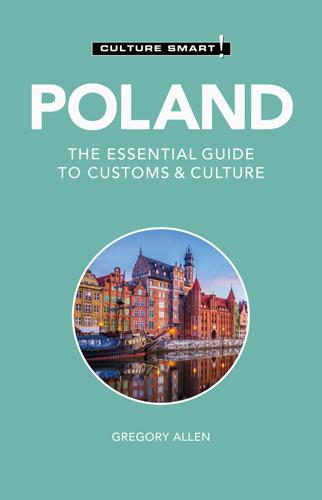
Poland - Culture Smart!
by
Allen, Gregory;Lipska, Magdalena;Culture Smart!;
Published 15 Jun 2023
These services are generally considered safe, but don’t count on your driver speaking English. Many of those apps also offer other means of transportation, such as bikes or scooters, as well as food delivery services. Car sharing is not widespread in Poland, but there are a number of companies operating in the larger cities, the most popular of which is Traficar. Electric scooter and bike sharing is far more popular and these can be found in towns and cities across the country. Every Old Town tourist square has horse-drawn carriages. These are predominantly for tourists, apart from the occasional couple on their wedding day. Horse and carriage in Kraków. WHERE TO STAY Accommodation in Poland comes in all shapes and sizes.

Berlin Like a Local
by
Dk Eyewitness
Don’t skip lights, watch out for cars turning right and be careful on roads with tram tracks, as it’s easy to get your wheels stuck. If you’re out after dark, ensure you have working lights and don’t ride under the influence – having a blood alcohol level above 1.6 (the equivalent of two or three beers) could cost you your driver’s licence. Bike-sharing schemes are a saviour for visitors. Nextbike is the top provider, with tons of docking stations around town. Renting one will set you back €1 per 15 minutes or €10 for the month, and you simply leave it anywhere within the app’s blue zone when you’re done. www.nextbike.de By public transport Berlin’s transport network is a well-oiled machine of 24/7 trains, buses and trams.

Boston Like a Local
by
Dk Eyewitness
On wheels Bostonians love to cycle, whether to work, a coffee date, or just for the fun of it. A recent initiative has led to more bike lanes popping up across the city, making getting around on two wheels easier and safer than ever. After more info? The City of Boston has a handy page on cycling safety and a link to current route maps. Bluebikes, the city’s bike-sharing program, has over 4,000 bikes and 400 docking stations across the city. Buy a pass at the kiosk or download one via the app. A 30-minute trip costs $2.95, with every additional 30 minutes costing an extra $4. There’s also the Adventure Pass, which costs $10 and gives you 24 hours of Bluebike access (though bikes must be redocked every two hours), as well as monthly and annual membership plans.

Barcelona Like a Local: by the People Who Call It Home
by
Dk Eyewitness
Cycling on the pavement when you could be in a bike lane will be met by shouts, and cycling with headphones is illegal – the police are strict about this. It’s also illegal to cycle over the limit (0.5mg of alcohol per litre of blood, which works out as a pint of beer). Finally, always wear a helmet. No excuses. The council’s bike sharing scheme, Bicing, is only available for residents. Good news: Donkey Republic provides bikes that anyone can pick up and drop off around the city using its app. It’s €3.50 for an hour, €5 for two hours or €10 for 24 hours. A lot of locals prefer to nip around the city on mopeds. For those who don’t own their own, sharing schemes from eCooltra and Yego are on hand to rent mopeds by the hour or day.

Copenhagen Like a Local
by
DK
Shop | Bike Shops Liked by the locals “Once you hop on your bicycle, side by side with mothers on cargo bikes carrying kids and the elderly just enjoying their morning ride, you realize that a cycling city is a human-sized city and that public space belongs to everyone.” ERDEM OVACIK, CEO OF BIKE-SHARING SERVICE DONKEY REPUBLIC g Bike Shops g Contents Google Map WECYCLE Map 5; Islands Brygge 21, Islands Brygge; ///laws.restriction.sketch; www.wecycle.dk At WeCycle, two of the city’s greatest loves – cycling and good coffee – come together. The bicycles are custom-made from scrap bike parts, making each one unique.

The Mini Rough Guide to Budapest (Travel Guide eBook)
by
Rough Guides
Published 1 Oct 2023
Sports Bowling: There are bowling alleys at the Mammut shopping centre (www.mammut.hu, www.bowlingclub.hu), as well as at some hotels. Cycling: Budapest has nearly 200km (124 miles) of cycle paths. You can pick up the Budapest for Bikers map at tourist offices (for more information, click here). There’s a public bike-sharing system called MOL BuBi, which costs HUF 120 to sign up and includes three minutes of bicycle usage, after which it costs HUF 40 per minute of use. There are 173 stations where bikes can be rented and returned. You can register with your bank card through the free MOL Bubi app (www.molbubi.hu).

Moon Oregon Trail Road Trip: Historic Sites, Small Towns, and Scenic Landscapes Along the Legendary Westward Route
by
Katrina Emery
and
Moon Travel Guides
Published 27 Jul 2020
Bike Rentals Rent your bike from the friendly and helpful folks at Erik’s Bike Shop Leawood (3701 W. 95th St., 913/428-8430, www.eriksbikeshop.com, 10am-7pm Mon.-Fri., 10am-6pm Sat., noon-5pm Sun., $100-120 per day), about 10 miles (16 km) southwest of the park. It has everything from city bikes to mountain bikes. BCycle (http://kc.bcycle.com, first 30 min. free, $2 per 30 min. thereafter, $7 for 24 hours) is Kansas City’s bike-share system. Pick up or drop off a bike at the more than 50 stations around town. Major stations are located downtown, at River Market, Westport, and the Country Club Plaza. Spectator Sports Kansas City ranks as one of the best in the Midwest for spectator sports, and fans are passionate—the football stadium is in the Guinness Book of World Records as the loudest in the world!
…
Topeka has regular bus services run by Topeka Metro (785/783-7000, www.topekametro.org, $2 one-way, $4 24-hour pass, exact change required); find a map online or at the downtown Quincy Street Station (820 SE Quincy St.). Topeka is also known as one of the most bike-friendly communities in the country, and visitors will find a network of paths throughout the city, many away from traffic. The best way to hop on two wheels is through the city’s bike-share program, Topeka Metro Bikes (785/730-8615, http://topekametrobikes.org, $2.50 per hour). Downtown is walkable and has a few nearby attractions: Old Prairie Town is 1.7 miles (2.7 km) northeast, while the Brown v. Board of Education site is about 1 mile (1.6 km) south, and the Evel Knievel museum another 0.7 mile (1.1 km) past that.
…
A 38-acre garden and arboretum offers great views of the lake—it’s especially beautiful during the Tulip Time event that takes place in various spots around town in the spring, or later in June when the roses are in bloom. A 7-mile (11.3-km) paved walking-biking path encircles the lake, offering great views and a few steep grades up and down. It’s easy to join at any point around the lake, and you’ll find plenty of water fountains and rest stops along the way. Biking Topeka’s bike-share system, Topeka Metro Bikes (http://topekametrobikes.org, 785/730-8615, $2.50 per hour), has 300 bikes dispersed at 17 stations in key areas around town, including Gage Park, Lake Shawnee, along the Shunga Trail, and downtown. The program is a popular recent addition to the cityscape, with the blue bikes becoming a beloved way to get around for locals and visitors.
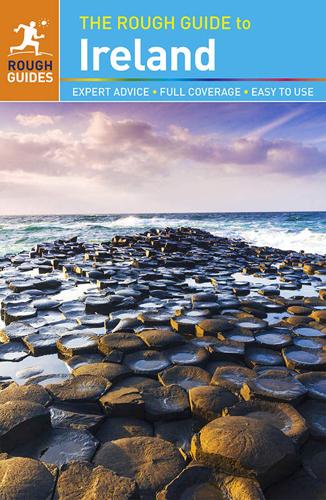
The Rough Guide to Ireland
by
Clements, Paul
Published 2 Jun 2015
Parking As for car parks, a good southside option is the Royal College of Surgeons multi-storey off the west side of St Stephen’s Green (open 24hr, €4/hr or €10 overnight). On-street spaces are hard to find, but Merrion Square and Fitzwilliam Square are usually good bets. BY BIKE Following the likes of Paris and Vienna, Dublin introduced its own city-wide bike rental scheme, Dublinbikes ( www.dublinbikes.ie), in 2009. A three-day ticket costs €5 (credit/debit card required) and can be purchased from fourteen of the city’s fifty bike stations, of which the most central are at St Stephen’s Green East and West, Merrion Square West, Dame St, High St, the Custom House, Jervis St and Parnell Square North.

San Francisco Like a Local
by
DK Eyewitness
Published 4 Oct 2021
Meet at the store at 7pm to join the 2.5-mile (4-km) jog to Bay and Hyde streets, where you wait for the next car. » Don’t leave without running back to the shop afterward (assuming you’re still alive) for the post-race raffle. Outdoors | Alfresco Fitness Part workout, part social, the Midnight Mystery Ride is the ultimate secret club for keen cyclists. The ride wheels into the night on the third Saturday of every month. First, bag a bike through the Bay Wheels bike-sharing scheme (or book one via the Lyft ride-sharing app) then join the Facebook group, where the starting location is revealed on the day of the ride. Then, follow the leader on a mystery tour through SF’s streets, with a few pit stops for beers on the way. g Alfresco Fitness g Contents Google Map Zumba in the Park Map 5; 198 John F.

Pocket Berlin
by
Andrea Schulte-Peevers
Published 15 Mar 2023
A Trams (designated M1, M2 etc) run 24/7. Bicycle A Bicycles may be taken aboard designated U-Bahn and S-Bahn carriages (look for the bicycle symbol) as well as night bus lines N1 to N9 (Sunday to Thursday only), trams and ferries. A You need a separate Fahrradticket (€2.10, day ticket €5). A The main app-based bike-sharing services are Donkey Republic, Tier, Bolt and Nextbike. Tickets & Passes A One ticket is valid for all forms of public transport. A The network comprises fare zones A, B and C, with tickets available for zones AB, BC or ABC. A AB tickets, valid for two hours, cover most city trips (interruptions and transfers allowed, but round trips are not).

Paris Like a Local
by
Dk Eyewitness
Add to that many traffic-restricted backstreets and a network of bike lanes, and the city is a cyclist’s dream. This is the only time we’ll advise you not to do as the locals do: never ride on the pavement (yep, you’ll see Parisians do it) and wear a helmet. The 24-hour pioneering Vélib’ scheme set the standard for bike-sharing projects around the world. There are myriad docking stations around the city, with one- or seven-day passes available online. The green bikes (normal) are free to ride for the first 30 minutes, increasing by €1 for every additional half-hour up to €4, while the teal versions (electric) start at €1.

Mexico - Culture Smart!
by
Maddicks, Russell;Culture Smart!;
Published 15 Nov 2023
Taxis are another cheap way to get around, and hail-a-ride platforms like Uber and DiDi offer low-fare rides compared to Mexico City’s official pink and white cab fleet. To avoid problems, always take official cabs, preferably from a taxi rank, known as a sitio, or call a reliable taxi service and ask to be picked up. A greener alternative for those who prefer to travel under their own pedal power, Mexico City has a tap-and-ride bike-share system called Ecobici that in 2023 had 687 docking stations and 9,300 bikes available. For an effortless glide, e-scooters from global firms like Lime and Movo are another alternative for exploring central areas of Mexico City. WHERE TO STAY Visitors can find almost every kind of accommodation in Mexico, from boho-chic boltholes for Hollywood A-listers in San José del Cabo, to hammocks strung up in a fisherman’s shack for backpackers on a budget.

City on the Verge
by
Mark Pendergrast
Published 5 May 2017
In 2010, Rebecca Serna launched “Atlanta Streets Alive,” securing permission to temporarily block off two miles along Auburn and Edgewood Avenues, so that people could walk, bike, dance, and socialize where cars usually ruled. The program was a hit, and the renamed Atlanta Bicycle Coalition continued to sponsor such road parties in different neighborhoods, even blocking off Peachtree Street for one festival featuring music and a bicycle parade. Georgia Tech students started a bike-sharing program in 2012, inspiring the city to plan a similar effort to begin in 2016, though Atlanta was far behind Boston, Chattanooga, Portland, Washington, DC, and other cities. Serna noted that biking on city streets was good not only for riders’ health but for business. Cyclists could more easily stop to shop with the money they were saving on gas, maintenance, and parking.
…
B., 71–72, 74–75 Duckworth, Derrick, 204–205 Dunham-Jones, Ellen, 269 Duluth, 246 Dunwoody, 244 Durham, Janice, 109–110 Durley, Gerald, 55 Dusenbury, George, 162 EarthCraft certification, 144, 260 East Beltline neighborhoods, 173–187 East Lake neighborhood, 29, 36, 195 Eastside Trail, 10–11 building of, 127–128 cost, 128, 280 development around, 174–175 East Beltline neighborhoods, 173–187 educational tours, 146, 175 funding of, 279 growing pains, 158–160, 159 (photo) health benefits, 153 housing near, 129–130, 268 Lantern Parade, 287–288, 287 (photo) lighting, 285 linking to Westside, 285 success of, 156 Edelson, Debra, 223 Edgens, Sarah, 22–24 Eggers, Betsy, 254–257 Eisenhauer, Bill, 90 Elsas, Jacob, 75 Emerald Corridor LLC/Foundation, 144, 223 Emory University, 25, 194 The End of the Suburbs: Where the American Dream is Moving (Gallagher), 269 energy efficiency, 144–146 English, James, 34, 67 English Avenue neighborhood, 80, 86, 114, 163, 205, 214, 218, 270–272, 275, 294 Enota Park, 7 Environmental Protection Agency, 28 Eplan, Leon, 239 Eriksen, Michael, 152 E-SPLOST, 249 Estep, Jessica, 155 Evicted: Poverty and Profit in the American City (Desmond), 206–207 Felton, Rebecca Latimer, 70 Five Points, 72–73 Flocks, Sally, 139, 227–228 flooding issues, 90, 144, 230 Florida, Richard, 270 Focused Community Strategies (FCS), 192–197 Fonda, Jane, 28 food bank, 108, 152, 169 food deserts, 7, 150–152, 271 foreclosures, 96, 98, 101, 130, 161, 204, 248 Forest Park, 250 Forrest, Nathan Bedford, 66 Fort McPherson, 65, 163, 270 Forward Atlanta advertising campaign, 40–41 Fowler, Marianne, 16 Frank, Leo, 75–76 Franklin, Shirley, 27–29, 45 Atlanta BeltLine Partnership, 55, 278 Bellwood Quarry purchase, 85–87 BeltLine funding, 54, 59–60, 91 GDOT MMPT project, 102–103 homelessness issues, 108, 111 Kasim Reed and, 124 March 2004 meeting, 47–48 moratorium on large home building, 99 Purpose Built Communities, 195 water system, 143 Wayne Mason and, 53, 57, 94 Freedmen’s Bureau, 65 Freedom Park Trail, 17, 184 Friedberg, Andy, 206 Friends of English Avenue, 271, 294 Friends of the Belt Line, 28–29, 49, 52, 55, 91, 278 Fulton Bag and Cotton Mill, 34, 75, 187 Fulton County Commission, 54, 59–60, 62 Fulton County Department of Family and Child Services, 215 Fulton County Jail, 87, 108, 117 funding Alycen Whiddon and, 26–27, 29, 47 Atlanta Streetcar, 166–167 Boston Consulting Group (BCG) plan, 92 Eastside Trail, 279 Empowerment Zone, 191 E-SPLOST, 249 MARTA, 44, 281, 283, 285 private/philantropic donations, 49, 51–52, 56, 89, 158, 160–161, 279, 285 Shirley Franklin and, 54, 59–60, 91 in Strategic Implementation Plan, 158 streetcars, 132–133, 158, 280–281, 285 TAD (see tax allocation district) TIGER grants, 125, 157, 160, 280 T-SPLOST, 132–134, 233, 281–283 Westside Trail, 157, 160–161, 280 Funtown, 11 Fuqua Corporation, 160 Gaither, Pierre, 201 Gallagher, Leigh, 269 Gammon Theological Seminary, 67, 74 Garbett, Matt, 207, 268 Garvin, Alexander, 47–53, 87 Bellwood Quarry and, 49, 51, 283 The BeltLine Emerald Necklace: Atlanta’s New Public Realm, 49, 85, 89, 226 future of Atlanta, 267 Paul Morris and, 156 Wayne Mason and, 53 Gates-Boston, LaTonya, 203, 221–222 Gateway Center, 108, 112–113, 116 gentrification beneficiaries of, 272 displacement by, 21, 61, 88, 92, 129 Grant Park, 194 myth of, 189 Old Fourth Ward, 177 South Atlanta, 196 Georgia Department of Transportation (GDOT), 24, 238 ABI agreement with, 123 attempt to commandeer Eastside Trail corridor, 279 fly-over lanes, 245 Interstate 495 plans, 183 MMPT project, 101–103 pedestrians and, 139–140 Road Fight, 183 Georgia Dome, 83, 163 Georgia Electric Light Company, 37 Georgia Power Company, 37, 106, 135, 146, 232 Georgia Railroad, 32, 34–35, 254 Georgia Railway & Electric Company, 37 Georgia Regional Transportation Authority (GRTA), 24, 26, 45, 95, 123 Georgia STAND-UP (Georgia Strategic Alliance for New Directions and Unified Policies), 61, 253, 272 Georgia State University, 162–163, 197, 270–271 Georgia Tech Atlanta Neighborhood Quality of Life and Health Project, 150, 151 (fig.) BeltLine feasibility study, 51, 59 bike-sharing program, 141 Brian Leary and, 121–122 Ryan Gravel and, 13–14, 49, 121–122 Technology Square development, 239 Georgia Works!, 112, 113 (photo), 294 Georgians for Community Redevelopment, 93 Gervin, Rachel, 288 Gilbert, Jane, 221 Gilded Age, 66–71 Giornelli, Greg, 29, 45, 53–54, 57, 59 Glenn, Luther, 32 Glenwood Castle (old Atlanta Stockade), 194 Glenwood Park neighborhood, 4, 25, 160 Global Village Project school, 255 Glover, Dwight, 225–226, 284 Glover, Renee, 162 Goat Farm, 227–228, 265 Goatsville, 254 Godshalk, David, 75 Gone with the Wind (Mitchell), 78, 106 Good Hair (film), 234 Gordon, John, 294 Gordon, Lisa, 135, 155 Grady, Henry, 33–34, 67–69 Grady Homes, 192 Grady Hospital, 113, 148, 252 Grant, Lemuel, 35, 192 Grant Park neighborhood, 5, 35, 48, 76, 81, 126, 192–195 grassroots support, 22–26, 278–279 Gravel, Karen, 22, 29, 186 Gravel, Ryan, 4 (photo) Atlanta City Design Project, 277–278 on bickering, 164 Friends of the Belt Line, 28–29, 49, 91 on future of BeltLine, 283 Garvin and, 49 Inman Park and, 186–187 master’s thesis, 13–15, 18–22, 19 (fig.)
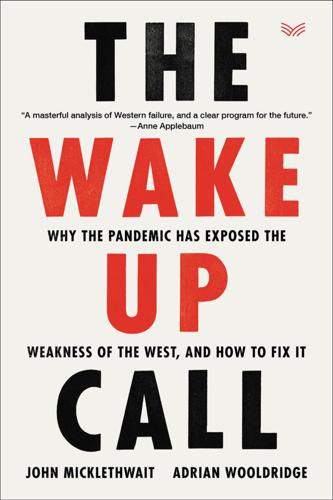
The Wake-Up Call: Why the Pandemic Has Exposed the Weakness of the West, and How to Fix It
by
John Micklethwait
and
Adrian Wooldridge
Published 1 Sep 2020
Cities are better at government in part because they are closer to their people than national politicians are; they also tend to be much less partisan. When he was mayor of London, Ken Livingstone, a left-wing Labor Party figure, embraced the “entirely capitalist” scheme of road pricing while his Tory successor, Boris Johnson, embraced the “entirely communist scheme” of bike sharing. One of the more striking things about America is that it has gotten worse at using the federal system to learn. As “laboratories of democracy,” the states used to be America’s way of renewing itself. Welfare reform and charter schools both began in Minnesota and then spread across the country.
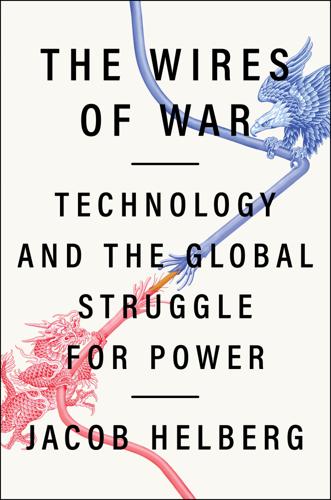
The Wires of War: Technology and the Global Struggle for Power
by
Jacob Helberg
Published 11 Oct 2021
By the time the Berlin Wall fell, the East German Stasi had amassed so many files on its citizens—documents, photos, recordings—that its archives would have extended nearly seventy miles.24 But even the Stasi couldn’t have dreamed of the surveillance power of the Chinese state. Thanks to a proliferation of “online to offline” services—such as ride-hailing, bike-sharing, and food delivery—and the widespread adoption of mobile payment technology, Chinese companies have access to a trove of data that is both mind-bogglingly vast and incredibly detailed. In China, beggars display QR codes for Alipay and WeChat donations. One Chinese bike-share company alone sends 20 terabytes of data to the cloud each day.25 Whereas U.S. tech companies possess a great deal of data on our online habits—such as our searches and “likes”—China’s tech giants know what you like to buy at the grocery store and where you get your hair done.

Northern California Travel Guide
by
Lonely Planet
BART The fastest link between downtown and the Mission District also offers transit to SF airport (SFO; $8.95), Oakland ($3.45) and Berkeley ($4). Four of the system's five lines pass through SF before terminating at Daly City or SFO. Within SF, one-way fares start at $1.95. Bicycle Contact the San Francisco Bicycle Coalition for maps, information and legal matters regarding bicyclists. Bike sharing is new in SF: racks for Bay Area Bike Share (%855-480-2453; www.bayareabikeshare.com; 30-day membership $30) are located east of Van Ness Ave, and in the SoMa area; however, bikes come without helmets, and biking downtown without proper protection can be particularly dangerous. Bicycles can be taken on BART, but not aboard crowded trains, and never in the first car, nor in the first three cars during weekday rush hours; folded bikes are allowed in all cars at all times.
…
Maps & Online Resources Local bike shops can supply you with more cycling-route ideas, maps and advice. ACalifornia Association of Bicycling Organizations (www.cabobike.org) Offers free bicycle touring and freeway-access information. ACalifornia Bicycle Coalition (www.calbike.org) Links to free online cycling maps, bike-sharing programs and community bike shops. AAdventure Cycling Association (www.adventurecycling.org) Sells long-distance cycling route guides and touring maps, including the Pacific Coast Hwy (PCH). ALeague of American Bicyclists (www.bikeleague.org) Find bicycle specialty shops, local cycling clubs, group rides and other special events.
…
Davis, San Francisco, San Luis Obispo, Santa Barbara and Santa Cruz are among California’s most bike-friendly communities, as rated by the League of American Bicyclists (www.bikeleague.org). A couple of helpful resources: Adventure Cycling Association (www.adventurecycling.org) Online resource for purchasing bicycle-friendly maps and long-distance route guides. California Bicycle Coalition (http://calbike.org) Links to cycling route maps, events, safety tips, laws, bike-sharing programs and community nonprofit bicycle shops. Road Rules ACycling is allowed on all roads – and some freeways where there’s no suitable alternative; mandatory exits are clearly marked. ASome cities, including San Francisco, Oakland and Sacramento, have designated bicycle lanes, but urban biking is not for the fainthearted.

Lonely Planet Barcelona
by
Isabella Noble
and
Regis St Louis
Published 15 Nov 2022
Cable Car Telefèric del Port (map; www.telefericodebarcelona.com; Passeig de Joan de Borbó; 1 way/return €11/16.50; h10.30am-8pm Jun-early Sep, shorter hours early Sep-May; gV15, V19, mBarceloneta) Runs between the waterfront southwest of Barceloneta and Montjuïc. Telefèric de Montjuïc. Bicycle An extensive, ever-growing network of bike lanes has been laid out across Barcelona Numerous companies hire bicycles and run cycling tours. Barcelona’s main bike-share scheme Bicing (www.bicing.barcelona) is, for now, geared towards residents rather than tourists. Cruising Barcelona Fat Tire Tours Pedal Bike Rental Terra Bike Tours Car & Motorcycle With the convenience of public transport, the pleasure of exploring on foot and the high price of parking, it’s unwise to drive in Barcelona.
…
ASupport hospitality-training programs for those struggling to access the job market (including undocumented migrants) at Espai Mescladís (%93 319 87 32; www.facebook.com/mescladis; Carrer dels Carders 35; dishes €3-8; h10am-8.30pm; v) S, a lovely El Born cafe run by not-for-profit organisation Mescladís. Leave a Light Footprint AWhile Barcelona’s bike-share scheme Bicing isn’t currently aimed at tourists, there are plenty of local bike-rental operators. ATap into the city’s excellent public transport system. Behind the Scenes SEND US YOUR FEEDBACK We love to hear from travellers – your comments keep us on our toes and help make our books better.

Intertwingled: Information Changes Everything
by
Peter Morville
Published 14 May 2014
Is it safe to ride a bike? I needed to answer that question. It took hours of searching, reading, and thinking to reach a conclusion. First, I had to figure out the politics. Cyclists and environmental groups have made “bike to work” into a movement. Cities around the country are building bike lanes and bike share systems. This is an exciting step towards a healthier society, but the interests of the individual and the community aren’t always aligned. And the commitments to cycling that people and politicians have made has created a powerful, cultural bias. The media repeats “cycling is safe” like a mantra, but is this the truth, or is it the result of cultural self-justification and the manufacture of consent?
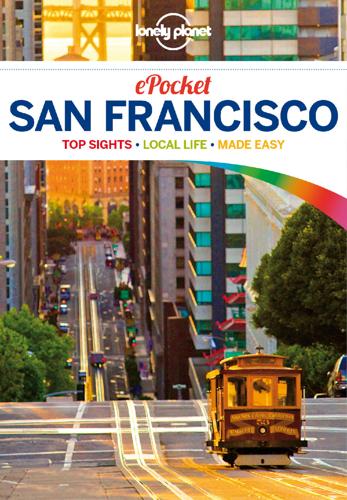
Lonely Planet Pocket San Francisco
by
Lonely Planet
and
Alison Bing
Published 31 Aug 2012
From the parking area and bus stop, a pedestrian pathway leads past the toll plaza to the eastern sidewalk ( 5am-6pm daily) . Near the toll plaza is a cross-section of suspension cable, with the tensile strength to support thousands of cars and buses daily. If you’d rather not walk back, Golden Gate Transit buses head back to SF from Marin. Bikes share the eastern sidewalk, but must yield to pedestrians. Fort Point Completed in 1861 with 126 cannons, Fort Point (www.nps.gov/fopo; Marine Dr; admission free; 10am-5pm Fri-Sun; Lincoln Blvd) stood guard against certain invasion by Confederate soldiers during the Civil War…or not. Despite its guns, this fort saw no action – at least until Alfred Hitchcock shot scenes from Vertigo here, with stunning views of the Golden Gate Bridge from below.
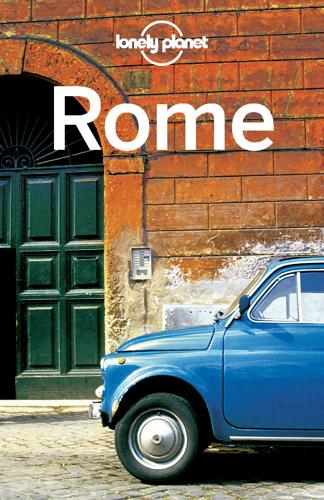
Rome
by
Lonely Planet
➡ On Saturdays, Sundays and weekdays after 8pm, you can take your bike on the metro and the Lido di Ostia train. You have to use the front carriage and buy a separate ticket for the bike. ➡ On Sundays and holidays you can carry bikes on bus 791. ➡ On regional trains marked with a bike icon on the timetable, you can carry a bike on payment of a €3.50 supplement. ➡ Rome has a bike-sharing scheme. You can sign up at the ATAC ticket offices at Termini, Spagna and Lepanto metro stations. There’s a €5 signing on fee and a €5 minimum charge. On signing up you’re provided with a rechargeable smartcard that allows you to pick up a bike from one of the 27 stations across the city, and use it for up to 24 hours within a single day.
…
Archaeologia Card €23/12 7 days Entrance to the Colosseum, Palatino, Terme di Caracalla, Museo Nazionale Romano (Palazzo Altemps, Palazzo Massimo alle Terme, Terme di Diocleziano, Crypta Balbi), Mausoleo di Cecilia Metella and Villa dei Quintili. Roma Pass (www.romapass.it) €27 3 days Includes free admission to two museums or sites (you choose from a list of 38) as well as reduced entry to extra sites, unlimited public transport within Rome, access to the bike-sharing scheme, and reduced-price entry to other exhibitions and events. Roma & Più pass includes some of the surrounding province. Note that EU citizens aged between 18 and 25 generally qualify for a discount at most galleries and museums, while those under 18 and over 65 often get in free. In both cases you’ll need proof of your age, ideally a passport or ID card.

The Rough Guide to New York City
by
Rough Guides
Published 21 May 2018
By bike Cycling is becoming a viable form of transport around New York, most enjoyable if you stick to the city’s two hundred miles of bike lanes (nycbikemaps.com) as well as the cycle paths along the waterfront and in parks. Wear all possible safety equipment including pads and a helmet (required by law). When you park, double-chain and lock your bike (including wheels) to an immovable object if you’d like it to be there when you return. In 2013 New York started a bike share scheme dubbed Citi Bike (citibikenyc.com), with thousands of bikes and hundreds of stations all over the city. There are three payment options: 24-Hour Pass ($12; unlimited 30min rides), 3-Day Pass ($24; unlimited 30min rides) or annual membership ($163; unlimited 45min rides). Pay at any Citi Bike station kiosk with a credit card; you’ll be given a code that will unlock a bike so you can begin your trip – end at another station and relock the bike.
…
Three sources do an excellent job of providing specific cycling routes and maps, laws and regulations, and other relevant info: the bike-advocacy organization Transportation Alternatives (212 629 8080, transalt.org), which has some good maps; the New York City Department of City Planning (nyc.gov), which has a wealth of information available as part of their BND (Bicycle Network Development) project; and nycbikemaps.com, with extensive bike maps for all five boroughs, information on cycling events and links to other relevant sites. A popular bike share programme, instituted by former mayor Mike Bloomberg, has made bike transport much more accessible for New Yorkers and visitors. By law, you must wear a helmet when riding your bike on the street. Most bike stores rent bicycles by the day or hour. Refer to websites such as bike.nyc and bikenyc.org.
…
Bloomberg presided over some difficult times, facing criticism for each event – one of the largest snowstorms in city history just after Christmas 2010; some unpopular (and, eventually, failed) appointments to high positions in the Department of Education; the protest movement known as Occupy Wall Street, which began in Zuccotti Park in late 2011 and brought attention to the economic disparity between finance titans and the working class; and, in October 2012, Hurricane Sandy. The last of these shook the city like nothing since 9/11, disrupting subway lines, washing away shoreline houses and creating the need for heavy rebuilding in neighbourhoods from the Financial District (namely around South Street Seaport) to Far Rockaway. Meanwhile, a citywide bike-sharing plan – which almost immediately became the nation’s largest such enterprise, with more than 40,000 members signed up within a month – was established; the long-debated Second Avenue subway line picked up speed in its construction; and the fight over Bloomberg’s soda ban (an attempt to eradicate the sale of sugary drinks over sixteen ounces, overturned by the Manhattan Supreme Court) raged on.

The Purpose Economy: How Your Desire for Impact, Personal Growth and Community Is Changing the World
by
Aaron Hurst
Published 31 Aug 2013
The market for lifestyle of health and sustainability (LOHAS) has doubled to $600 billion in five years, covering products and services focused on health and fitness, the environment, personal development, sustainable living, and social justice. The peer-to-peer or sharing market is now estimated at $26 billion.9 This new market includes everything from sharing bikes to cars to housing. More than 500 cities across 49 countries now have bike sharing programs with a combined fleet of over 500,000 bicycles.10 And new online markets like Etsy and Zaarly have just started to scratch the surface of maker and local markets. In 2013, Etsy surpassed $1 billion in sales, and farmers’ markets now make up the fastest growing part of our food sector, doubling in the last decade.11 Sustainability is a major market in the new economy.

Demystifying Smart Cities
by
Anders Lisdorf
Mobility Even though more opportunities for jobs, food, and entertainment are available in a city, they are rarely in close proximity to residential areas. This means that people depend on the city’s offering of mobility services. Similarly, more people means more goods move into and out of the city. These are many and varied and currently the focus of a lot of innovation and new offerings. We see carpooling services, bike sharing, autonomous vehicles, scooters, and so on. Today there are multiple different ways for getting from point A to point B. Mobility seems to be one of the most blooming areas of city tech innovation, but there are still two primary areas that form the basis:Public transit – Regardless of the innovations we have considered, in many major cities, public transit is still a key form of mobility.
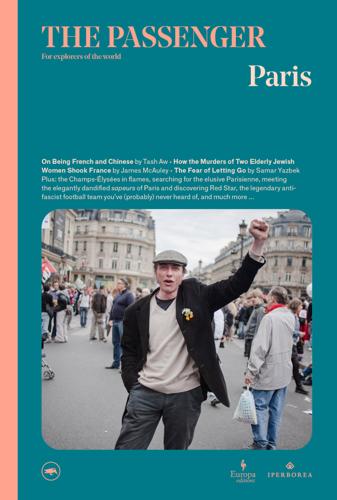
The Passenger: Paris
by
AA.VV.
Published 26 Jun 2021
This can only be achieved by a radical change of approach plus a series of funding allocations to build new cycle routes (in addition to the existing thousand-kilometre network) and incentives for businesses to encourage their staff to cycle to work. For a city of more than two million inhabitants this might seem to be utopian thinking, but Paris has always shown itself ready to embrace such challenges. In 2007 it was one of the first in Europe to inaugurate a bike-sharing system – Vélib’ – which was an instant success and today accounts for 37 per cent of bike journeys, although other services are also very popular, including scooters. In contrast to other major cities, a Métro season ticket is not such a necessity in Paris. Why shut yourself up in the belly of the city if you can enjoy what is on its surface?

Lonely Planet Malta & Gozo
by
Lonely Planet
The Tul il-Kosta (Coast Rd) linking Salini to Pembroke along Malta’s northern coast is the island’s only dual carriageway and is targeted by speed cameras. Try not to speed. TIP Some accommodation providers offer car rental and will drop off and collect cars for a small fee. Also convenient is to pick up cars at the Park East complex near airport arrivals. TALLINJA BIKE Operated by Malta Public Transport, Tallinja Bike is an e-bike-sharing scheme operating across Malta and Gozo. There are 11 pick-up, dropoff docking stations on Malta and three on Gozo. It’s a good way to explore Valletta’s coastal ramparts, but unfortunately there’s only one docking station in Paceville and there are none around Sliema. Do also note that riding bikes or e-scooters along the pedestrians-only promenade from Sliema to Spinola Bay is not permitted.

Insight Guides South America (Travel Guide eBook)
by
Insight Guides
Published 15 Dec 2022
Sport and Activities Many summer and winter sports played in the Northern Hemisphere are also played in Argentina. Team sports include soccer, basketball, handball, and volleyball. The Andes, Patagonia and estancias are excellent destinations for horseback riding. Biking is possible in most of the country, and tours are available. Cycling paths are being extended in the capital and the city bike sharing system is getting more popular. The Lake District and Atlantic beaches offer water sports, including surfing, kite-surfing and windsurfing. Hiking and mountain climbing are best in the Andes along almost the entire western border of the country. Winter sports include downhill, snowboarding, and (rarer) cross-country skiing.
…
Speeding fines can be high (several hundred dollars). In Rio de Janeiro and Sâo Paulo Rio and Sâo Paulo both have good subway services. Lines radiate from the city centers and are extended by bus links. Maps in the station mean you can find your way without needing Portuguese. Both cities (and a rising number of others across the country) have a bike share system run by Mobilicidade (www.mobilicidade.com.br). A–Z Accommodations Tourist offices can provide visitors with comprehensive lists of hotels in all price ranges. There is no shortage of excellent hotels and decent hostels in Brazil. The larger cities and resort areas, especially, have hotels run to international standards, with multilingual staff.

Curbing Traffic: The Human Case for Fewer Cars in Our Lives
by
Chris Bruntlett
and
Melissa Bruntlett
Published 28 Jun 2021
Adjust her situation to part-time or off-hours shift work, and it becomes impossible; leaving her with no choice but to purchase a car and manage that financial burden. When investments in public transport are made to improve the system, including MaaS (Mobility as a Service) based models like carand bike-sharing, they are often located largely in city centers. While these can be viewed as a net positive, they are focused on places that need them the least. “The whole public transport system is based on the needs of higher educated groups, concentrated to the centers, and to locations where they need to go,” Bastiaanssen says.
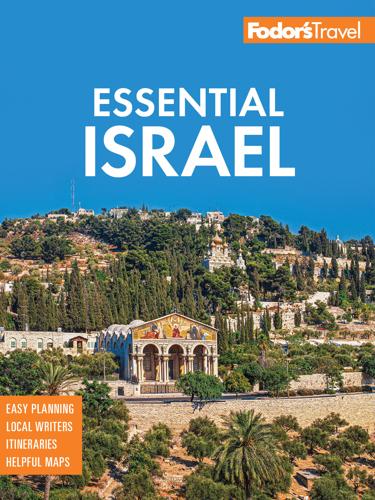
Fodor's Essential Israel
by
Fodor's Travel Guides
Published 2 Aug 2023
High-end restaurants mingle with old-school eateries where elderly men hold noisy court about the issues of the day over black coffee and apple turnovers. Sometimes described as an urban village, Tel Aviv is made for walking (or biking, now that it has an extensive network of more than 100 km [62 miles] of bike paths and a bike-share system). From most parts of the city, the sea is never more than a 20-minute walk. In this combination beach town, business center, and arts mecca, people spend Friday afternoon bumping into friends, wandering from café to café, and pausing to hear live jazz trios, all the while strolling with their dogs down boulevards lined with 1940s-era newspaper kiosks that have been transformed into gourmet sandwich stands.
…
With more than a million negatives documenting Israel’s history, this nostalgic shop sells historical photographs, books, postcards, posters, and gifts, many of which are only found here. E 5 Tchernichovsky St., Center City P 03/517–7916 wwww.thephotohouse.co.il C Closed Sat. a Activities BIKING Tel-O-Fun BIKING | Tel Aviv runs this convenient bike-sharing system—pick up a bike at one station and return it there or at any other station around the city. The fees are calculated by the minute and are more expensive over the weekend. An accessible and easy-to-use app makes this a convenient way to explore the city. The bikes are quite heavy and are useful for getting from point to point throughout the city or for riding along the seafront promenade.
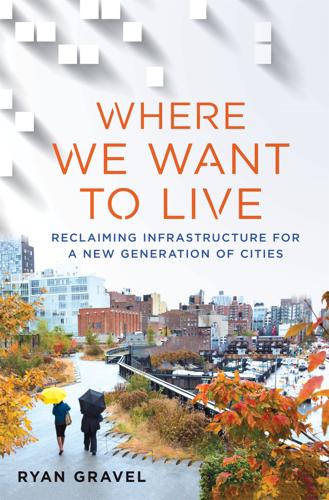
Where We Want to Live
by
Ryan Gravel
Published 2 Feb 2016
And the iconic Métro, with its warren of tunnels and trains crowded with college students, suits, and tourists, performs almost effortlessly the demanding task of transporting 4.5 million people a day. Back above ground, several other modes of transportation support the network, including buses, trams, taxis, water taxis, and one of the world’s first and most expansive bike-share programs. The signature element of this transportation network, however, is found at the beginning and end of every trip. Whether along one of Haussmann’s straight, broad boulevards or one of the remaining narrow medieval lanes like Rue Traversière where I lived my year abroad, the sidewalks of Paris are not relegated to a subordinate, utilitarian role as they are in many cities.
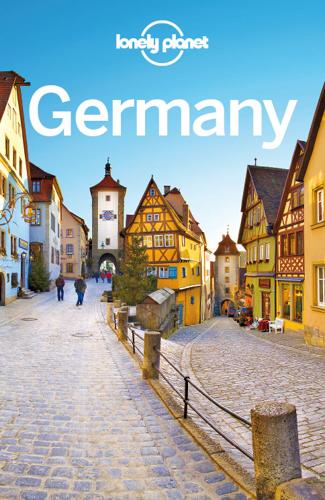
Germany Travel Guide
by
Lonely Planet
A minimum deposit of €30 (more for fancier bikes) and/or ID are required. Some outfits also offer repair service or bicycle-storage facilities. Hotels, especially in resort areas, sometimes keep a stable of bicycles for their guests, often at no charge. Call a Bike (07000 522 5522; www.callabike.de) is an automated bike-rental scheme offered by Deutsche Bahn (www.bahn.com). It requires that you preregister with a credit card, either online for free or by phone for €5. Once you’ve located a bicycle, call the number listed on the lock and follow the instructions. The cost is €0.08 per minute or €15 per day. In Stuttgart and Hamburg, use is free for the first 30 minutes.

The Complacent Class: The Self-Defeating Quest for the American Dream
by
Tyler Cowen
Published 27 Feb 2017
The Department of Transportation has written, “All indicators show declines in personal travel for every age group, particularly among young people since the early 2000s. It is too soon to tell whether this decline is temporary or indicative of a long-term trend.”28 Of course, these measures don’t entirely reflect negative trends. To the extent that people are commuting less because they’ve moved back into cities, or using the subway less because bike sharing and bike lanes have made that form of travel more efficient and safer, that’s great. And if video chat and Skype have meant that we have to travel less for business meetings, or to keep in touch with family and friends, there’s certainly some good there too. Still, the overall picture on transportation does not suggest a dynamic economy.

Exponential Organizations: Why New Organizations Are Ten Times Better, Faster, and Cheaper Than Yours (And What to Do About It)
by
Salim Ismail
and
Yuri van Geest
Published 17 Oct 2014
By comparison, scarcity of supply or resources tends to keep costs high and stimulates ownership over access. Today, a trend known as Collaborative Consumption leverages the Internet and social networks to create a more efficient utilization of physical assets. The following shows just some of the vertical markets affected by the phenomenon of moving from “possess” to “access”: bartering, bike sharing, boat sharing, carpooling, ride sharing, car sharing, collaborative workspace, co-housing, co-working, crowdfunding, garden sharing, fractional ownership, peer-to-peer renting, product service systtem, seed swaps, taxi shares, time banks, virtual currency (Source: Wikipedia). Note that in traditional industries that can be fully information-enabled, new competition has produced a staggering drop in revenues for old companies.

Bike Boom: The Unexpected Resurgence of Cycling
by
Carlton Reid
Published 14 Jun 2017
Provo became most famous for their “White Bicycle Plan,” a proposal to close central Amsterdam to motorized traffic and create a free bicycle-sharing scheme, using bicycles that had been (poorly) painted white. “The asphalt terror of the motorized bourgeoisie has lasted long enough,” mused a Provo poster promoting the coming of the White Bicycles (the idea of which would later go on to inspire city bike-share schemes around the world). Every day, human sacrifice is made to the newest authority that the bourgeoisie are at the mercy of: the Auto-Authority. The smothering carbon monoxide is their incense…. Provo’s Bicycles Plan presents liberation from the car-monster…. The White Bicycle can be used by whomever needs it.
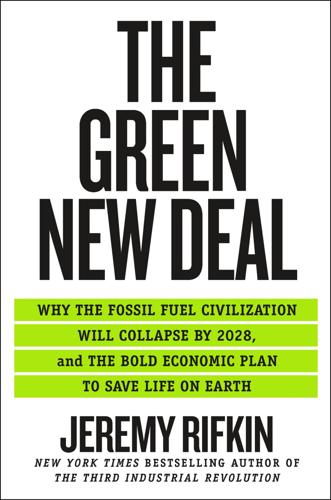
The Green New Deal: Why the Fossil Fuel Civilization Will Collapse by 2028, and the Bold Economic Plan to Save Life on Earth
by
Jeremy Rifkin
Published 9 Sep 2019
Ford is partnering with lighthouse cities, working alongside city planners and civic organizations to develop new ways to move people and goods beyond the private car. The goal is to work with a full range of transportation partners to develop seamless mobility services that can partner Ford’s autonomous self-driving electric vehicles with public transportation, bike-sharing and scooter-sharing services, and pedestrian walkways to ferry passengers and goods effortlessly, passing them off between the various modes of transportation to final destinations, with the objective of reducing congestion and carbon emissions.8 I joined Mark Fields, then CEO of Ford, in January 2017 on the opening day of the North American Auto Show in Detroit to introduce the new business model.
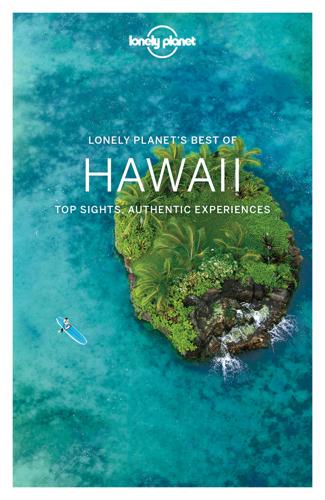
Lonely Planet Best of Hawaii
by
Lonely Planet
Speedi Shuttle (%877-242-5777, 808-329-5433; www.speedishuttle.com; airport transfer Kailua Kona shared/private $32/124, Mauna Lani $59/186; h9am-last flight) is economical if you’re in a group. Book in advance, and beware, they’ve been known to run on island time. 8Getting Around At the time of research, a bike share ($3.50 per half hour) program was just getting off the ground. Kiosks are located at Hale Halawai Park, Huggo’s On the Rock’s and Courtyard King Kamehameha’s Kona Beach Hotel. The kiosks accept credit cards. Bike Works (%808-326-2453; www.bikeworkskona.com; 74-5583 Luhia St, Hale Hana Center; bicycle rental per day $40-60; h9am-6pm Mon-Sat, 10am-4pm Sun) rents high-quality mountain and road-touring bikes.
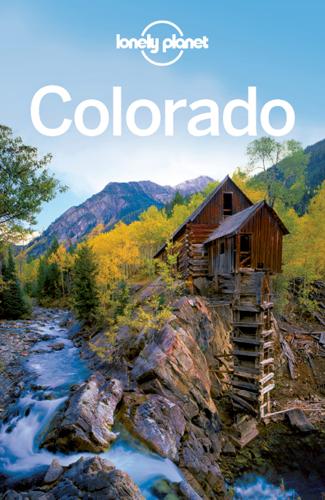
Colorado
by
Lonely Planet
Summer sees many ski resorts wave goodbye to the snow set and say hello to the two-wheelers. To get you oriented: »Central Mountains This whole region is home to one of the state’s best network of bike paths. Everything you could want is here: road, tracks and gravel. »Denver A bike-lover’s city, complete with bike-share program, bike-friendly public transportation and plenty of paths. »Boulder Possibly more bike-crazed than Denver; paths and bike lanes lead to virtually everywhere in town and beyond. »Fort Collins A bike museum is spread across the whole town; jumping on a fixie is the way to get around here. »Around Grand Junction The mix of flat roads and wineries is a tempting combination; some of the USA’s best single-track trails are near Fruita. »Telluride Single-track routes and amazing scenery?
…
It’s a straight shot up 14th St to Civic Center Park, where you can pose by Bronco Buster and climb to the 13th stair of the Colorado State Capitol – exactly one mile above sea level. Activities There’s a lot of talk about how the people of Denver are, on average, the slimmest in the USA, and it’s easy to understand why. The city is checkered with lovely parks and green spaces; it has smooth bike lanes and an increasingly popular community bike-share program; and the siren call of the rugged Front Range is ever-present. Plus, the sun is always shining here. City elders and wags at the Chamber of Commerce are wont to brag about the 300 annual days of sunshine with which Denver is blessed, and the residents seem determined to soak up every minute of it.

Bosnia and Herzegovina
by
Tim. Clancy
Published 15 Mar 2022
If you decide to get on the saddle, however, take care on all roads throughout the region, as they are usually rather narrow with little or no hard shoulders and drivers are known for their fast and risky driving. Road biking is not popular in BiH and therefore there is not much of a bike culture, though that is slowly changing with the addition of bike lanes to several streets in Sarajevo and a bike-sharing service that covers most of Sarajevo’s city centre (Click here). Certain areas of the country, however, are made for cycling. One can travel for hours on end without experiencing much traffic at all in Popovo Polje from Stolac towards Trebinje or opt for the new 160km Ćiro Cycling Route (see box, Click here) that follows along an old Austro-Hungarian railway track between BiH and Croatia.
…
However, there are long trails along the Miljacka River starting from the Grbavica area, and a new bike lane has been built on the city’s main thoroughfare, though currently it does not extend all the way to the old town. For 20KM a year, you can hire a bike for up to 30 minutes a day through Nextbike (w nextbike.ba), a bike sharing system with hubs in several central locations including at BBI and Alta shopping centres. Every additional hour is 1.50KM. Wherever you go, I highly recommend wearing a helmet and to think safety when riding in Sarajevo. BY BUS The local bus system is rundown, but is the best in the country. Run by GRAS, it may, in fact, be the most efficiently operated state-owned enterprise and will get you to even the most isolated villages on Bjelašnica.

What Would Google Do?
by
Jeff Jarvis
Published 15 Feb 2009
I can get similar rates from traditional rental companies but with less flexibility and convenience. Zipcar says each of its cars replaces 15 privately owned cars and that 40 percent of its members decide to give up owning a car. Similarly, Paris’ mayor announced in 2008 that the city would follow its successful bike-sharing program by making 4,000 electric cars available to residents to pick up and drop off at 700 locations. The goal is to get Parisians to buy fewer cars. I know what you’re thinking (and can hear the peals of laughter all the way from Detroit): The last thing a car company should want is fewer cars.

The Sharing Economy: The End of Employment and the Rise of Crowd-Based Capitalism
by
Arun Sundararajan
Published 12 May 2016
If you can connect the people who have the assets to people who are willing to pay to rent them, you reduce waste and end up with a more efficient system.19 Internet-enabled marketplaces are one kind of “community” through which the connection Surowecki refers to can be made. But, of course, there are other kinds. In keeping the scope and arguments of the book focused, I have left out a wide variety of sharing activities that are also gaining popularity: among them, food cooperatives, car-sharing cooperatives, time banks, bike-sharing initiatives, co-housing, and co-working. I don’t mean to suggest through this omission that these activities aren’t important or desirable. However, they don’t fall as naturally under my umbrella of crowd-based capitalism. But let’s return now to the examples I have discussed in this chapter.

The New Urban Crisis: How Our Cities Are Increasing Inequality, Deepening Segregation, and Failing the Middle Class?and What We Can Do About It
by
Richard Florida
Published 9 May 2016
The city’s high-tech sector, which had been nearly wiped out when the dot-com bubble burst in 2001, was booming again, and to cement its future, the Bloomberg administration had announced a $2 billion initiative to build a two-million-square-foot applied science and engineering campus on Roosevelt Island for Cornell University and Israel’s Technion. The city’s streets were cleaner than they’d ever been and teeming with activity. Violent crime was way down, and tourists were pouring in at record rates. Manhattan was even flush with bicycles, thanks in part to its new bike lanes and bike-sharing infrastructure. New York City was winning the worldwide competition for both capital and talent—the key to the city’s success, as Bloomberg had put it himself in an op-ed in The Financial Times. “A city that wants to attract creators must offer a fertile breeding ground for new ideas and innovations,” he’d written.

Here Comes Everybody: The Power of Organizing Without Organizations
by
Clay Shirky
Published 28 Feb 2008
The easiest way to get to these newsgroups is through groups.google.com, which provides a Web-based interface to the groups. Page 282: civic bicycle programs Interestingly, many accounts of the failure of the original White Bicycle program include an unsubstantiated accusation that the bicycles were confiscated or thrown in the canals by the police. These stories create the sense that uncontrolled bike-sharing would have succeeded but for this intervention by the authorities; such stories, however, are hard to make sense of in light of the collapse of uncontrolled programs in subsequent eras. You can get some sense of the universality of the problem of theft by looking at antitheft instructions at contemporary community bike Web sites like ibike (www.ibike.org/encouragement/freebike-issues.htm#TRACKING. ).

Peers Inc: How People and Platforms Are Inventing the Collaborative Economy and Reinventing Capitalism
by
Robin Chase
Published 14 May 2015
There are peer-driven black-car services; peer-owned and -driven taxis; one-way urban cars (rather like taxis you drive yourself); round-trip cars available by the hour or even by the minute; peer-to-peer car rentals; apps that facilitate the sharing of taxis and long-distance trip sharing; shared shuttles to work; municipal, hotel, and university bike sharing; and peer-to-peer bike rentals. Each one of these reduces the need to own your own car and encourages you to think about the cost of each trip and choose the mode that best matches your needs. Between 2001 and 2009, millennials (those between the ages of nineteen and thirty-four) reduced the miles they traveled by car each year by 23 percent.24 The new transportation services have helped make this happen.
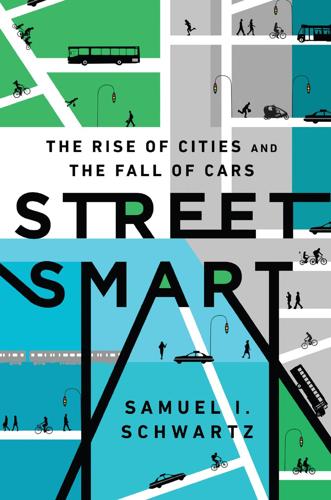
Street Smart: The Rise of Cities and the Fall of Cars
by
Samuel I. Schwartz
Published 17 Aug 2015
When it came time for college, Morgan chose Columbia University in New York City, which was, in terms of the built environment, about as distant from the DC suburbs as Mars. And she adored it. Today she is an engineer and planner working in my company’s Los Angeles office in bike-lane design and bike-share planning for cities. She does so on a computer running very sophisticated programs rather than using a chunk of chalk on a strip of asphalt, but it’s not hard to see the line connecting one with the other. At Sam Schwartz Engineering, a relatively high proportion of employees are Millennials like Morgan.

The Lost Decade: 2010–2020, and What Lies Ahead for Britain
by
Polly Toynbee
and
David Walker
Published 3 Mar 2020
Then, in another turnaround, charity was hailed for setting up food banks. On Your Bike If some aspects of behaviour changed, on others we hunkered down, refusing to shift. Out of our cars, for example. In 2010 total UK bike sales amounted to £1.49 billion; they fell to £1.28 billion by 2016. But bike sharing expanded in some places; in Manchester, too many ended up in the canal. The number of people working in the bicycle trade in the UK dropped from 15,000 to a low of just over 12,400 over the same period. Among them was Andy Brooke, whom we first met in 2014, just after he opened his shop on busy London Road, near Derby railway station.
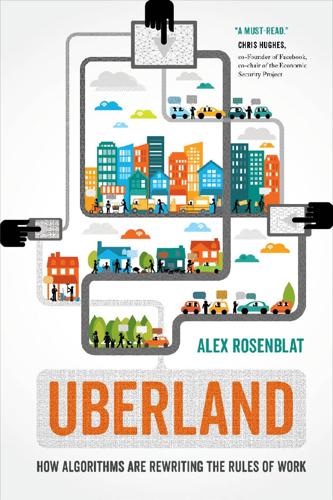
Uberland: How Algorithms Are Rewriting the Rules of Work
by
Alex Rosenblat
Published 22 Oct 2018
The sharing-economy language has long been both expansive and imprecise, recasting service industry and white-collar jobs alike in the amorphous terms of digital culture and the New Economy. The sharing economy has also made for odd bedfellows: hopeful, left-leaning advocates of cooperative housing and bike-sharing found themselves allying with industry tech positivists (those who believe that technology will inevitably lead to continual social progress). As sharing technology has taken on a more significant role in society, other civil society actors have chosen to become stakeholders in Uber’s future developments.
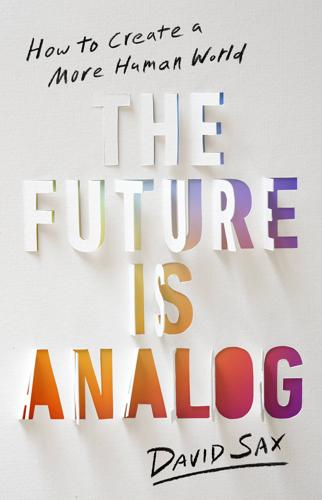
The Future Is Analog: How to Create a More Human World
by
David Sax
Published 15 Jan 2022
In New York City a decade ago, an imaginative and bold transportation commissioner named Janette Sadik-Khan used inexpensive outdoor furniture, large planters, and colored road paint to insert “tactical urban interventions” in areas like Herald Square and Times Square, reclaiming corners and triangles of pavement at first for walkers and outdoor diners and ultimately whole intersections and blocks for pedestrians. New York City created hundreds of miles of bike lanes in just a few years, stretching from Midtown Manhattan’s heart as far as Jamaica Bay, in Queens. Bike-sharing systems, first pioneered in the 1960s in Amsterdam, now used smartphones to track and charge users, but they still relied on two wheels, and a whole lot of paint and concrete barriers, to make them appealing to riders. After decades of car-centric foot-dragging, Toronto finally began expanding its small network of bike lanes more aggressively in recent years.
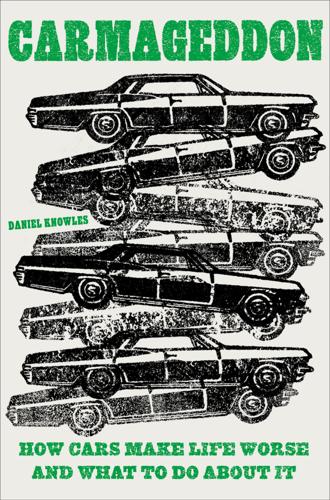
Carmageddon: How Cars Make Life Worse and What to Do About It
by
Daniel Knowles
Published 27 Mar 2023
Courtney Cobbs, a cycling activist in Chicago, told me that she moved to the city from her hometown in Arkansas in 2011 precisely because she did not want to have to drive everywhere. “It wasn’t as busy as New York, it’s not as expensive as New York. So I was like, Chicago. Perfect.” Working as a social worker, she kept a car initially. But as soon as she was able to get a job that didn’t require her to drive, she gave it up. Then in 2014, Chicago introduced its bike-sharing scheme, Divvy. And Courtney quickly realized that biking could work as a means of transport. “It started with, ‘oh, I missed the bus. So I’m gonna, you know, bike to my destination,’ ” she says. Then the biking started to become her first choice for getting around. The trouble is, biking in Chicago was—and often remains—pretty miserable.

Eastern USA
by
Lonely Planet
Gay cycling enthusiasts should check the website of Fast & Fabulous (www.fastnfab.org), a gay cycling club that organizes long weekend rides. For bike rentals, try Central Park’s Loeb Boathouse or locate a rental shop on the comprehensive website Bike New York (www.bikenewyork.org). The Bloomberg administration is planning its own large-scale bike-sharing program throughout the city. Water Sports This is an island, after all, and as such there are plenty of opportunities for boating and kayaking. The Downtown Boathouse (www.downtownboathouse.org; Pier 40, near Houston St; 9am-6pm Sat & Sun May 15-Oct 15) offers free 20-minute kayaking (including equipment) in the protected embayment of the Hudson River.
…
Taxi Taxis are plentiful; expect to pay between $10 and $25 between two points within the city limits. Flag taxis on the street, find them at major hotels or call Metro Cab ( 617-242-8000) or Independent ( 617-426-8700). GRAB A BIKE In the summer of 2011 Boston launched Hubway (www.thehubway.com), a new bike sharing program with 600 bicycles stationed at 60 kiosks throughout the city. The program is expected to grow tenfold in the next couple of years. The good: it’s cheap and convenient – $5 unlocks a bike for you to use all day; you can pick it up at one kiosk and drop it back at another. The bad: roads are narrow, bike lanes few and Boston traffic aggressive.
…
Thompson Boat Center BOAT RENTAL ( 202-333-9543; www.thompsonboatcenter.com; cnr Virginia Ave & Rock Creek Pkwy NW; 8am-5pm) At the Potomac River end of Rock Creek Park, it rents canoes (per hour $12), kayaks (per hour single/double $10/17) and bikes (per hour/day $7/28). Big Wheel Bikes BICYCLE RENTAL ( 202-337-0254; www.bigwheelbikes.com; 1034 33rd St NW; per hr/day $7/35; 11am-7pm Tue-Fri, 10am-6pm Sat & Sun) A good bike-rental outfitter. Capitol Bikeshare BICYCLE RENTAL ( 877-430-2453; www.capitolbikeshare.com) Modeled on bike-sharing schemes in Europe, Capitol Bikeshare has a network of 1000-plus bicycles scattered at 100-odd stations around DC. To check out a bike, select the membership (24 hours is $5, five days is $15), insert credit card, and off you go. The first 30 minutes are free; after that, rates rise exponentially ($1.50/3/6 per extra 30/60/90 minutes).

Lonely Planet Brazil
by
Lonely Planet
In Rocinha and some other favelas (slums, informal communities), moto-taxis (basically a lift on the back of a motorcycle) are a handy way to get around, with short rides (usually from the bottom of the favela to the top or vice versa) costing R$3. That said, given the currently unstable security situation, it’s unwise to head into a favela on a moto-taxi. TRAVELING GREEN Rio has many kilometers of bike paths along the beach, around Lagoa and along Parque do Flamengo. The city’s public bike-sharing scheme, Bike Rio (www.bikeitau.com.br/bikerio), features bright-orange bikes found at over 250 stations. After registering on the website or the app (Bike Itaú), you can buy a monthly pass (R$10) or a day pass (R$5). Instructions are available in English at the stations and the bikes are released via mobile phone or app.
…
Weekends on the Minhocão (an elevated highway officially called Via Elevado Presidente João Goulart) and Av Paulista also offer great cycling opportunities, as does Parque Ibirapuera. Itaú-sponsored Bike Sampa (%11 4003-6055; www.bikeitau.com.br/bikesampa; 1st hour free, per following hour R$5), the city’s bike-sharing scheme, has a fleet of 2600 bicycles spread over 260 stations. CET (Companhia de Engenharia de Tráfego), the city’s traffic management company, offers an updated city map of bike infrastructure at www.cetsp.com.br/consultas/bicicleta/mapa-de-infraestrutura-cicloviaria.aspx. São Paulo Turismo also maintains a very informative bicycle infrastructure website at www.cidadedesaopaulo.com/spdebike/index-desktop, in Portuguese only.
…
BUSES FROM FORTALEZA DESTINATION COST FROM (R$) DURATION (HR) COMPANY Belém 170 24 Guanabara (www.expressoguanabara.com.br) Itapemirim (www.itapemirim.com.br) Natal 98 9 Viação Nordeste (www.viacaonordeste.com.br) Parnaíba 75 9 Guanabara Piripiri 54 8 Guanabara Recife 100 14 Guanabara Rio de Janeiro 565 48 Itapemirim São Luís 160 19 Guanabara Teresina 60 11 Guanabara Ubajara 46 7 Guanabara BICYCLE Bicicletar (%85 4003-9594; www.bicicletar.com.br; Av Beira Mar, Mucuripe) Fortaleza’s city bike-share scheme is free for the first hour (for 90 minutes on Sundays). After that, it’s R$5 per hour. There are stations throughout the city including convenient locations on Av Beira Mar in Meireles (www.bicicletar.com.br; Av Beira Mar) and Mucuripe (%85 4003-9594; www.bicicletar.com.br; Av Beira Mar, Mucuripe), Rui Barbosa (www.bicicletar.com.br; Rui Barbosa 1680, Praia da Iracema) close to Iracema and at Dragão do Mar (www.bicicletar.com.br; Dragão do Mar).
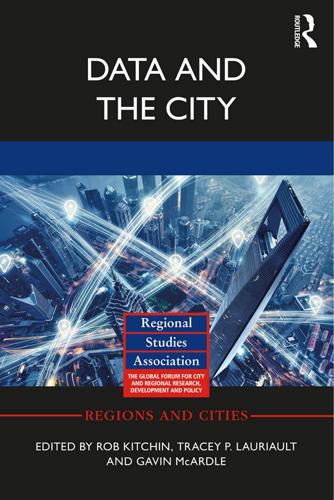
Data and the City
by
Rob Kitchin,Tracey P. Lauriault,Gavin McArdle
Published 2 Aug 2017
Similarly, access to data within public–private partnerships and semistate agencies, or state agencies operating as trading funds (such as the Met Office and Ordnance Survey in the UK who generate significant operating costs by selling data and services), can be restricted or costly to purchase. Consequently, key framework datasets (e.g. detailed maps) can have limited access and data concerning transportation (e.g. bus, rail, bike share schemes, private tolls), energy and water be entirely black-boxed. Even within the public sector, data can be siloed within particular departments and not be shared with other units within the organization, or be open for other institutions or the public to use. As such, whilst there might be a data revolution underway, access to much of that data is limited, and there are a number of issues that need to be explored with respect to data ownership and data control, especially with respect to procurement and the outsourcing or privatization of city services.

Frenemies: The Epic Disruption of the Ad Business
by
Ken Auletta
Published 4 Jun 2018
When Fearless Girl won three Grand Prix awards on the first day of the 2017 Cannes Lions Festival, jury president Wendy Clark announced that the SHE fund was up 374 percent since Fearless Girl struck her pose on a Wall Street sidewalk.* Another compelling example of a fresh form of advertising and marketing is Citi Bike, New York City’s bike-sharing program. Launched in May 2013 by Citibank for zero tax dollars and at a cost to the bank of $41 million, by the summer of 2017 it had ten thousand bikes in use in fifty-five city neighborhoods. As Andrew Essex observes in his 2017 book, The End of Advertising, Citibank, by choosing not to spend this sum on TV commercials or “squandering that eight-figure investment on useless pollution, built something additive that actually reduces our carbon footprint.”

Fodor's Seoul
by
Fodor's Travel Guides
Published 29 Nov 2022
The station is also accessible via Line 2 or you can take the scenic route, and work your way to the neighborhood-center from Hapjeong Station or Sangsu Station on Line 6. There are dozens of buses to take you from one landmark to the next, but everything is very walkable. Alternatively, there is a high concentration of stations to rent a Seoul Bike (Seoul’s bike-sharing system) for ₩1,000 per day. PLANNING YOUR TIME Hongdae can look quite different depending on what day and time of the week you choose to go. Visit on the weekend to join the crowds for nighttime revelry, or choose an afternoon during the middle of the week if you’re more interested in cultural sights.

Making It in America: The Almost Impossible Quest to Manufacture in the U.S.A. (And How It Got That Way)
by
Rachel Slade
Published 9 Jan 2024
“And I really like this sweatshirt.” TWU stood for Transport Workers Union of America, which represented more than 150,000 airline, railroad, transit, and utility workers. Like all unions in the 2020s, TWU was expanding with the new economy, adding museum curators, health department employees, and bike-share workers to its membership. Gary himself was an impressive guy. He’d come up through the air force, then worked as an aircraft mechanic at American Airlines. He held a master’s degree in dispute resolution. Gary asked Ben, “Can you do 5,000?” Ben tried to contain his cool while doing quick math in his head—5,000 hoodies could make or break them that year.

Italy
by
Damien Simonis
Published 31 Jul 2010
While sulphur dioxide levels have been reduced in recent years, primarily by substituting natural gas for coal, much of the smog and poor air quality can be attributed to the fact that Italy has one of the highest per-capita levels of car ownership in the world. In an attempt to tackle this car-dependency, municipal authorities have introduced a series of initiatives. In January 2008, Milan introduced Italy’s first congestion charge, while several cities including Milan and Rome have initiated bike-sharing schemes. On a national level, in 2009 the Italian government committed itself to building four nuclear power plants in an attempt to reduce dependence on oil and gas and reduce greenhouse gas emissions. * * * The official parks website (www.parks.it) offers comprehensive information on Italy’s national and regional parks, marine reserves and designated wetlands, as well as details of local wildlife and educational initiatives
…
Archaeologia Card (€23.5, valid seven days) For entrance to the Colosseum, Palatine, Terme di Caracalla, Palazzo Altemps, Palazzo Massimo alle Terme, Terme di Diocleziano, Crypta Balbi, Mausoleo di Cecilia Metella and Villa Quintili. Roma Pass (www.romapass.it, €23, valid three days) Includes free admission to two museums or sites (choose from a list of 38) as well as reduced entry to extra sites, unlimited public transport within Rome, access to the bike-sharing scheme and reduced price entry to other exhibitions and events. If you use this for more-expensive sights such as the Capitoline Museums and the Colosseum you’ll save a considerable amount of money. You can buy the cards at any of the monuments or museums listed (or online at www.pierreci.it) and the Roma Pass is also available at Comune di Roma tourist information points.
…
If you’d prefer to cycle, be careful – Romans are not used to seeing bicycles on the roads. It’s worth bearing in mind that traffic is lighter on a Sunday, when much of central Rome is closed to motorised vehicles. For a traffic-free pedal try the pleasant cycle path along the Tiber. The new ATAC bike-sharing scheme ( 06 57003; www.atacbikesharing.com, in Italian) offers 150 bicycles for use at 19 stands across Rome. You can see their locations online, and even check how many bikes are currently available at each stop. To use the bikes you need to register at ATAC ticket offices ( 7am-8pm Mon-Sat, 8am-8pm Sun) at metro stations Lepanto, Spagna or Termini (€5).

The Third Industrial Revolution: How Lateral Power Is Transforming Energy, the Economy, and the World
by
Jeremy Rifkin
Published 27 Sep 2011
Many of these automobile fleets are also made of the most energy-efficient vehicles available on the market. I-Go in Chicago even provides an innovative Internet service that allows its members to integrate their trips from point A to point B by connecting multiple modes of transport along the route. A user might begin on commercial rail or bus, switch to a bike share, and pick up a car share for the remaining part of his or her journey. The goal is to minimize automobile miles traveled and, by so doing, significantly reduce each user’s carbon footprint. It is estimated that each car sharing vehicle takes up to twenty cars off the road. Car sharers report that they typically reduce the miles they drive by about 44 percent.

Doing Data Science: Straight Talk From the Frontline
by
Cathy O'Neil
and
Rachel Schutt
Published 8 Oct 2013
Data Visualization Exercise The students in the course, like you readers, had a wide variety of backgrounds and levels with respect to data visualization, so Rachel suggested those who felt like beginners go pick out two of Nathan Yau’s tutorials and do them, and then reflect on whether it helped or not and what they wanted to do next to improve their visualization skills. More advanced students in the class were given the option to participate in the Hubway Data Visualization challenge. Hubway is Boston’s bike-sharing program, and they released a dataset and held a competition to visualize it. The dataset is still available, so why not give it a try? Two students in Rachel’s class, Eurry Kim and Kaz Sakamoto, won “best data narrative” in the competition; Rachel is very proud of them. Viewed through the lenses of a romantic relationship, their visual diary (shown in Figure 9-17) displays an inventory of their Boston residents’ first 500,000 trips together.
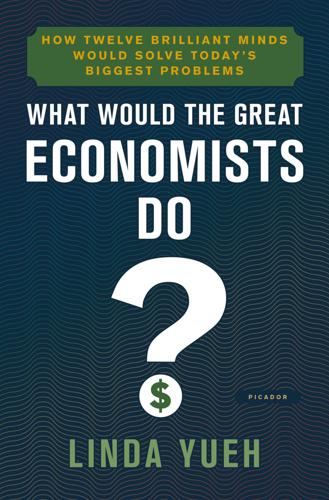
What Would the Great Economists Do?: How Twelve Brilliant Minds Would Solve Today's Biggest Problems
by
Linda Yueh
Published 4 Jun 2018
So, prosperity is linked to globalization, particularly in the past few decades with the establishment in 1995 of the World Trade Organization (WTO), which has opened global markets. Globalization has linked all of us via the transmission of not just resources but also ideas from around the world. The concept of a bike-sharing programme in London can be picked up quickly around the world and become deployed by an app in Beijing, for instance. But, trade expansion is stalling and the multilateral system is becoming fragmented into an emerging system of regional and bilateral free trade agreements. Moreover, trade deals face voter backlash over the uneven benefits from globalization.
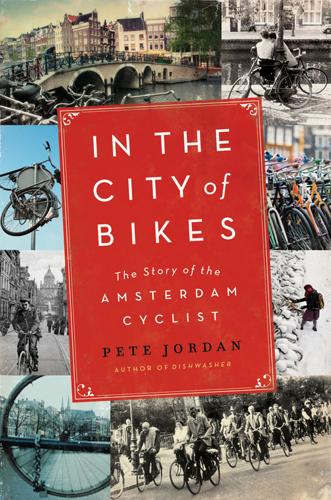
In the City of Bikes: The Story of the Amsterdam Cyclist
by
Pete Jordan
Published 20 Aug 2012
The Depo system hobbled along for a year or so and was no longer even functioning when the city finally pulled the plug on the program’s government subsidy. “It’s a shame that it was met with so much difficulty,” Schimmelpennink would later say. “But, on the other hand, it’s nice that in other cities it appears to work.” Since the demise of the Depo system, a great many bike-share programs in hundreds of cities worldwide—Paris, Montreal, Taipei, Barcelona, Melbourne, Buenos Aires, London, Washington, D.C., Munich, for example—have, indeed, succeeded. IN 2010—42 YEARS after having stepped down from office and just days shy of his 75th birthday—Schimmelpennink again won a seat on the city council, this time as a member of the Labor Party.

Lonely Planet Best of Spain
by
Lonely Planet
Published 1 Nov 2016
Slower trains head to Cádiz (€16, 1¾ hours, 15 daily), Huelva (€12, 1½ hours, three daily), Granada (€30, three hours, four daily) and Málaga (€44, two hours, 11 daily). 8 GETTING AROUND Seville offers a multitude of ways to get around, though walking still has to be the best option, especially in the centre. The Sevici (%902 011032; www.sevici.es) bike-sharing scheme has made cycling easy and bike lanes are now almost as ubiquitous as pavements. The tram has recently been extended to the station of San Bernardo but its routes are still limited. Buses are more useful than the metro to link the main tourist sights. The recent ‘greening’ of the city has made driving increasingly difficult as whole roads in the city centre are now permanently closed to traffic; park on the periphery.
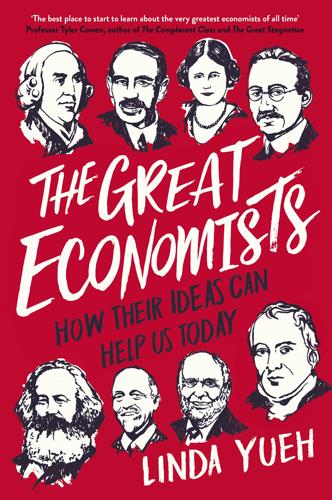
The Great Economists: How Their Ideas Can Help Us Today
by
Linda Yueh
Published 15 Mar 2018
So, prosperity is linked to globalization, particularly in the past few decades with the establishment in 1995 of the World Trade Organization (WTO), which has opened global markets. Globalization has linked all of us via the transmission of not just resources but also ideas from around the world. The concept of a bike-sharing programme in London can be picked up quickly around the world and become deployed by an app in Beijing, for instance. But, trade expansion is stalling and the multilateral system is becoming fragmented into an emerging system of regional and bilateral free trade agreements. Moreover, trade deals face voter backlash over the uneven benefits from globalization.

The Great Firewall of China
by
James Griffiths;
Published 15 Jan 2018
An extreme version of a credit score, China’s social credit system uses a variety of data, gleaned from apps including WeChat and Alibaba’s Alipay, to build a trustworthiness profile of the user, and this affects how likely that person is to receive a loan or be able to rent a car or even use a bike-sharing service.11 The system derives from a plan announced by the State Council in 2014 to establish a nationwide tracking and credit system, combining financial and other data with people’s fingerprints and biometrics. In the words of journalist Mara Hvistendahl: For the Chinese Communist Party, social credit is an attempt at a softer, more invisible authoritarianism.

Brazillionaires: The Godfathers of Modern Brazil
by
Alex Cuadros
Published 1 Jun 2016
“Lots of people cried from the emotion of it all,” she said. “I cried.” As far as she could see, though, the government had failed to deliver its utopia. Money meant to integrate favelas with the rest of the city dried up while projects for the 2016 Olympics plowed ahead. Ipanema and Copacabana got a fancy bike-share system even as pacification police found themselves overextended, backsliding into their old role fighting bandidos. Daiene introduced me to the owner of a clothing shop that sold T-shirts reading FAVELA: FAÇO PARTE DELA, “Favela: I’m a part of it.” Sales had surged after the UPPs came, as kids with money from the beachy south side felt safe enough to visit for the first time ever.

Lonely Planet Amsterdam
by
Lonely Planet
MacBike ( GOOGLE MAP ; %020-620 09 85; www.macbike.nl; De Ruijterkade 34b; bike rental per 3/24hr from €11/14.75; h9am-5.45pm; j1/2/4/5/9/13/16/17/24 Centraal Station) Among the most touristy of companies (bikes are bright red, with logos), but has a convenient location at Centraal Station, plus others at Waterlooplein and Leidseplein. Big assortment of bikes available. Bike Sharing & Apps Donkey Republic (www.donkey.bike) Unlock/lock a bike via Bluetooth. Rates per 24 hour are €12. You'll need to return the bike to the same location, or pay €20 extra. FlickBike (www.flickbike.nl) Locate bikes around town via this app; rental per 30 minutes costs €1. Scan the QR code to unlock/lock the bike.

Build: An Unorthodox Guide to Making Things Worth Making
by
Tony Fadell
Published 2 May 2022
It relies on a swift dive across the chasm and then a long, meandering doggy paddle to profitability through a huge pool of capital. That can doom a company just as fatally as falling into the chasm on the first step. A few years ago the major cities of the world were flooded with scooter- and bike-sharing companies. All at once it seemed like they were everywhere. And that was the approach—these companies wanted to get as much market share as they could in order to acquire customers. They had enough capital that they just bought up whatever bikes they could and expanded and expanded and expanded.

The Long History of the Future: Why Tomorrow's Technology Still Isn't Here
by
Nicole Kobie
Published 3 Jul 2024
In 2005, while buildings were still being planned in Songdo, Kim promised a world organised around a cutting-edge new technology: RFID cards. As we saw in the chapter on cyborg technology, radio frequency identification is the wizardry that lets you wave a card with an embedded chip to pay without typing in a PIN. That would be used by residents not only to open their front doors, but also to access transport such as buses or bike shares, pay parking machines or even just see a movie, Kim said at the time. He told the New York Times that the system would be anonymous, and cards could easily be cancelled if lost to gain access to your own front door. Songdo also promised citizens would have the ability to make video calls, stream video content anytime and have access to their digital content anywhere in the city.

Retrofitting Suburbia, Updated Edition: Urban Design Solutions for Redesigning Suburbs
by
Ellen Dunham-Jones
and
June Williamson
Published 23 Mar 2011
The most successful and sustainable retrofits will be beautiful, durable, culturally significant, and built to meet high standards of environmental performance both in the public spaces and the buildings. Some of the newest innovations in suburban retrofitting that we are most enthusiastic about are:• Movements to support biking as well as bike sharing and car sharing • Interest in suburban agriculture both in private yards and collective specialized farms • “Greyfield” property audits, sometimes including inventorying existing assets’ potential contributions to district energy, waste, and water systems • Reinvigorated discourse about public space and ecology in suburbs • Lifelong Communities and other efforts to better accommodate older suburbanites • Temporary, but high impact, re-inhabitations like pop-up cities, Park(ing) Day, and Build A Better Block • The Red Fields to Green Fields initiative • The Federal HUD-DOT-EPA Partnership for Sustainable Communities We hope that you, our readers, will be inspired to constructively engage in the effort to respond to the “crisis of imagination” in suburban form and to take an active part in shaping what we continue to believe will be THE big design and development project for this century: creatively retrofitting—though re-inhabitation, redevelopment, and regreening—both the products and the mechanisms of sprawl.
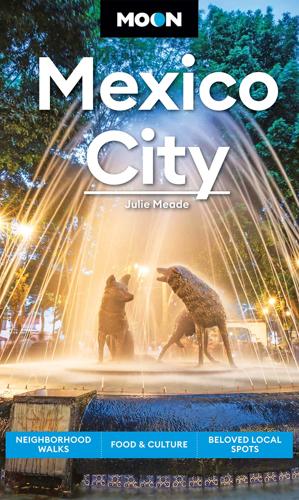
Moon Mexico City: Neighborhood Walks, Food & Culture, Beloved Local Spots
by
Julie Meade
Published 7 Aug 2023
Sundays on the Paseo de la Reforma BIKE MEXICO CITY Not long ago, riding a bicycle in central Mexico City was a death-defying proposition, braved by only a few die-hard cyclists and those who had no more efficient means of getting around. Today, the city has cordoned off a network of new bike lanes throughout the central neighborhoods and, most impressive, rolled out a massive (and still growing) urban bike-share program called Ecobici. Now it’s common to see riders of every stripe pedaling bright red Ecobici five-speeds along the Paseo de la Reforma or through the Roma on their way to work, restaurants, or the movies. Ecobici kiosk on the Paseo de la Reforma Annual subscriptions to Ecobici cost less than US$30, though visitors can register for a temporary membership with a valid ID (passport or resident visa) and a credit card, for about US$20 for a week or US$10 for three days.

It's Not TV: The Spectacular Rise, Revolution, and Future of HBO
by
Felix Gillette
and
John Koblin
Published 1 Nov 2022
“We are very patient for a very impatient medium.” * * * • • • ON MARCH 12, 2012, Girls debuted at the South by Southwest festival in Austin, Texas—the first time the gathering of media and film insiders had been used to launch a new TV series. For the occasion, HBO sponsored a free bike share and organized a Girls-branded scavenger hunt, directing followers around town via clues on Twitter to collect free tacos and beer. On a warm Monday afternoon, the young cast of Girls strolled down a red carpet leading into Austin’s Paramount Theater. Inside, the network played the first three episodes.
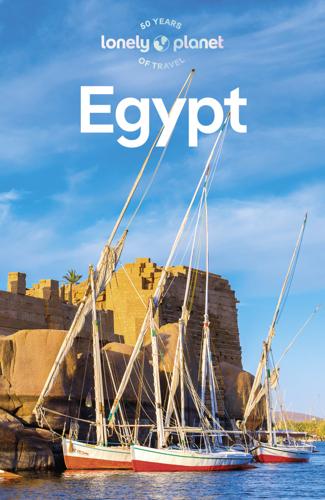
Lonely Planet Egypt
by
Lonely Planet
In November 2022 Sharm El Sheikh hosted the UN’s Climate Change Conference (COP27), and in preparation, the city cleaned up its act, planting trees, resurfacing bike lanes and upgrading a pedestrian promenade along busy Peace Rd. But was Sharm’s show of sustainability just a smoke screen? Many resorts tout their eco-friendly practices while stocking single-use toiletries. Posters show routes for electric buses, but they’ve been shipped to Cairo. Baddel, a bike-sharing scheme, might be up and running, but we saw only two cycles in the whole city and couldn’t get the app to work with Egyptian or international phone numbers. Even if Sharm appears to have taken a step back post-COP, perhaps at least the seed has been planted. Snorkelling the Sea FISH OF ALL STRIPES You don’t have to get scuba certified to enjoy the underwater aquarium in the sea around Sharm El Sheikh.
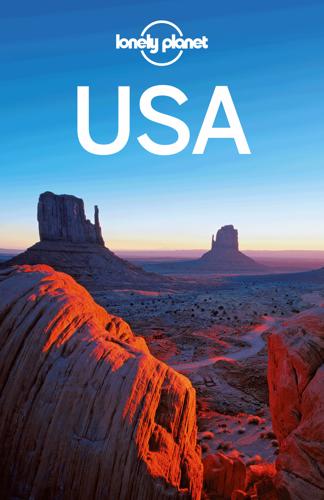
USA Travel Guide
by
Lonely, Planet
ART-LOVING BOSTON 3 Boston’s Museum of Fine Arts (Click here) opened a spectacular new multimillion-dollar Art of the Americas wing with over 50 galleries of American art, covering everything from pre-Columbian to contemporary American works. BIKE-FRIENDLY NATION 4 Cities across the country have added adding hundreds of miles of bike lanes. Boston and DC even have bike-sharing programs, making it easy to go for a pedal. NAPA IS NOW 5 Downtown Napa (Click here) is popping, with enticing new restaurants and the now fully functioning Oxbow Market, with artisinal bakers, cheesemongers, and yet more sustainable restaurants. A MOVEABLE FEAST 6 Denver’s latest trend is its underground dining, held in random locations like plane hangars, fields and warehouses with top chefs and theme menus (see www.hushdenver.com).
…
Gay cycling enthusiasts should check the website of Fast & Fabulous (www.fastnfab.org) , a gay cycling club that organizes long weekend rides. For bike rentals, try Central Park’s Loeb Boathouse Offline map Google map or locate a rental shop on the comprehensive website Bike New York (www.bikenewyork.org) . The Bloomberg administration is planning its own large-scale bike-sharing program throughout the city. Water Sports This is an island, after all, and as such there are plenty of opportunities for boating and kayaking. The Downtown Boathouse Offline map Google map ( www.downtownboathouse.org; Pier 40, near Houston St; 9am-6pm Sat & Sun May 15-Oct 15) offers free 20-minute kayaking (including equipment) in the protected embayment of the Hudson River.
…
Taxi Taxis are plentiful; expect to pay between $10 and $25 between two points within the city limits. Flag taxis on the street, find them at major hotels or call Metro Cab ( 617-242-8000) or Independent ( 617-426-8700) . GRAB A BIKE In the summer of 2011 Boston launched Hubway (www.thehubway.com) , a new bike sharing program with 600 bicycles stationed at 60 kiosks throughout the city. The program is expected to grow tenfold in the next couple of years. The good: it’s cheap and convenient – $5 unlocks a bike for you to use all day; you can pick it up at one kiosk and drop it back at another. The bad: roads are narrow, bike lanes few and Boston traffic aggressive.

The Cryptopians: Idealism, Greed, Lies, and the Making of the First Big Cryptocurrency Craze
by
Laura Shin
Published 22 Feb 2022
At one point, when he was in Los Angeles doing Thai massage, Litecoin went from $2 to $40, netting him $17,000. That was a year of living expenses! During a short-lived stint trying to become “the Bitcoin guy for Ecuador,” he completed a master’s in digital currency from the University of Nicosia and wrote his thesis on a bike-sharing economy that functioned via decentralized autonomous corporations. The motivation? He wanted to contribute to a world in which he could backpack around but wear nice shoes to a wedding without owning a pair. After hearing about Slock.it, he emailed the company multiple times with his paper, a video of himself, and an offer to work for free.
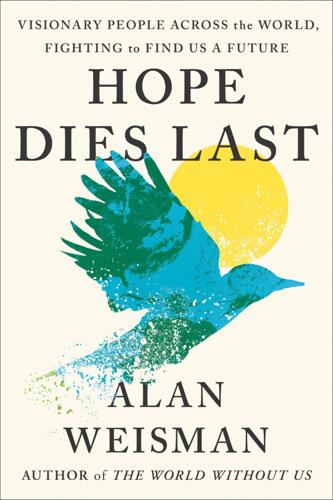
Hope Dies Last: Visionary People Across the World, Fighting to Find Us a Future
by
Alan Weisman
Published 21 Apr 2025
A 19th-century botanical garden was revived next to a futuristic museum, Parque Explora, part of a complex including the Universidad de Antioquia and Ruta N: three connected, vine-draped modern towers made from nontoxic building materials, designed to save water, utilize natural lighting, and incubate 200 tech startups. Throughout town, helmeted riders on blue EnCicla bicycles, a public bike-sharing program, zip down leafy median strips, planter-lined sidewalks, and 11 new pedestrian promenades lush with vegetation. The forester with flowing gray hair in charge of these transformed green corridors, Mauricio Jaramillo, explains, “We plant to lower the temperature. We start with tall trees—silk tassels and flowering acacias with wide, shady crowns.
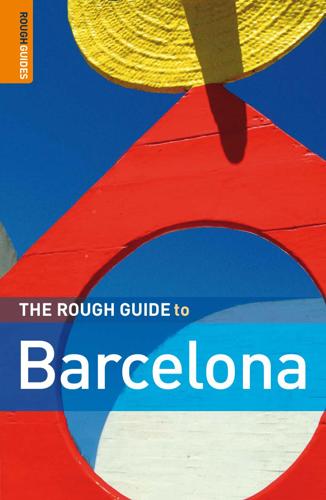
The Rough Guide to Barcelona 8
by
Jules Brown
and
Rough Guides
Published 2 Feb 2009
Esport Ciclista Barcelona Wwww.ecbarcelona .com. Founded in 1929, the cycle sports club organizes the Escalada a Montjuïc – details available on their website. SPORTS AND OUTDOOR ACTIVITIES Cycling is being heavily promoted by the city authorities as a means of transport. There’s a successful bike-sharing scheme (known as Bicing), while around 160km of cycle paths traverse the city, with plans to double the network in the future. All locals have yet to embrace the bike, and some cycle paths are still ignored by cars or are clogged with pedestrians, indignantly reluctant to give way to two-wheelers.
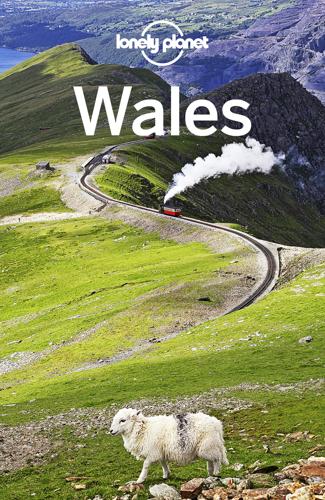
Lonely Planet Wales
by
Anna Kaminski;Hugh McNaughtan
FlightLink Wales (%01446-728 500; www.flightlinkwales.com) has the airport taxi concession, providing minibus shuttles to the city for £33. BICYCLE Cardiff Council’s transport website (www.keepingcardiffmoving.co.uk) has lots of cycling information, including lists of bike shops and route maps. The city also has a bike-share scheme called nextbike (%029-2248 1736; www.nextbike.co.uk); download its app and use it to unlock bikes parked in stations positioned around the city (£1 per 30 minutes, or £10 per 24 hours). CAR & MOTORCYCLE Cardiff doesn’t pose many difficulties for drivers, though most central-city streets between Westgate St, Castle St and St David’s are closed to traffic, meaning a cross-centre car journey often takes longer than the walk because of the circuitous, around-the-houses vehicular detour.

The Power Law: Venture Capital and the Making of the New Future
by
Sebastian Mallaby
Published 1 Feb 2022
Its regular fans included Ben Horowitz, co-founder of a16z, and Ron Conway, the super-angel who had backed Google. And this fusing of sports and technology finance operated in two ways: the venture capitalists rooted for the Warriors, and the Warriors became venture capitalists. Kevin Durant, the team’s star forward, assembled a portfolio of some forty startups, ranging from the bike-sharing enterprise LimeBike to the food-delivery app Postmates. Andre Iguodala, the six-foot-six defensive specialist, built a similar empire, while a retired Warrior, David Lee, was recruited by a VC partnership. Steph Curry, the Golden State’s transcendent talent, owned a piece of the picture-sharing app Pinterest.

Moon Portugal
by
Carrie-Marie Bratley
Published 15 Mar 2021
In addition to trails in parks and reserves, there are regional designated hiking and cycling tracks, such as the Via Algarviana (www.viaalgarviana.org) in the Algarve and the Vicentine Route (Rota Vicentina) (www.rotavicentina.com) in the Alentejo, with networks of well-mapped and signed routes. Many towns also have eco-vias or ciclovias (designated cycling tracks) and public bike-sharing schemes. The website of the national tourism board, Turismo de Portugal (www.visitportugal.com), has pages on cycling and walking in Portugal. The website of the tour company Portugal Bike Tours (www.portugalbike.com) provides detailed information on cycling routes in Portugal. Walking Madeira’s Levadas Walking the levadas (ancient irrigation channels) in Madeira can be challenging.

The Rough Guide to Brussels 4 (Rough Guide Travel Guides)
by
Dunford, Martin.; Lee, Phil; Summer, Suzy.; Dal Molin, Loik
Published 26 Jul 2010
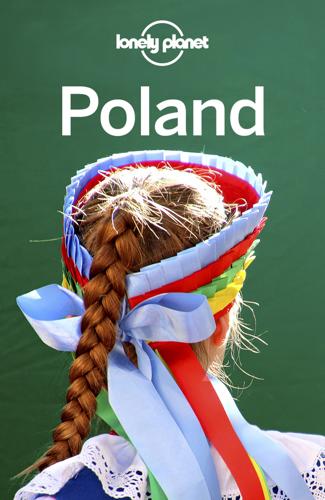
Lonely Planet Poland
by
Lonely Planet
Dwa Koła (%12 421 5785; www.dwakola.internetdsl.pl; ul Józefa 5; per hr/day 7/50zł; h10am-6pm; j6, 8, 10, 13) Rents bikes, including with children’s seats, by the hour or the day. Krk Bike Rental Rents city bikes for puttering around town, as well as mountain bikes (per hour/day 12/60zł) and electric bikes (20/100zł). Also runs 3½-hour city cycling tours (per person 90zł, minimum three people). Wavelo Kraków City Bike (%12 290 3333; www.en.wavelo.pl) City-wide bike-share programme. Pay as you go from 0.19zł a minute, or rent for 12 hours at 29zł. For long-term visitors, there are monthly schemes too. CAR & MOTORCYCLE Kraków’s cobblestoned roads are crowded with cars, and with trams and walking as two reasonable alternatives, there’s little point in driving around the city.

Lonely Planet France
by
Lonely Planet Publications
Published 31 Mar 2013
AÉROPORT PARIS-BEAUVAIS Navette Officielle (Official Shuttle Bus; 08 92 68 20 64, airport 08 92 68 20 66; adult €15) The Beauvais shuttle links the airport with the metro station Porte de Maillot in western Paris. See the airport website for details. Bicycle The Vélib’ Offline map Google map ( www.velib.paris.fr) bike-share scheme has revolutionised how Parisians get around. There are some 1800 stations throughout the city, each with anywhere from 20 to 70 bike stands. The bikes are accessible around the clock. To get a bike, you first need to purchase a daily/weekly subscription (€1.70/8). There are two ways to do this: either at the terminals (which require a credit card with an embedded smartchip) at docking stations or online.
…
Freescoot Offline map Google map ( 01 44 07 06 72; www.scooter-rental-paris.com; 63 quai de la Tournelle; bike/tandem half-day €10/22, day €15/32; 9am-1pm & 2-7pm Mon-Sat year-round, plus Sun mid-Apr–mid-Sep; Maubert-Mutualité) also rents scooters; no license is required for smaller scooters. AUTOLIB’ In December 2011 Paris launched the world’s first electric-car-share programme, Autolib’ (www.autolib.eu) . The premise is quite similar to Vélib’ (the bike-share scheme): you pay a subscription (day/week €10/15) and then rent a GPS-equipped car in 30-minute intervals and drop it off at one of the 1000 available stations when you’re done. Unfortunately, it’s really only good for short hops, because renting a car overnight would be exorbitant – the rates are €7 for the 1st half hour, €6 for the 2nd half-hour and €8 for subsequent intervals.

Lonely Planet China (Travel Guide)
by
Lonely Planet
and
Shawn Low
Published 1 Apr 2015
At the time of writing it was expected that sometime after 2015 the subway will extend here via the Summer Palace and Botanic Gardens. 2Activities Cycling Beijing is flat as a pancake and almost every road has a dedicated cycle lane, meaning cycling is easily the best way to see the city; it’s especially fun to explore hutong areas by bike. Most hostels rent bikes. There are also bike rental depots around the Houhai Lakes. Look out too for the city's bike-sharing scheme. Details of how to use it can be found on the very useful, independently created website www.beijingbikeshare.com. Essentially, you need to take your passport, a ¥400 deposit and an ordinary Beijing travel card (with at least ¥30 credit on it) to one of five bike-share kiosks (open 9.30 to 11.30am and 1.30pm to 4pm, Monday to Friday) in order to register. The two most handy kiosks are by Exit A of Dongzhimen subway station and by Exit A2 of Tiantandongmen subway station.

Lonely Planet Western Balkans
by
Lonely Planet
,
Peter Dragicevich
,
Mark Baker
,
Stuart Butler
,
Anthony Ham
,
Jessica Lee
,
Vesna Maric
,
Kevin Raub
and
Brana Vladisavljevic
Published 1 Oct 2019
Expect lousy road conditions including open drains, some abysmal driving from fellow road users, and roads that barely qualify for the title. Organised groups head north for mountain biking, and cyclists are even spotted cycling the long and tough Korça–Gjirokastra road. Shkodra, Durrës and Tirana are towns where you’ll see locals embracing the bike, and Tirana even has bike lanes and a bike-sharing scheme! BUS Bus and furgon are the main forms of public transport in Albania. Fares are low, and you either pay the conductor on board or when you hop off, which can be anywhere along the route. Municipal buses operate in Tirana, Durrës, Shkodra, Berat, Korça and Vlora, and trips usually cost 40 lekë.

Coastal California
by
Lonely Planet
Maps & Online Resources Local bike shops can supply you with more cycling route ideas, maps and advice. »For online forums and reviews of mountain-biking trails throughout California, search DirtWorld.com (http://dirtworld.com) and MTBR.com (www.mtbr.com). » Adventure Cycling Association (www.adventurecycling.org) sells long-distance cycling route guides and touring maps, including the Pacific Coast Highway (PCH). » California Bicycle Coalition (www.calbike.org) links to free online cycling maps, bike-sharing programs and community bike shops. » California Association of Bicycling Organizations (www.cabobike.org) offers free bicycle touring and freeway access information online. »Find bicycle specialty shops, local cycling clubs, group rides and other special events with the League of American Bicyclists (www.bikeleague.org).

Hawaii Travel Guide
by
Lonely Planet
Alternative Transportation Avoid driving if you can walk, cycle or take public transportation. Public buses run limited, mostly commuter-focused routes on Maui, Kauaʻi, the Big Island and Molokaʻi. On Oʻahu, bus routes are more comprehensive, frequently running to many of the same places that visitors want to go. Look for a new bike-sharing program, Bikeshare Hawaii (www.bikesharehawaii.org), to be operational in Honolulu as soon as 2016. If you need to rent your own wheels during your trip, try to choose the most fuel-efficient vehicle. Book in advance for hybrid or biofueled cars, now offered by some major international car-rental agencies as well as local independent businesses that maintain small fleets of Toyota Priuses, biodiesel VW Beetles, Smart cars etc.

The Rough Guide to England
by
Rough Guides
Published 29 Mar 2018
Minicabs and apps Private minicabs are much cheaper than black cabs, but cannot be hailed from the street. They must be licensed and able to produce a TfL ID on demand. Apps like Hailo and Uber can come in handy, too, though at the time of going to print TfL had decided not to renew Uber's licence to operate in London; check for updates before you travel. BY bike Boris bikes The city’s cycle rental scheme – or Boris bikes, as they’re universally known, after former Mayor of London Boris Johnson – has over 700 docking stations across central London. With a credit or debit card, you can buy 24hr access for just £2. You then get the first 30min on a bike free, so if you hop from docking station to docking station you don’t pay another penny.
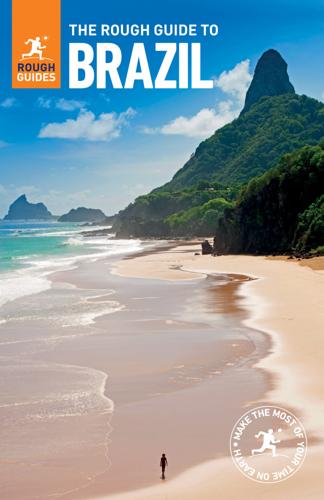
The Rough Guide to Brazil
by
Rough Guides
Published 22 Sep 2018

The Rough Guide to Mexico
by
Rough Guides
Published 15 Jan 2022
M$$ Zona Dorada and Nuevo Mazatlán see map page 384 Funky Monkey Hostel Cerro Boludo 112, Lomas de Mazatlán; 669 431 3421. Best budget option in the Golden Zone, a ten-minute walk from the beach but with a (tiny) outdoor pool and tranquil rooftop terrace as back-up. Offers comfy mixed dorms with a/c, a private double, free bikes, shared kitchen and decent breakfast included (fruits and pancakes). Dorms M$, double M$$ Inn Beach Hotel Mazatlán Camarón Sábalo 6291; http://theinnmazatlan.com. This classy hotel–timeshare complex oozes chic (or at least the Mazatlán equivalent thereof). Larger apartment units with kitchens and tiled floors are excellent value for families or small groups.

The Rough Guide to Australia (Travel Guide eBook)
by
Rough Guides
Published 14 Oct 2023
By scooter Given the heat and humidity, you might be tempted to travel by scooter; you can rent them from The Scooter Shop at 137 Stuart Highway (http://thescootershop.com.au) by the day, with rates not all that much more expensive for more powerful bikes (if your licence allows you to ride them, of course). By bike For cycle rental try The Scooter Shop. There’s also the bike-sharing Spinway scheme (http://spinwaynt.com.au), which allows you to just swipe your credit/debit card and then collect a bike from one of several stations around Darwin, including beside the visitor centre. By taxi Taxis work out at around $2 per kilometre but there are few cruising around: it’s often a good idea to book one, from a company such as Darwin Radio Taxis (13 10 08).
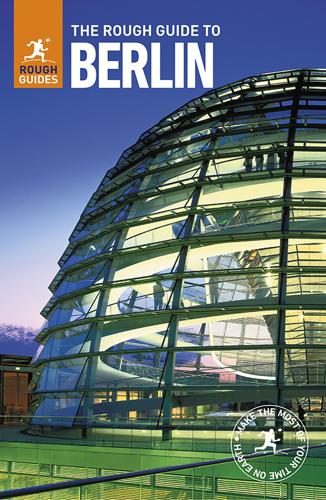
The Rough Guide to Berlin
by
Rough Guides

J.K. Lasser's Your Income Tax 2022: For Preparing Your 2021 Tax Return
by
J. K. Lasser Institute
Published 21 Dec 2021
. §1.132-9 (qualified transportation fringe benefits) Suspension of exclusion for bicycle commuting reimbursements for 2018 through 2025 IRC §132(f)(8) Permanent parity for transit benefits exclusion with parking IRC §132(f)(2), as amended by the Protecting Americans from Tax Hikes Act of 2015 (PATH Act) Rev. Proc. 2016-14, 2016-9 IRB 365 Bike share program is not excludable transportation benefit * Chief Counsel Information Letter 2013-0032 Valuation of benefits Reg. §1.61-21 Excludable non-personal-use vehicles Temp. Reg. §1.274-5T(k) Chauffeur bodyguard Reg. §1.132-5(m) 100% inclusion rule for cars Reg. §1.274-6T(c) Transit passes, parking benefits, and bicycle commuting reimbursements IRC §132(f) Reg. §1.132-9 Parking at non-temporary location * IRS Legal Memorandum 200105007 3.9 WORKING CONDITION FRINGE BENEFITS IRC §132(d) Reg. §1.132-5 Local lodging provided by employer may be excludable benefit REG-137589-07 (Proposed Regulation Sections 1.162-31, 1.262-1(2012)) Employees not taxed on employer-provided cell phones Notice 2011-72, 2011-38 IRB 407 Job-placement assistance Rev.